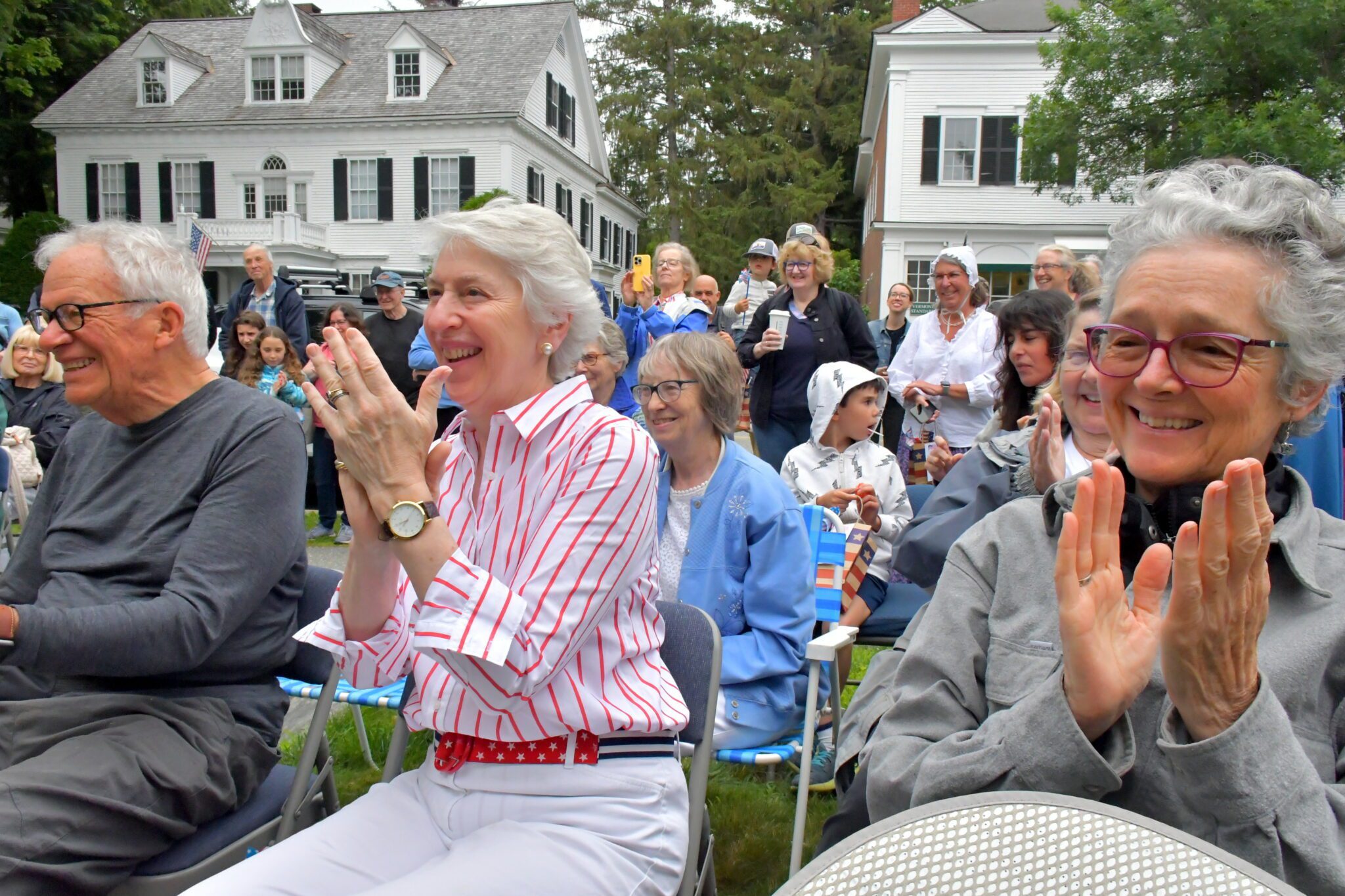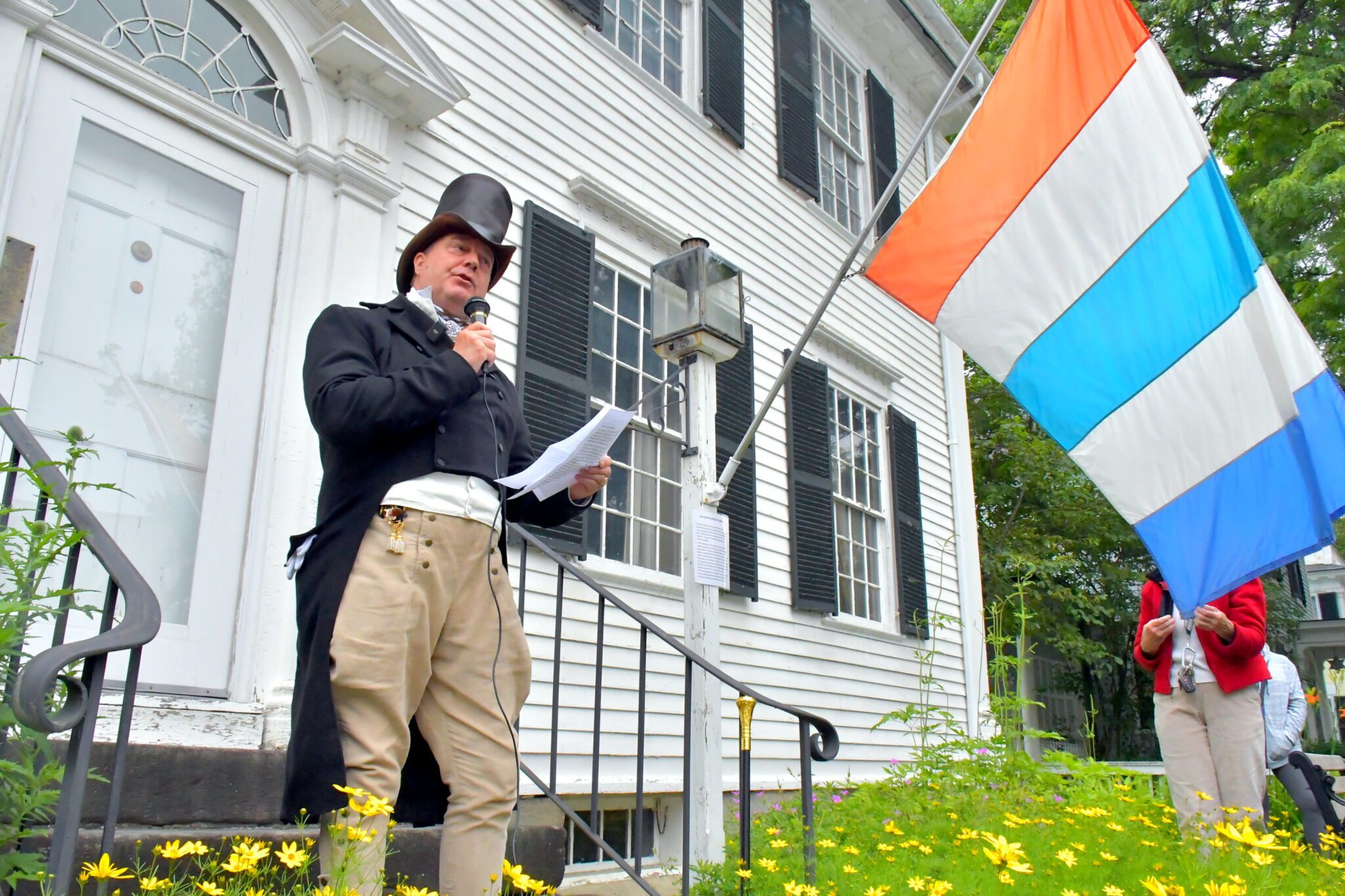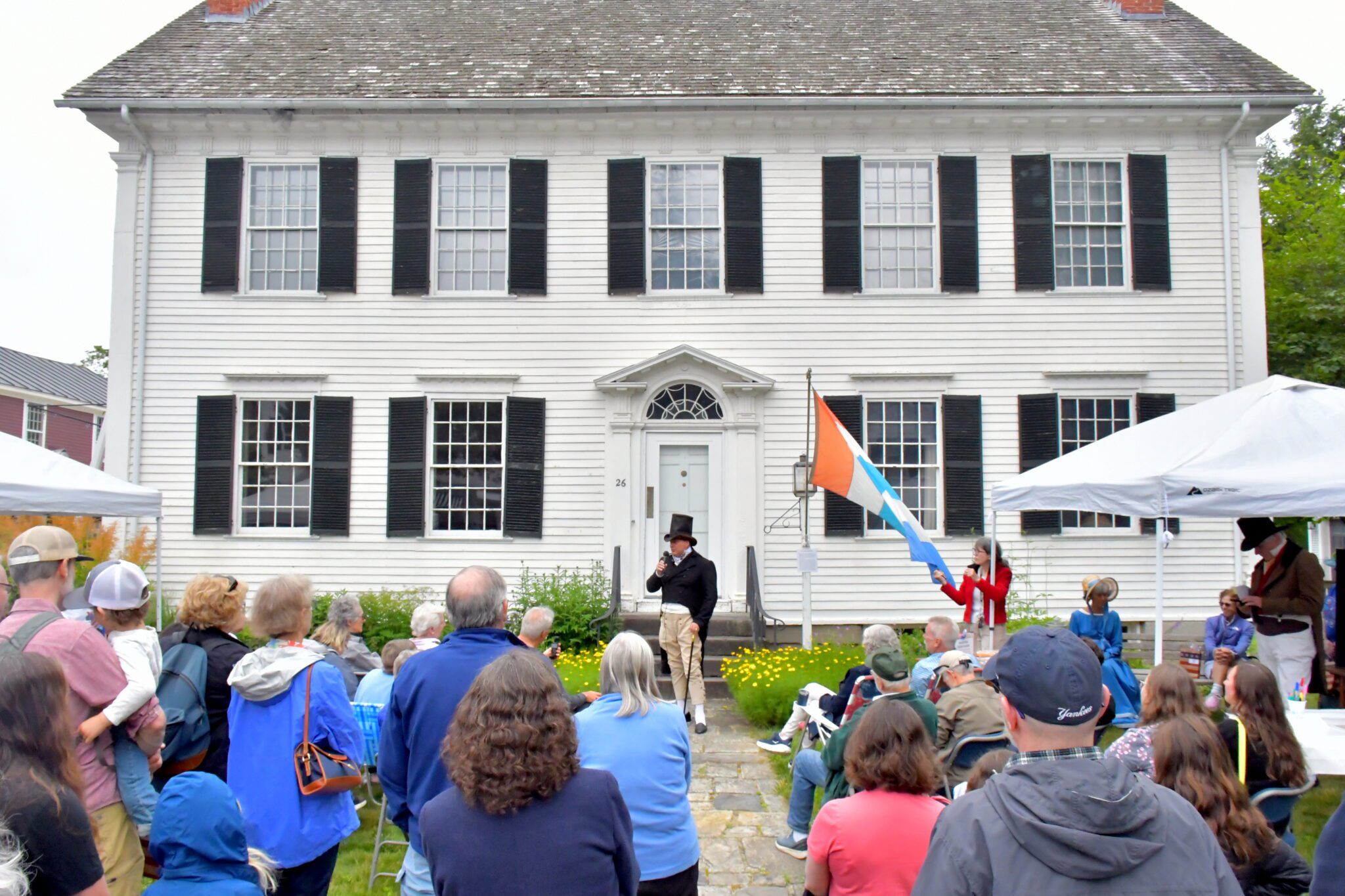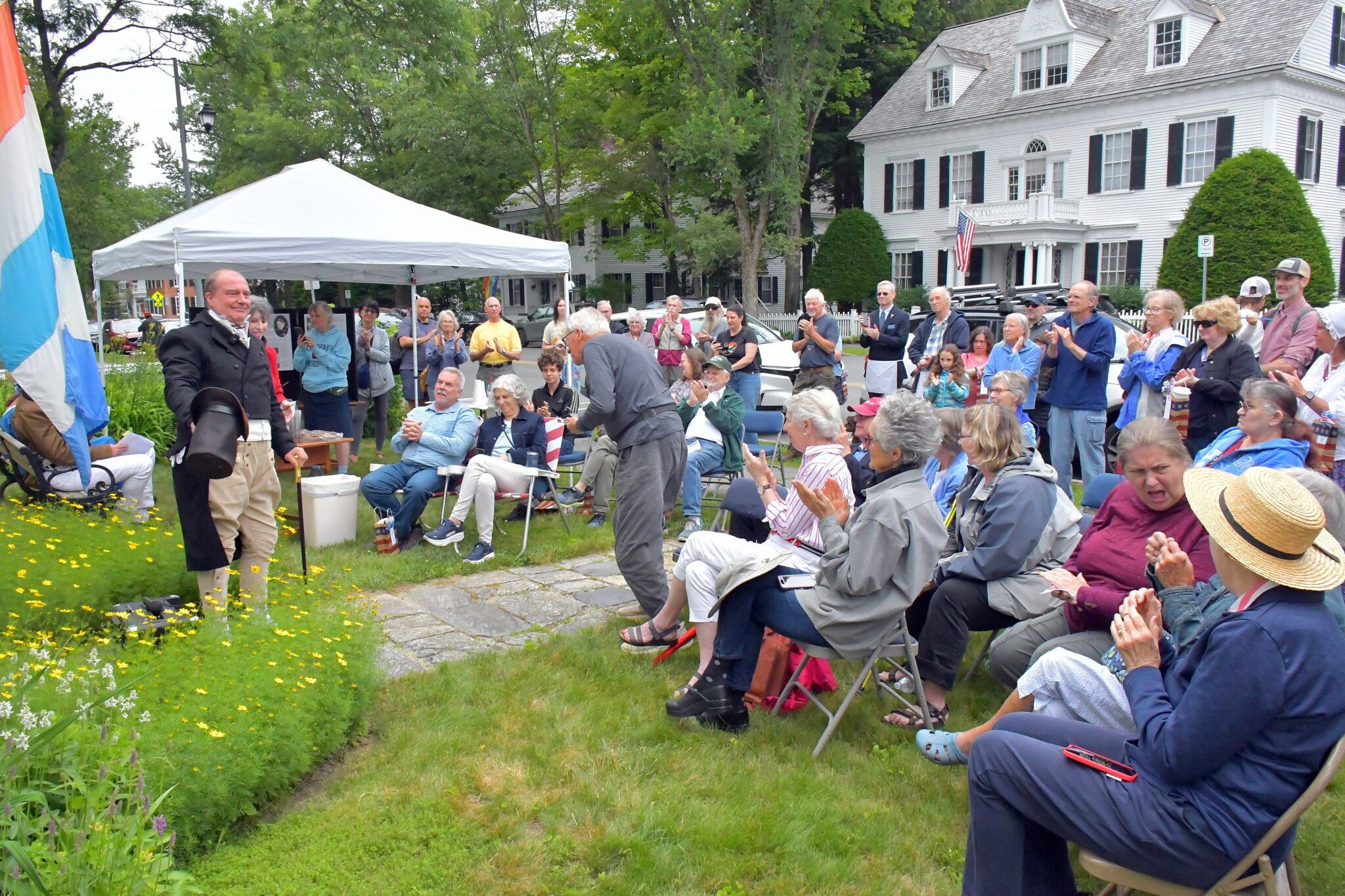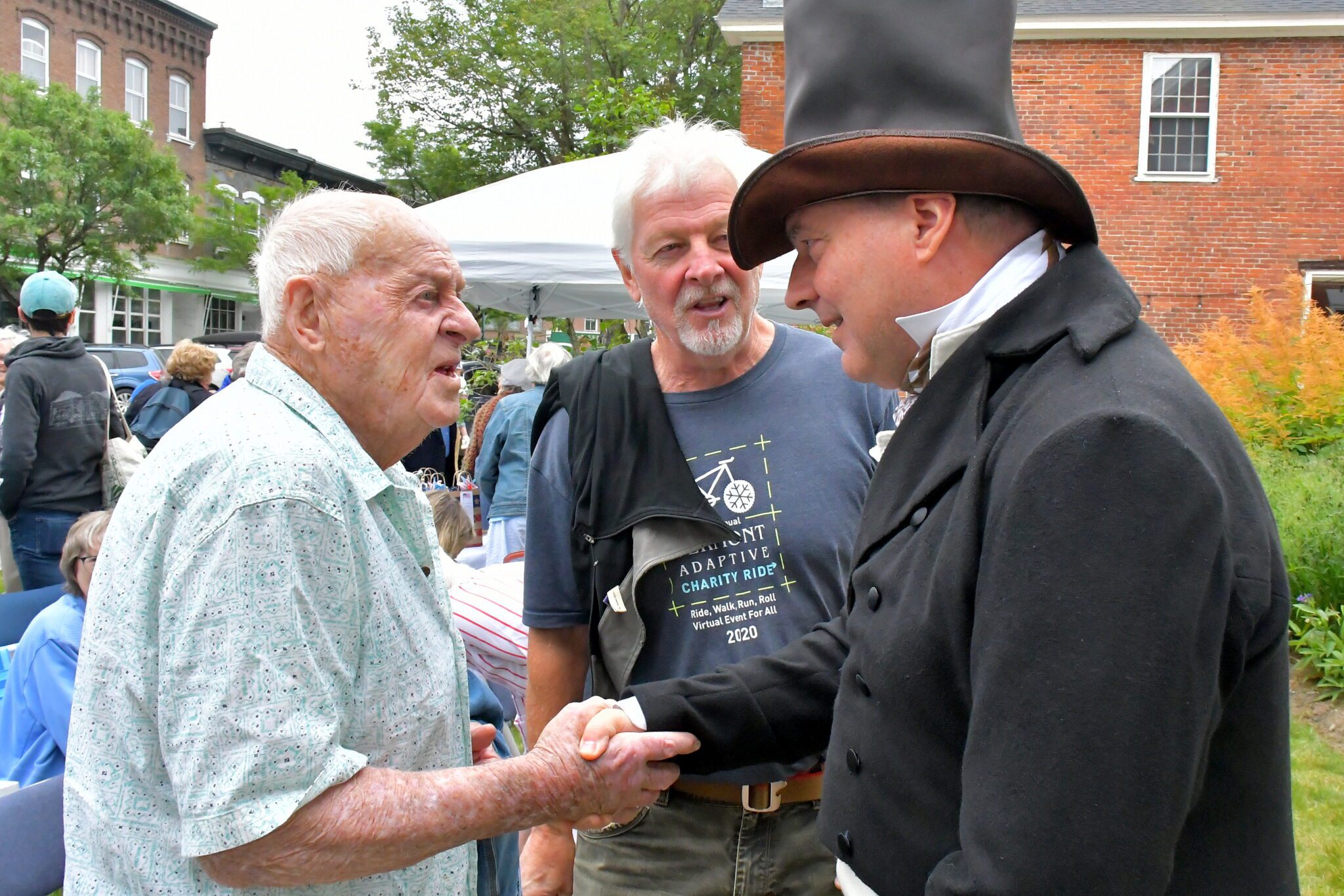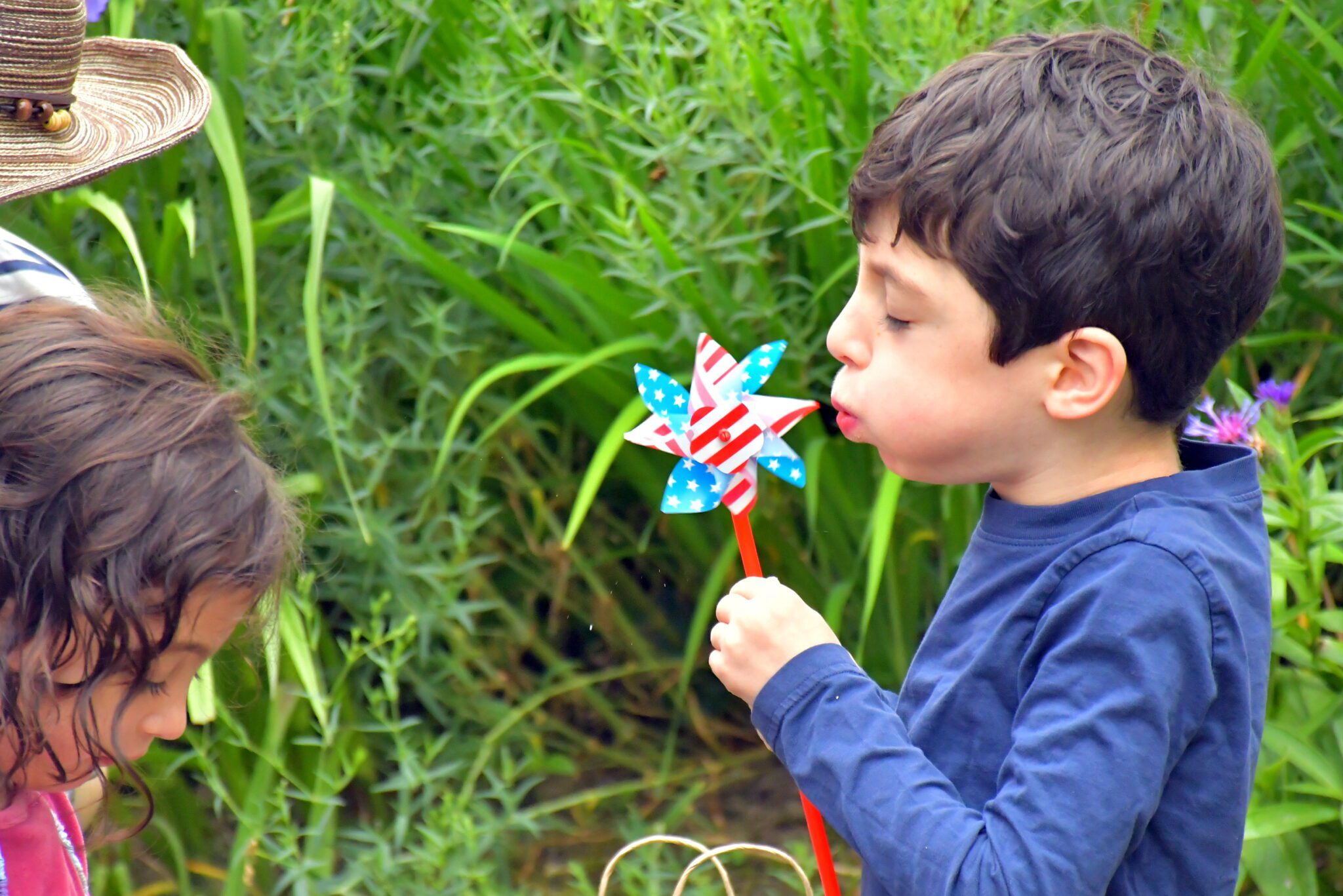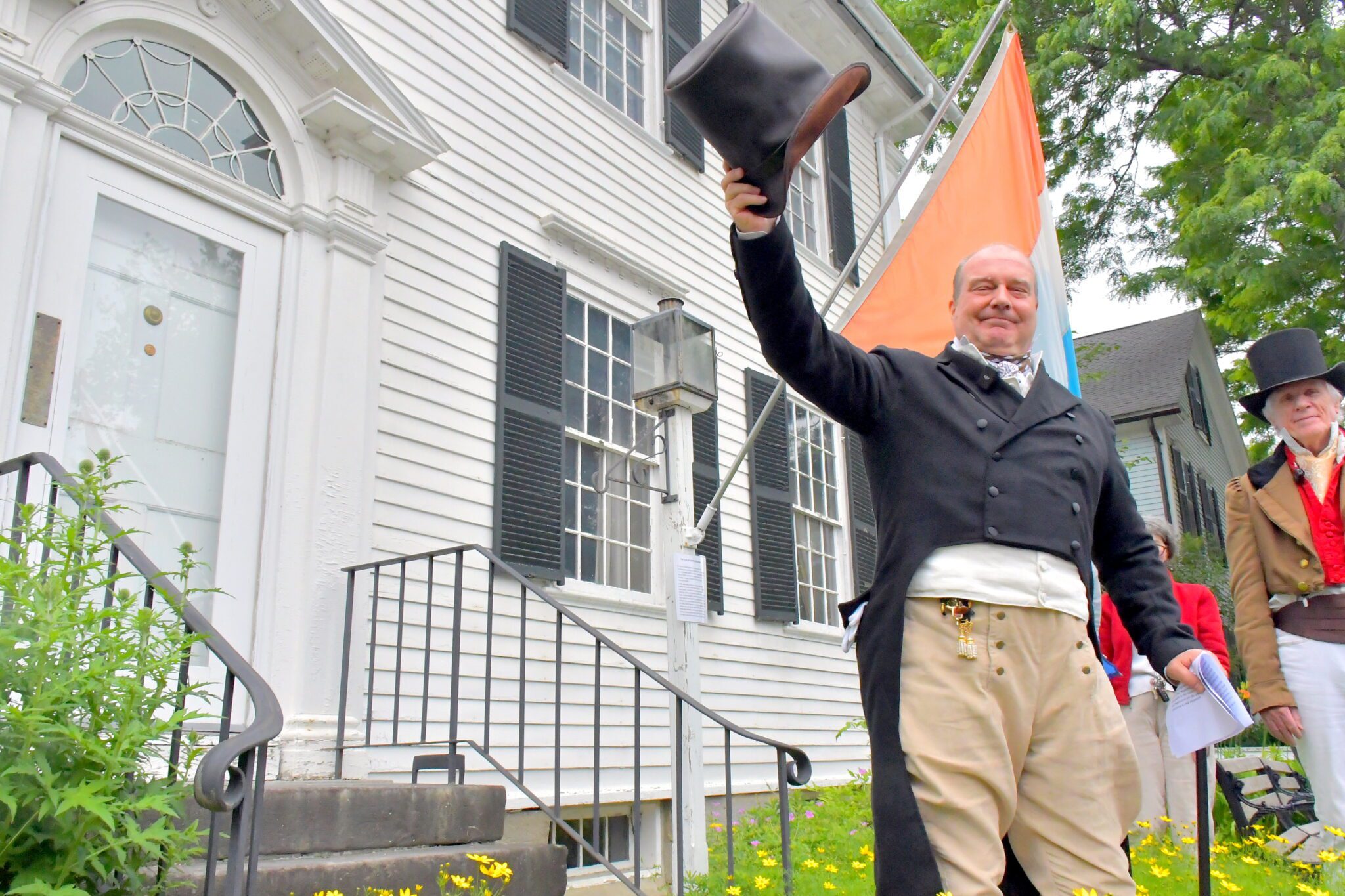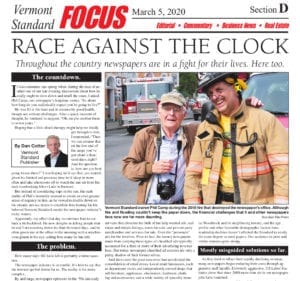
WOODSTOCK
- Barnard
- Bridgewater
- Hartland
- Killington
- Plymouth
- Pomfret
- Quechee
- Reading
- South Woodstock
- South Woodstock
- West Windsor
Please support the Vermont Standard Annual Appeal. Help now.
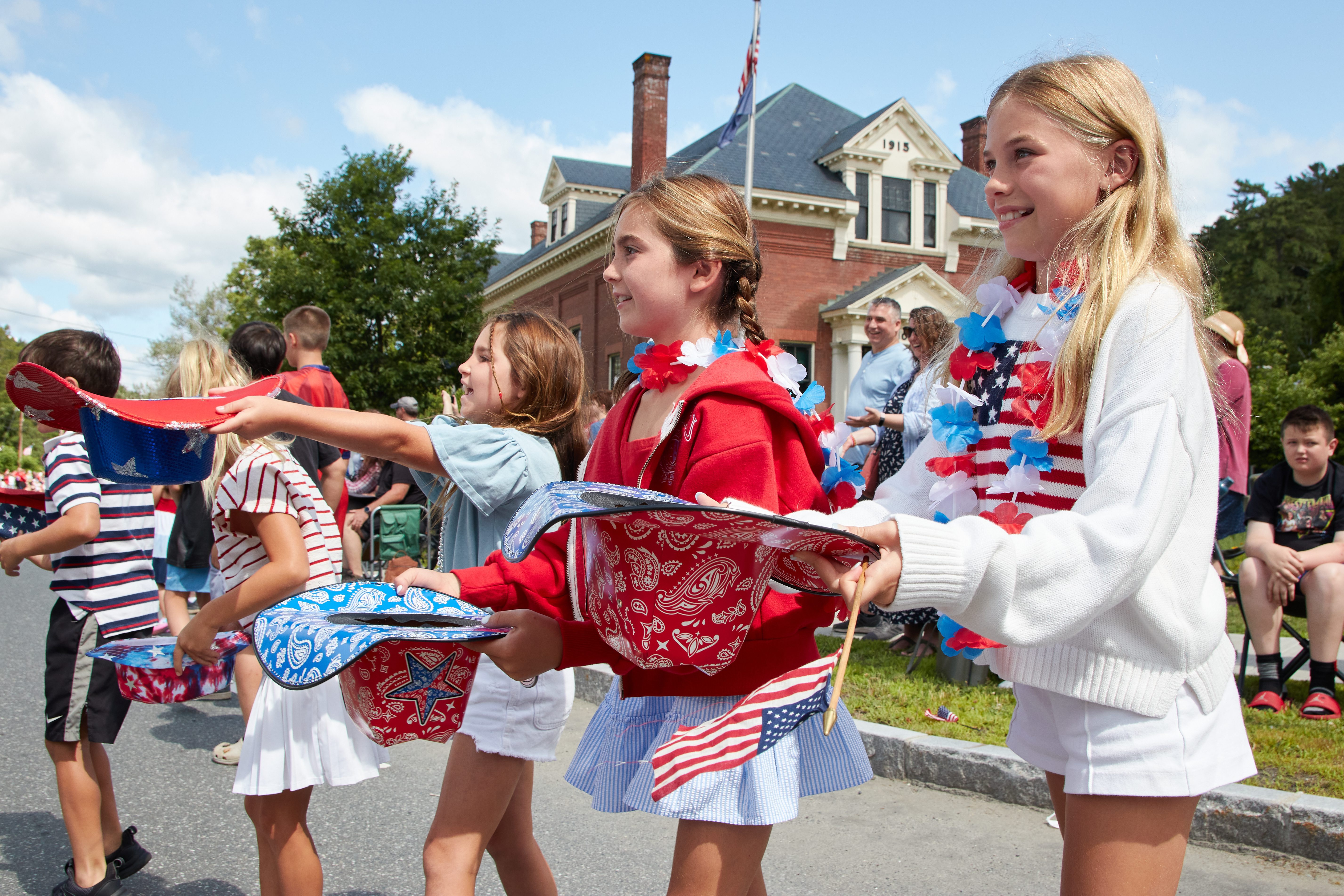
Coolidge Foundation held its annual Independence Day celebration
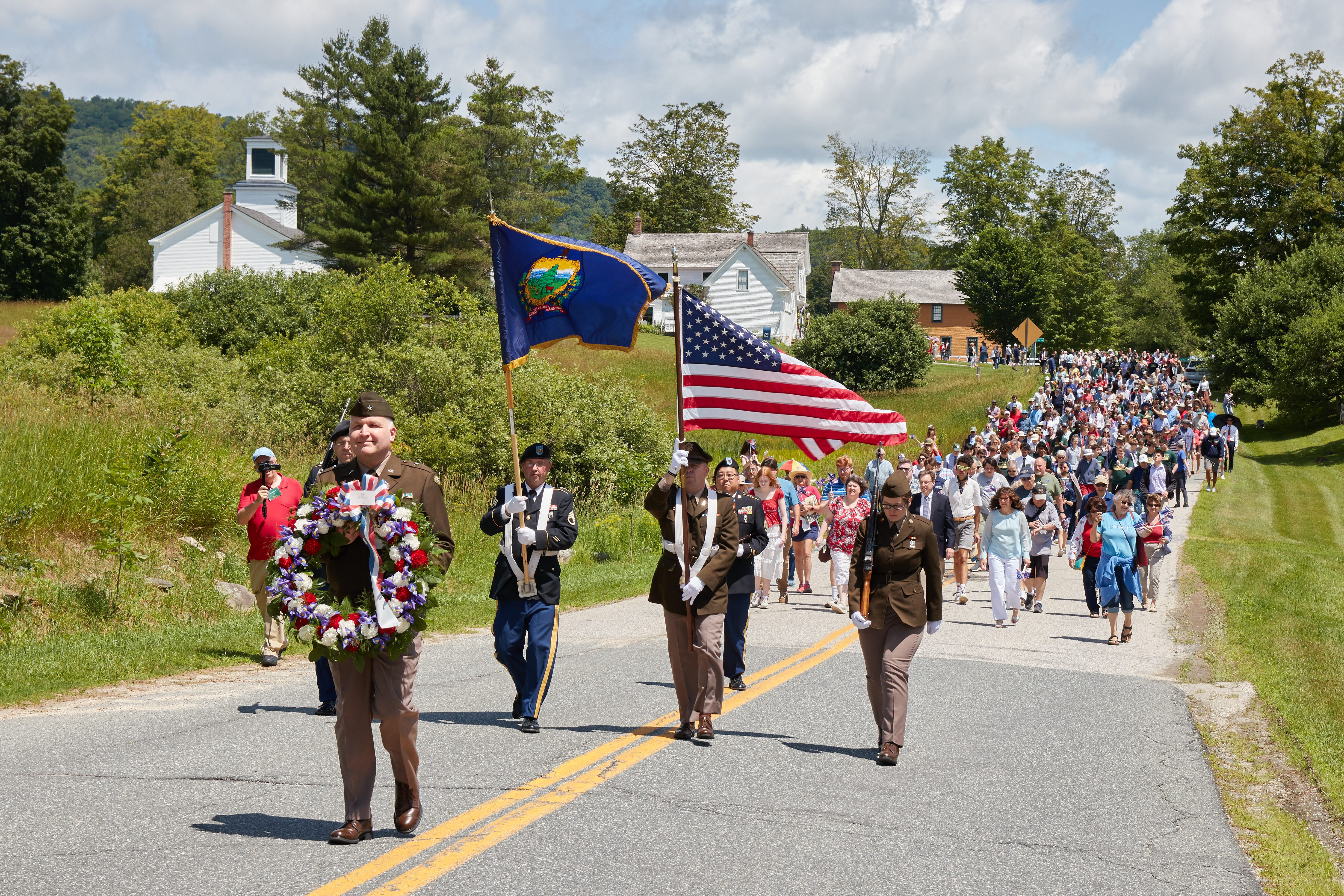
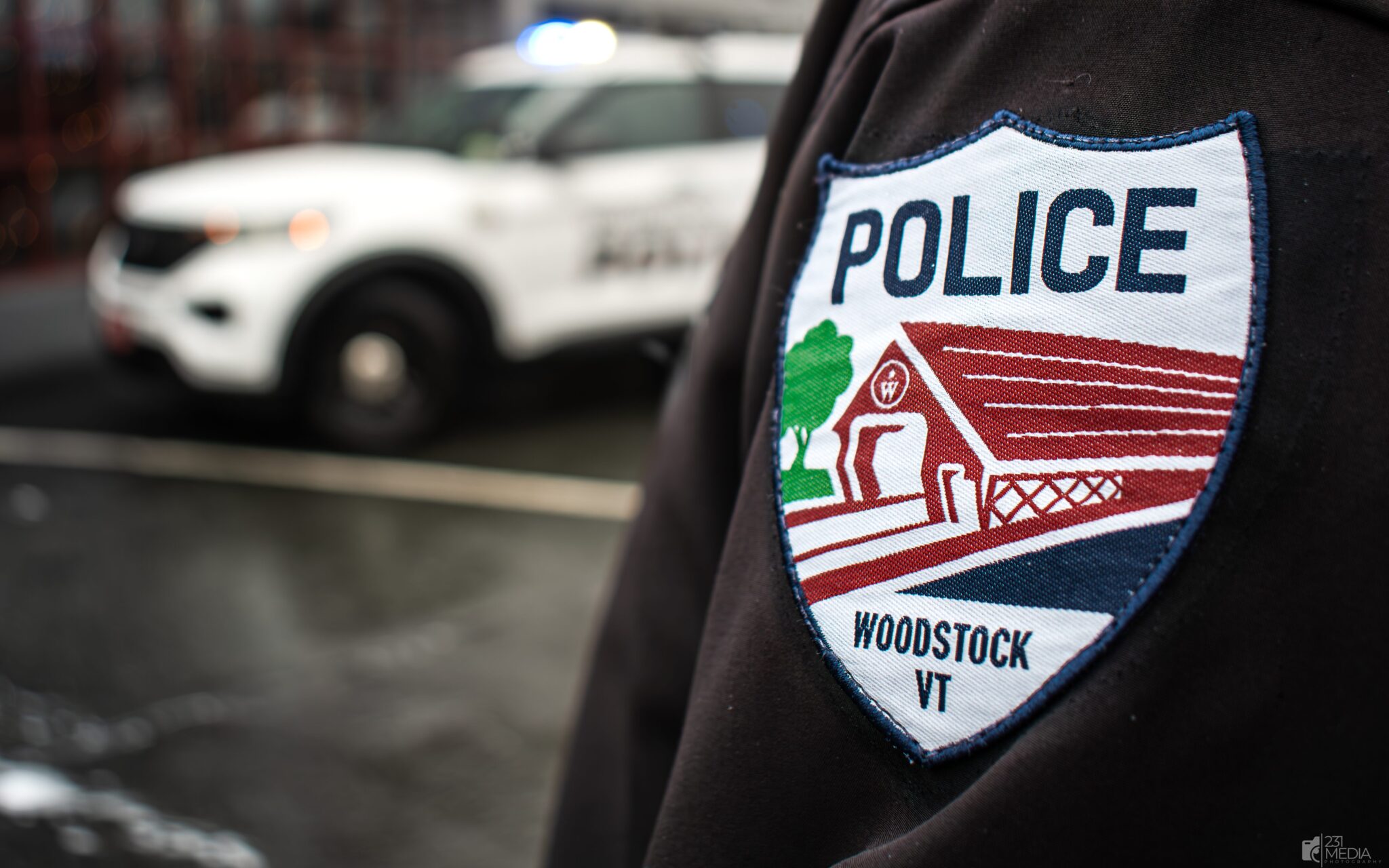
Peace Field faces another permit appeal, Mangalitsa prepares for fall reopening
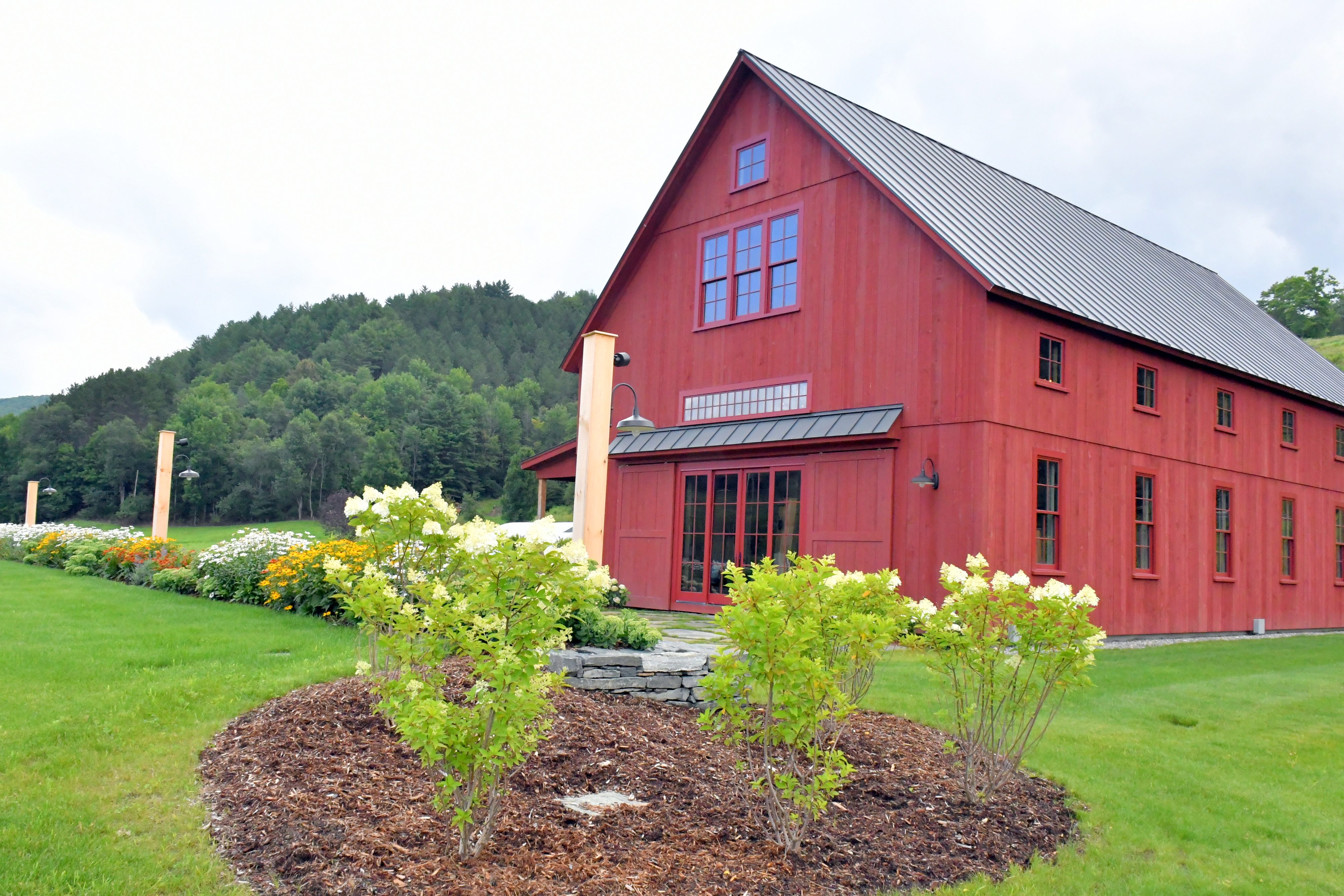
Woodstock water quality report released, Town now allocating funds to preemptively tackle issues

Sustainable Woodstock has an innovative plan to restore streambank near community garden
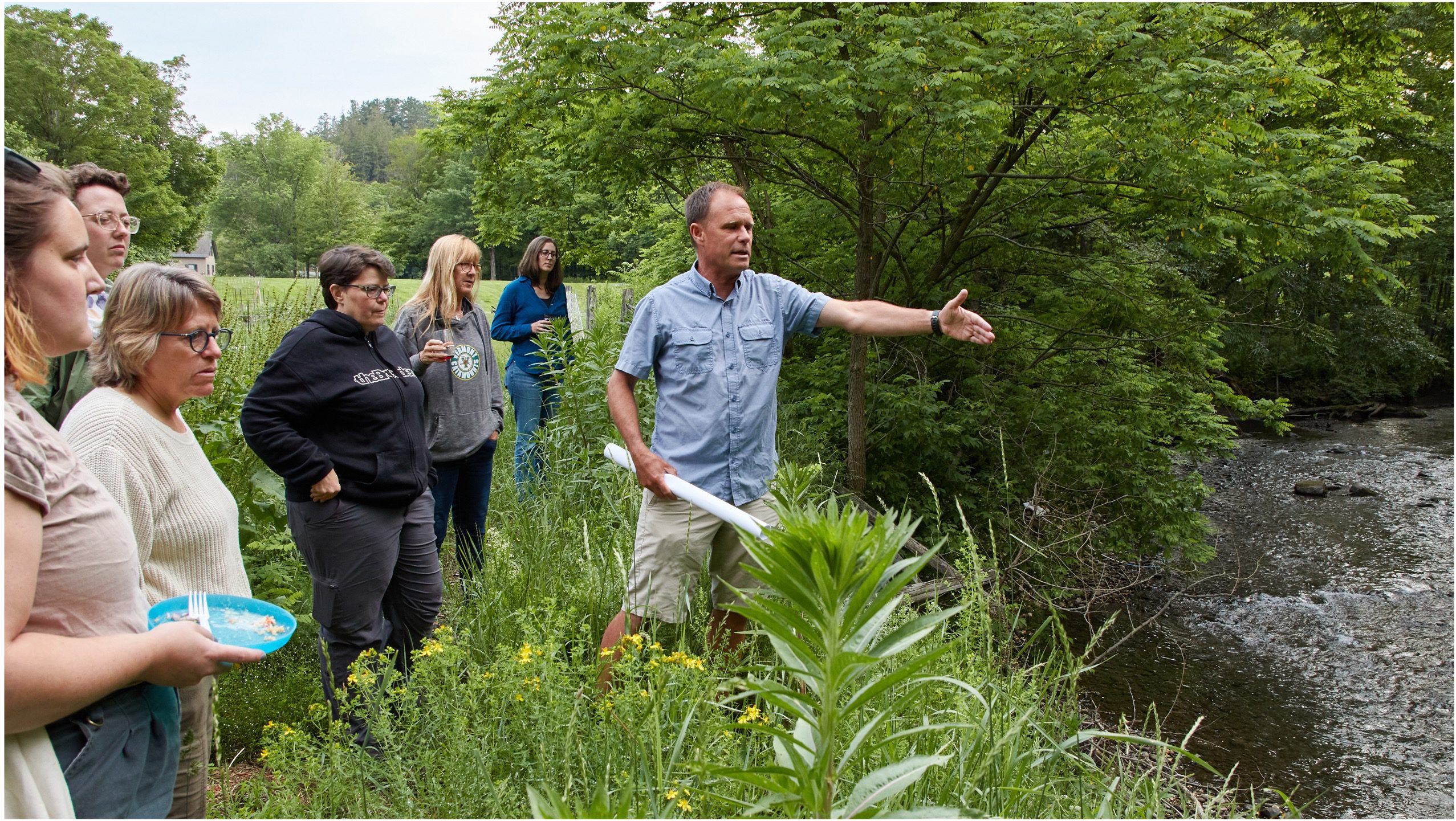
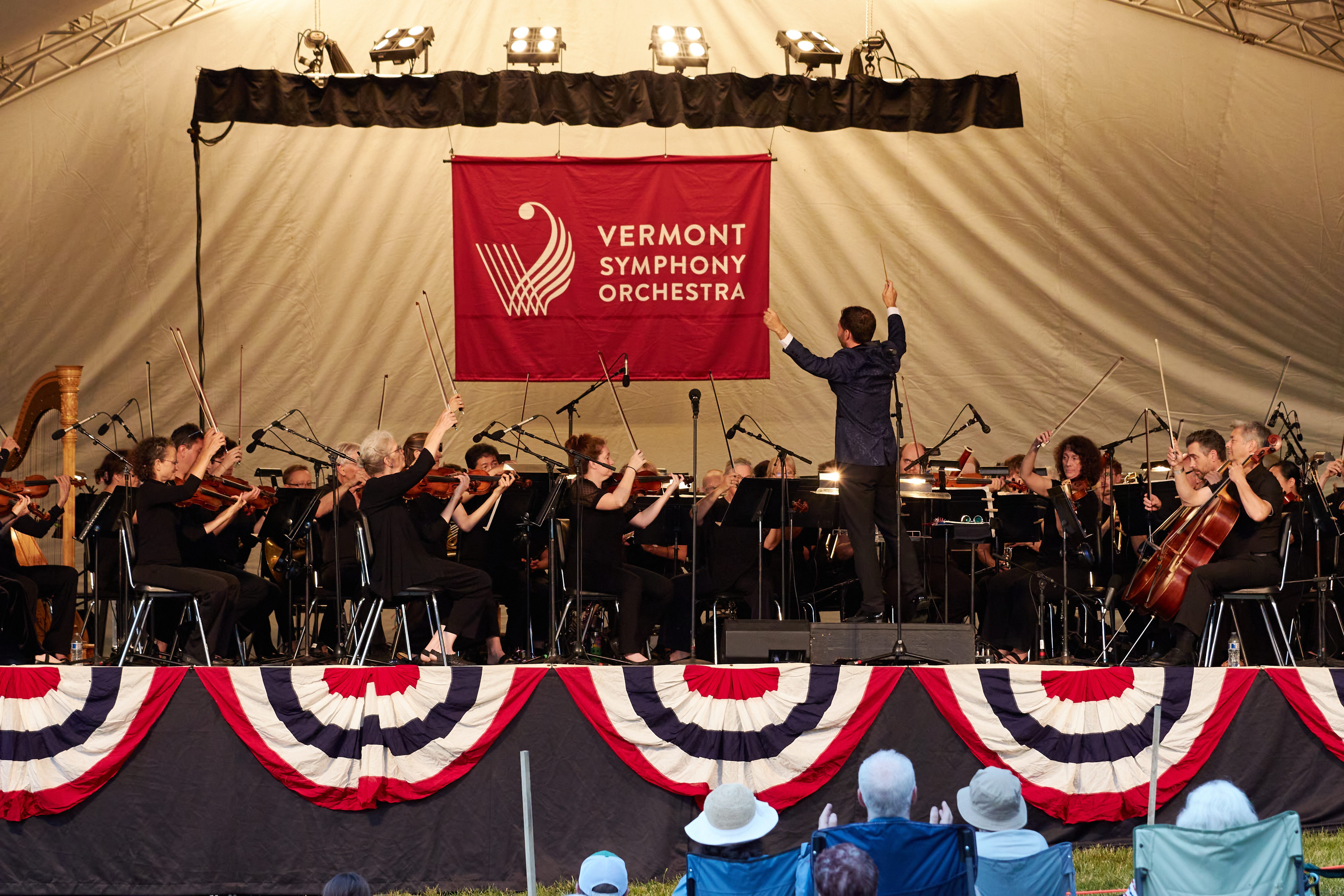
Debate is underway in Woodstock over plans to hire economic development director
Sugarbush Farm is celebrating 80 sweet years of Vermont tradition

News
July 3
7:55 am
Amid uncertainty, town switches to month-to-month policing contract
For the first time ever, the Woodstock Village Trustees and Town Selectboard have inked a police services contract between the two governing bodies that will move forward on a month-to-month basis for the next year, rather than functioning on an annual basis, as has always been the past practice.
“After much discussion, the selectboard decided to go with a month-to-month contract with the village for police coverage in the town,” Woodstock Town Selectboard chair Ray Bourgeois wrote in an emailed statement to the Standard on behalf of the five-member governing body on Tuesday afternoon. “This decision was not taken lightly and was decided on until the current situation with the Village Police Chief is concluded,” Bourgeois added. “We felt it was necessary to protect the town because of the possibility of dramatic fluctuation of police personnel and the ability to cover the town. Making sure the town has police coverage is the selectboard’s priority.”
Apart from the new, month-to-month nature of the police services contract, the remainder of the village and town agreement is essentially unchanged from past years. The fiscal year 2025-26 agreement, which took effect this past Tuesday, July 1, calls for the town to compensate the village $38,290.51 per month for police coverage from now through June 30, 2026.
For more on this, please see our July 3 edition of the Vermont Standard.
July 3
6:55 am
Peace Field faces another permit appeal, Mangalitsa prepares for fall reopening
Following a unanimous decision officially posted by the Woodstock Town Development Review Board (TDRB), municipal chief of staff and zoning administrator Stephanie Appelfeller issued a permit on June 20, allowing Peace Field Farm owner/developer John Holland and tenant farmer/chef/restaurateur Matt Lombard to operate an on-farm restaurant at 650 Pomfret Road.
Longtime opponents of the farm-to-fork restaurant wasted not a day of the 30-day permit appeal period. Lincoln attorney Christopher Boyle filed an appeal of the latest TDRB decision on behalf of Peace Field neighbors Tom Meyerhoff and Cynthia Volk with the Vermont Superior Court, Environmental Division, commonly known as the Environmental Court, within just over two hours of the town’s official posting of the on-farm restaurant permit for Peace Field. Boyle did not respond to requests for comment about the speedy appeal he filed on behalf of his clients — the third time the TDRB has granted a permit to Peace Field Farm to operate an on-farm restaurant and the second time the quasi-judicial governing body has okayed essentially the same permit in the past 18 months.
In its permit decision of May 27, officially noticed and posted publicly on June 20, the Woodstock TDRB granted site plan and conditional use approval for Peace Field Farm to operate its proposed farm-to-fork restaurant off Pomfret Road, in close proximity to the Pomfret town line, holding that the restaurant as planned is fully compliant with the municipality’s town plan and current zoning regulations relative to on-farm restaurants operating in Woodstock’ five-acre, rural/residential (R-5) zoning districts.
No date has yet been set for a preliminary conference between the restaurant litigants before a Vermont Environmental Court judge regarding the most recent legal and regulatory wrangling in the four-and-a-half-year-old Peace Field case.
A newly renovated and expanded Mangalitsa to reopen this fall
On a different but related topic, Holland and farmer/chef Lombard were able to share good news for beleaguered local residents and tourists seeking places to dine in the Woodstock area, particularly during peak times such as the summer months and foliage season: the long-shuttered, high-end Mangalitsa restaurant, closed for the past three years and the victim of multiple construction and renovation delays, is set to reopen at 61 Central Street in Woodstock Village this fall.
For more on this, please see our July 3 edition of the Vermont Standard.
July 3
6:55 am
Woodstock water quality report released, Town now allocating funds to preemptively tackle issues
Last Friday, Woodstock municipal manager Eric Duffy certified and distributed a Woodstock Aqueduct Company (WAC) Consumer Confidence Report for the 2024 calendar year. As stated in the report, this is “a snapshot of the quality of water that was provided in 2024 to the town. Included are details about where our water comes from, what it contains, and how it compares to Environmental Protection Agency (EPA) and state standards.”
Within the Consumer Confidence Report, several potential contaminants were detected. Chemical contaminants such as iron and nitrate were found in the samples collected on April 23, 2024, with the highest value of iron being 0.025 ppm, and 0.46 ppm of nitrate. These levels are far below the EPA’s safety threshold of 10 ppm.
The more concerning measurement was the detection of PFAS and PFOS found in the water supply. PFAS, also known as Per-and polyfluoroalkyl substances, are a large group of man-made chemicals that can leach into water supplies. PFOS (Perfluorooctane sulfonate) is a sub-category of PFAS comprised of synthetic chemicals that belong to various products such as non-stick cookware, firefighting foam, and stain-resistant treatments. “PFOS and PFAS are known as ‘forever chemicals’ because they are extremely persistent, water resistant, and unable to break down in the human body,” Ben Montross, Drinking Water Program Manager for the Vermont Department of Environmental Education, told the Standard this week.
Although these levels presently sit below the current safety threshold set by the EPA of 4 ppt and by the state of Vermont at 10 ppt, any amount of PFAS and PFOS found in the local water supply can be dangerous to consumers. Without tracing the origin of this contamination, however, it is unclear how long PFOS exposure will continue. According to Duffy, PFAS will be tested for every three years moving forward in compliance with state standards.
Levels of lead and copper were also present in the samples collected for this report. As of Aug. 16, 2022, both wells were found to have concentrated levels of lead equaling 15.2 ppb. The Action Level — a term utilized by the state to set a limit that, when exceeded, requires immediate action be taken by the town — is 15 ppb. This suggests that lead, most likely from galvanized pipes, corrosion of household plumbing, and erosion of natural deposits, has leached into the water supply at a rate that requires immediate action.
“We take ten samples for lead every three years, in compliance with state legislation,” Duffy said. “The testing company chooses the two highest samples, which is where the 15.2 ppb levels came from. We have taken ten new samples for lead in the last two months and found that we are now under actionable levels significantly. Our lead levels went from 15.2 to 11 ppb and now are well within the safety limit.”
“Town ownership of the aqueduct means we can now facilitate access to funding for system upgrades and improve the overall management of the water service system. We have begun allocating funds to preemptively tackle issues such as water pressure and galvanized pipes in order to create the safest drinking water for our constituents,” Duffy said.
Duffy explained, “As the town enters into their latest financial quarter, beginning July 1, a budget of $735,226.17 was just approved. This money will be allocated entirely to the water department, covering everything from salaries to testing to repairs.” Within the proposed budget, $25k has been allocated for a tank replacement, $50k allocated specifically to water reserves, and 1% of all funds will be dedicated towards maintaining and replacing water system infrastructure.
In addition to this budget approval, Duffy also shared that the town has recently been awarded a grant for $868,000 by the Northern Border Regional Commission, along with a 0% interest loan. This money will go towards capital projects, mainly the Elm Street pipe repair, and the replacement of one of the two currently existing wells utilized by the town.
For more on this, please see our July 3 edition of the Vermont Standard.
July 3
6:55 am
Sustainable Woodstock has an innovative plan to restore streambank near community garden
Although Sustainable Woodstock’s Community Garden occupies a peaceful space on Old River Road, the location has been damaged by flood events in recent years. Now, the organization is working on a solution. The forward-thinking project will protect the remaining streambank while restoring a favorable habitat for fish and wildlife.
“Barnard Brook’s streambank has eroded over the years, notably during Tropical Storm Irene,” Sustainable Woodstock’s Executive Director, Jenevra Wetmore, shared via the organization’s website. “July 2023 flooding also caused a massive amount of erosion — we lost approximately 10 feet of bank just in that one storm. Last year, this bank erosion finally reached the community garden itself and began to destroy the plots Sustainable Woodstock used to grow food for the Woodstock Community Food Shelf, as well as individual plots rented by community members. We decided to abandon this section of the garden, losing about one-third of our growing space as a result.”
To combat the erosion, Sustainable Woodstock has enlisted Matt Murawski, an engineer with Ripple Natural Resources. “The traditional way to stop a streambank from moving is to put down rocks,” Murawski continued. “We’re doing something different; we’re taking a softer approach that may have some better habitat value. Instead of using rocks, we’re using large root wads. We’ll take a tree that is 12 to 18 inches in diameter, pull it out of the ground with the whole root wad intact, and we line the channel.” The trees used will be about 16 feet long, and the root wads will be about five feet in diameter.
Considering the potential advantages of this approach, Murawski added, “The water will flow down the river and will encounter all this wood, which will cause some local scour, so you’ll get some holes that provide cover for fish. Habitat is created when it works well. Then we’re planting on the upper bank because the idea is that the root wads won’t last forever, but they will last long enough that we’ll get some robust vegetation on the bank. When those root wads are finally gone, we have healthy, deep-rooted trees in place.”
The plan is innovative, but it is also somewhat experimental. “There aren’t many examples of installations of wood on rivers in Vermont, probably a half dozen at most,” Murawski recalled.
Sustainable Woodstock hopes to complete the project sometime this fall, but Murawski said it may not happen until next year due to some important pieces that have yet to fall into place.
According to Marie Levesque Caduto, a Watershed Coordinator for the Vermont Department of Environmental Conservation, there was some opposition to the project based on the physical needs and concerns over funding. “We couldn’t get 50 feet, which is what is generally required, from the edge of the bank. We can’t do that because of the garden. There was a lot of pushback on funding this project, but we know the bridge would fail eventually if we didn’t do it.”
Wetmore said the bulk of the funding is being provided by the Water Infrastructure Sponsorship Program (WISPr).
For more on this, please see our July 10 edition of the Vermont Standard.
July 3
6:55 am
Debate is underway in Woodstock over plans to hire economic development director
The Woodstock Town Selectboard is receiving pushback from residents and local business and community leaders over plans to establish an economic development office in Town Hall, even as interviews are underway for the hiring of a full-time director for the recently created municipal office by the end of next month.
Representatives of the Woodstock Area Chamber of Commerce, the founding chair of the town’s Economic Development Commission (EDC), leaders of the local hospitality and restaurant business sectors, and prominent community activists have spoken publicly in the past week to voice their opposition to the creation of economic development director and marketing posts under the supervision of town government and municipal manager Eric Duffy — part of a short- and long-term strategic planning process hammered out jointly by the Town Selectboard and Village Trustees over the course of the past year.
At a regular meeting of the Woodstock Town Selectboard last Thursday, selectperson Laura Powell, who has spearheaded the effort to appoint a full-time economic development director for the town, said town municipal chief of staff Stephanie Appelfeller began vetting applicants for the leadership post two weeks ago. Four candidates for the economic development director slot have been forwarded on to a selection committee consisting of representatives of the selectboard, trustees, the EDC, and the Chamber for further interviews and vetting. Powell said the names, resumes, and letters of interest of the finalists for the post will be forwarded to Duffy for final-round interviews later this month. Powell said the town hopes to have a new economic development director in place by late August so that his or her term overlaps with that of Woodstock housing development consultant Trena Tolliver, whose contract with the municipality, initially negotiated by the EDC and recently turned over to the town’s control, expires at the end of next month.
The criticism that the town has received from area business leaders and former municipal officials has focused both on the proposed economic development director post and on the selectboard’s plans to shift all responsibilities for municipal oversight of housing, business support and expansion, tourism, special events, and marketing initiatives from the EDC (which is soon-to-be redefined) over to the new economic development office.
Some business community leaders and local residents have been vociferous in their opposition to the proposed changes in Woodstock’s economic development posture, while others have voiced support for the new approach moving forward.
For more on this, please see our July 3 edition of the Vermont Standard.
July 3
6:55 am
After filings, Swanson and Village await judge’s injunction ruling
The Village of Woodstock is claiming that its contract with former Police Chief Joseph Swanson did not expressly ban demoting him, according to the latest legal filings in the lawsuit to overturn the demotion.
The Village, in its 15-page memorandum, also argued that any action not forbidden by an employment agreement must be allowed.
Woodstock also maintains that Swanson “has not established that reinstatement is a likely remedy regardless of the outcome of the breach of contract claim, such that Petitioner cannot demonstrate a likelihood of success on the merits.”
Swanson’s lawyer, Linda Fraas, has responded to the Village, noting that Woodstock “incorrectly interprets basic contract law and abused its authority when it decided to ‘demote’” Swanson to patrol officer in April.
Fraas said in her response to the Village that “as a matter of law, demotion is obviously not permitted because it alters the very essence of the contract.”
Municipal manager Eric Duffy and village lawyers John H. Klesch and Matt Bloomer have opted not to respond to inquiries from the Vermont Standard seeking comments in recent months.
Swanson has appealed to Vermont Superior Court his demotion ordered by Duffy and upheld by the Village Trustees after a 14.5-hour marathon hearing in March.
Swanson also has filed a separate $5 million lawsuit against Duffy, the five Village Trustees — chair Seton McIlroy, vice chair Jeffrey Kahn, and members Brenda Blakeman, Frank Horneck and Lisa Lawlor — along with the village and town and a private detective firm.
It will be up to Judge H. Dickson Corbett to determine if the preliminary injunction blocking the Village last month from naming a new police chief will remain in place, or whether Woodstock can appoint a new police chief. He issued the order following a court hearing last month.
For more on this, please see our July 3 edition of the Vermont Standard.
June 25
6:55 am
Barnard will vote again on BarnArts lease on July 23
In a special town meeting slated for Wednesday, July 23 at 7 p.m. to be held via floor vote, residents of the town of Barnard will vote again to decide whether or not BarnArts should be allowed to lease the old Barnard Fire Department building for a period of fifteen years, with an option to renew for an additional fifteen years, at an annual rent of $1.
This will be the second time Barnard will vote on this issue. The first vote took place in March, resulting in the town originally voting in favor of BarnArts securing the leasing rights to the building. However, according to selectboard vice chair Richard Lancaster, due to issues within the lease agreement, more conversation was required between the selectboard and Linda Treash, executive director of BarnArts. Now a new and improved lease will go before the town in a special meeting.
Lancaster told the Standard, “The reason for the revote is mostly because the selectboard does not want to act independently regarding the leasing of public land to an organization. The town has a right to be involved each step of the way. Unfortunately, in the process of creating the lease agreement, there were issues that kept cropping up as time went on. The initial vote was held during a town meeting in March, with a very rudimentary lease document. Hearings followed this vote, but throughout the process, a mutually agreeable lease did not come to fruition until recently. With respect to that and the fact that we made changes to the initial leasing document, we wanted to make sure that the current, proper lease is presented to the people and voted on.”
Features
July 5
6:55 am
Hartland's Old Home Day was full of activity
Hartland celebrated the Fourth of July with the village’s annual Old Home Day, the first highlight of which was a parade that passed through downtown. Hundreds of people lined Skunk Hollow Road and Quechee Road to watch classic cars, tractors, firetrucks, and an occasional homemade float roll by during the parade. Later, there were kids games and entertainment, such as Carlos Ocasio and Frydaddy performing music behind the Rec. Center. The evening concluded with a fireworks show.
Robert Shumskis Photos
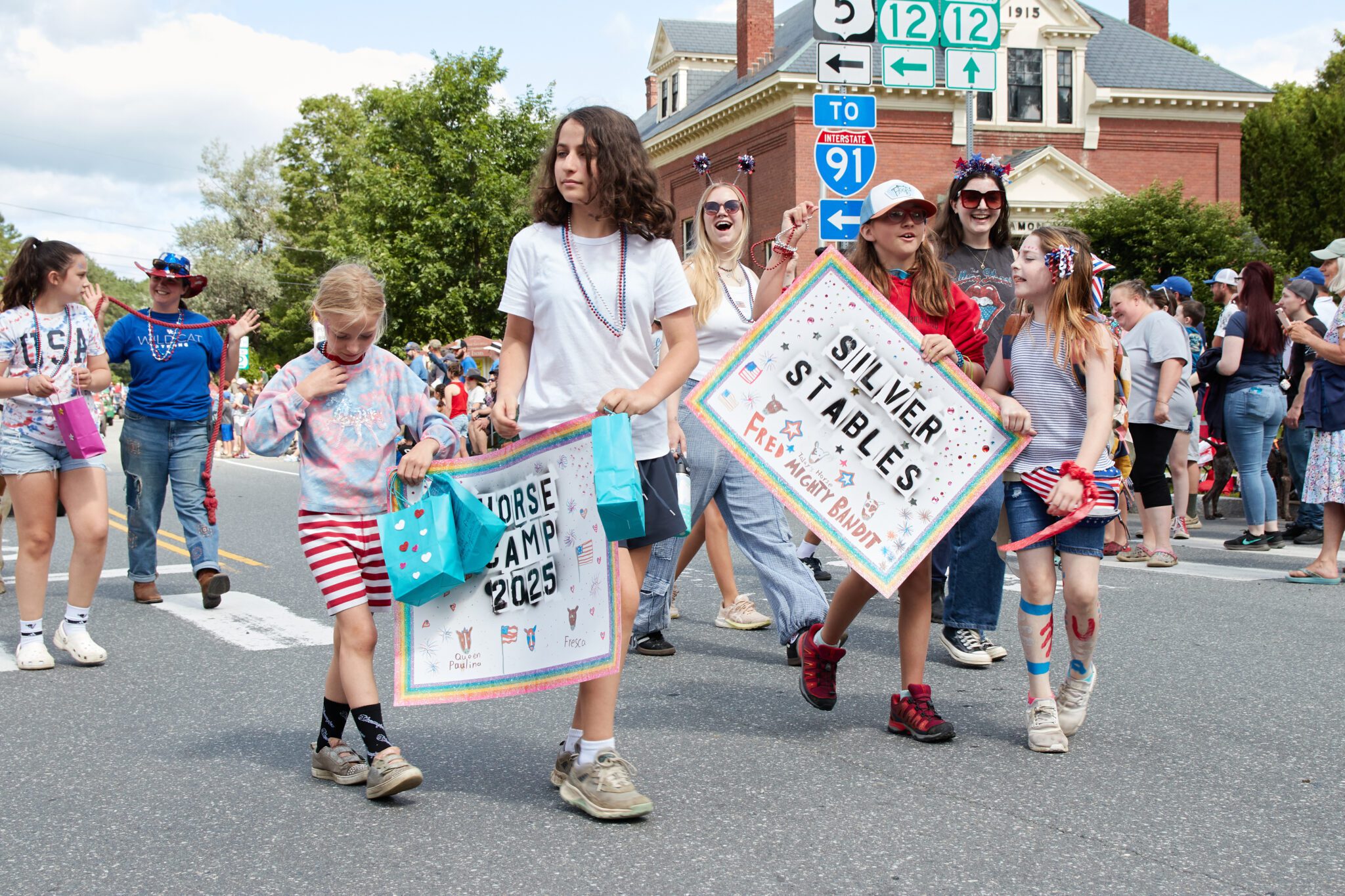 Friends of Silver Stables celebrate their horses and the horse camp crew for the year.
Friends of Silver Stables celebrate their horses and the horse camp crew for the year.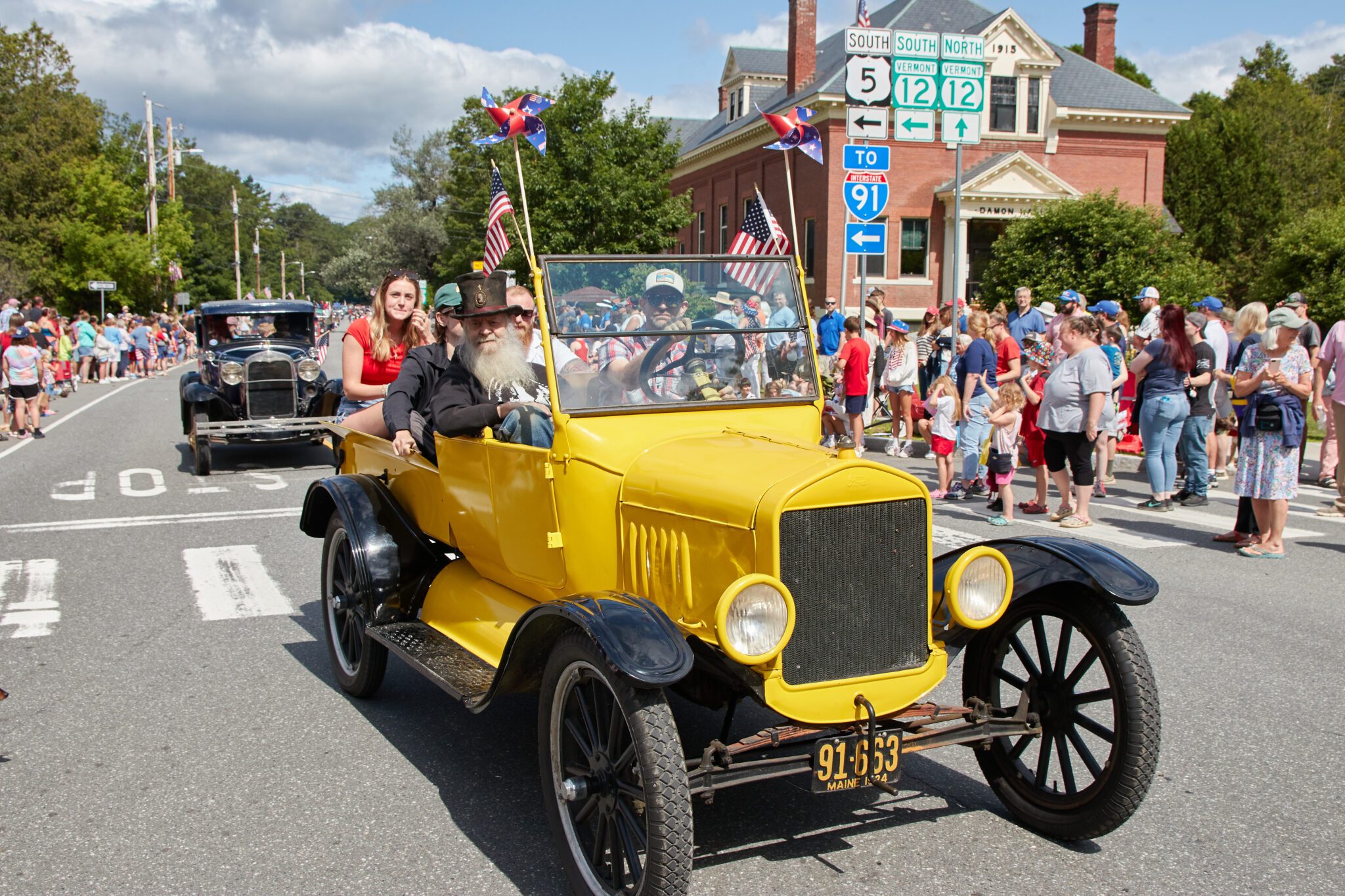 Among the antique vehicles that participated was this vibrant 1924 Ford Model T.
Among the antique vehicles that participated was this vibrant 1924 Ford Model T.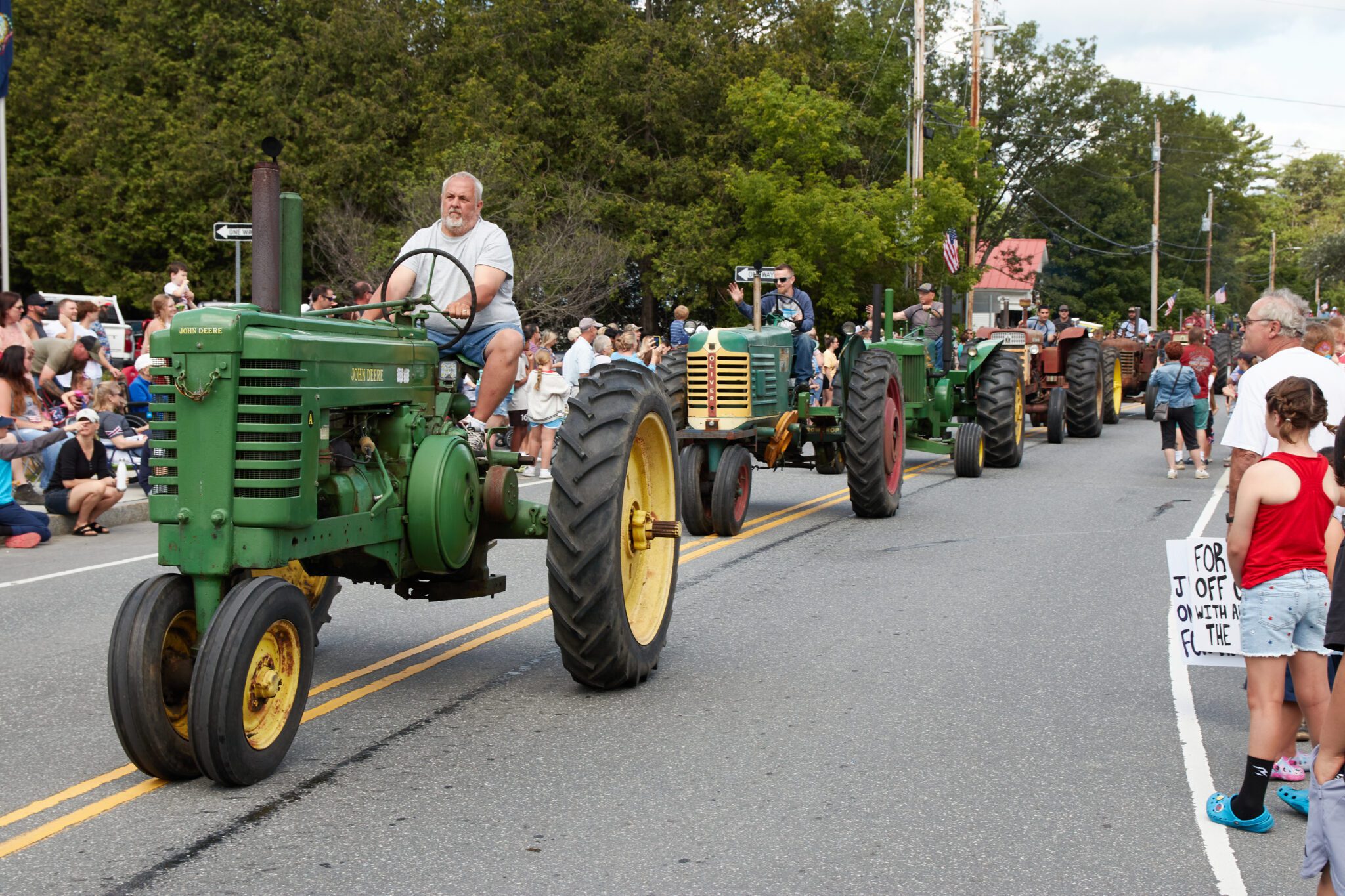 Dozens of area farmers gathered with their best tractors.
Dozens of area farmers gathered with their best tractors.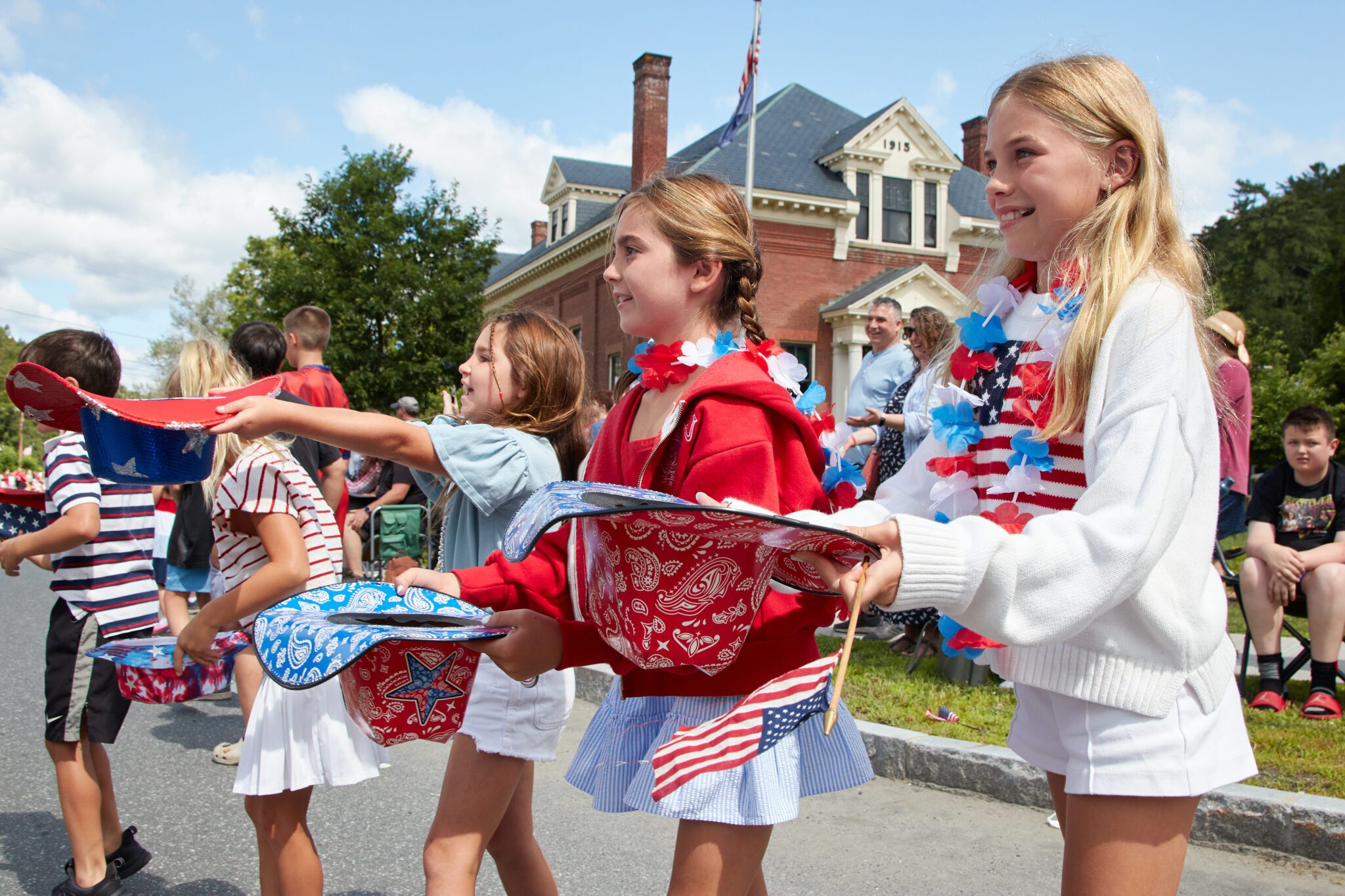 Piper Frate (left), Layla Frate, and Millie Needs, all from Hartland, hold out their hats to try to catch candy.
Piper Frate (left), Layla Frate, and Millie Needs, all from Hartland, hold out their hats to try to catch candy.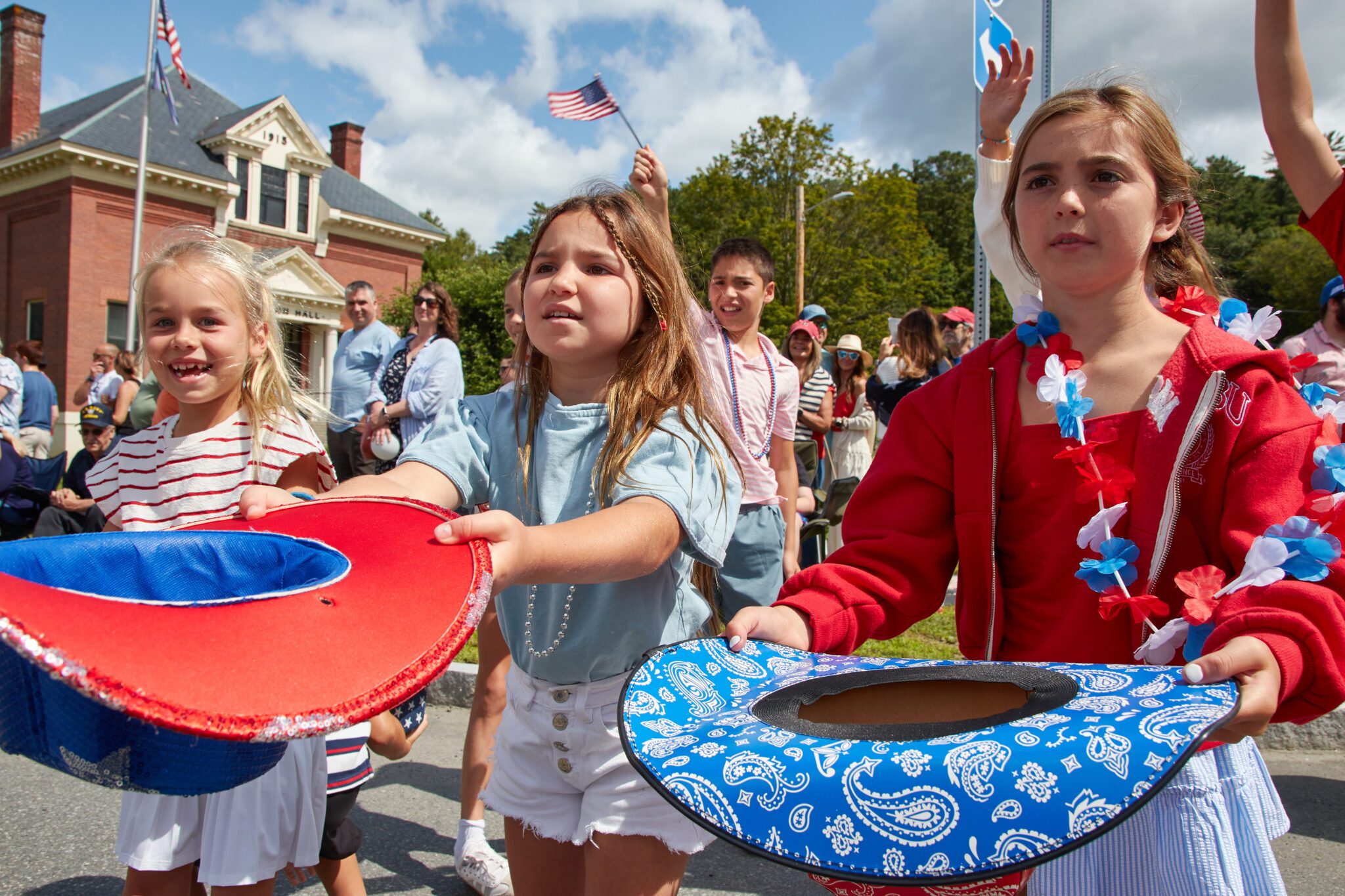 From left, Poppy Needs, Piper Frate, and Layla Frate, all from Hartland, use their hats to help catch pieces of candy as the parade passes.
From left, Poppy Needs, Piper Frate, and Layla Frate, all from Hartland, use their hats to help catch pieces of candy as the parade passes.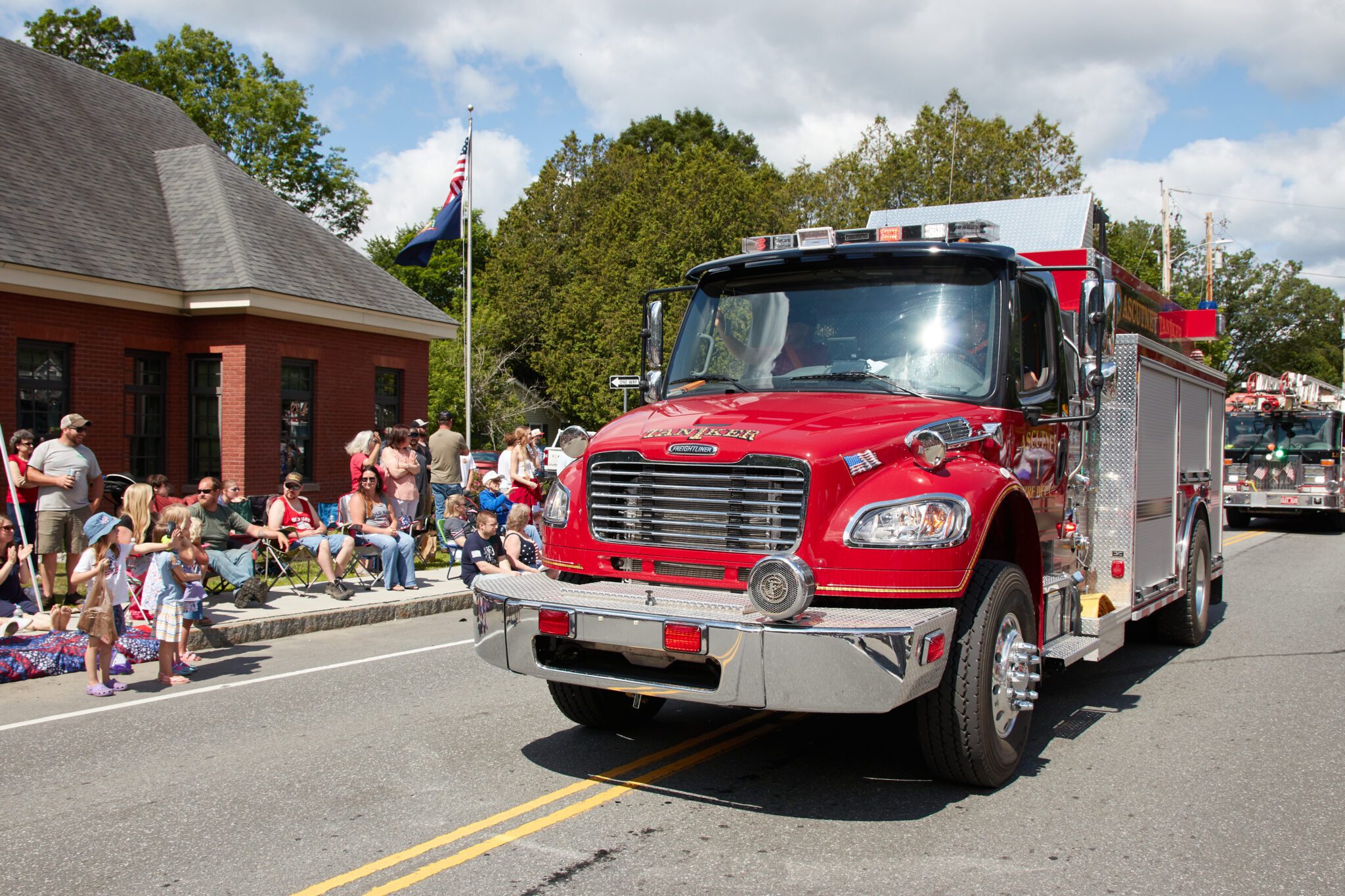 Ascutney’s Tanker 1 is greeted by children along the route through the center of the village.
Ascutney’s Tanker 1 is greeted by children along the route through the center of the village.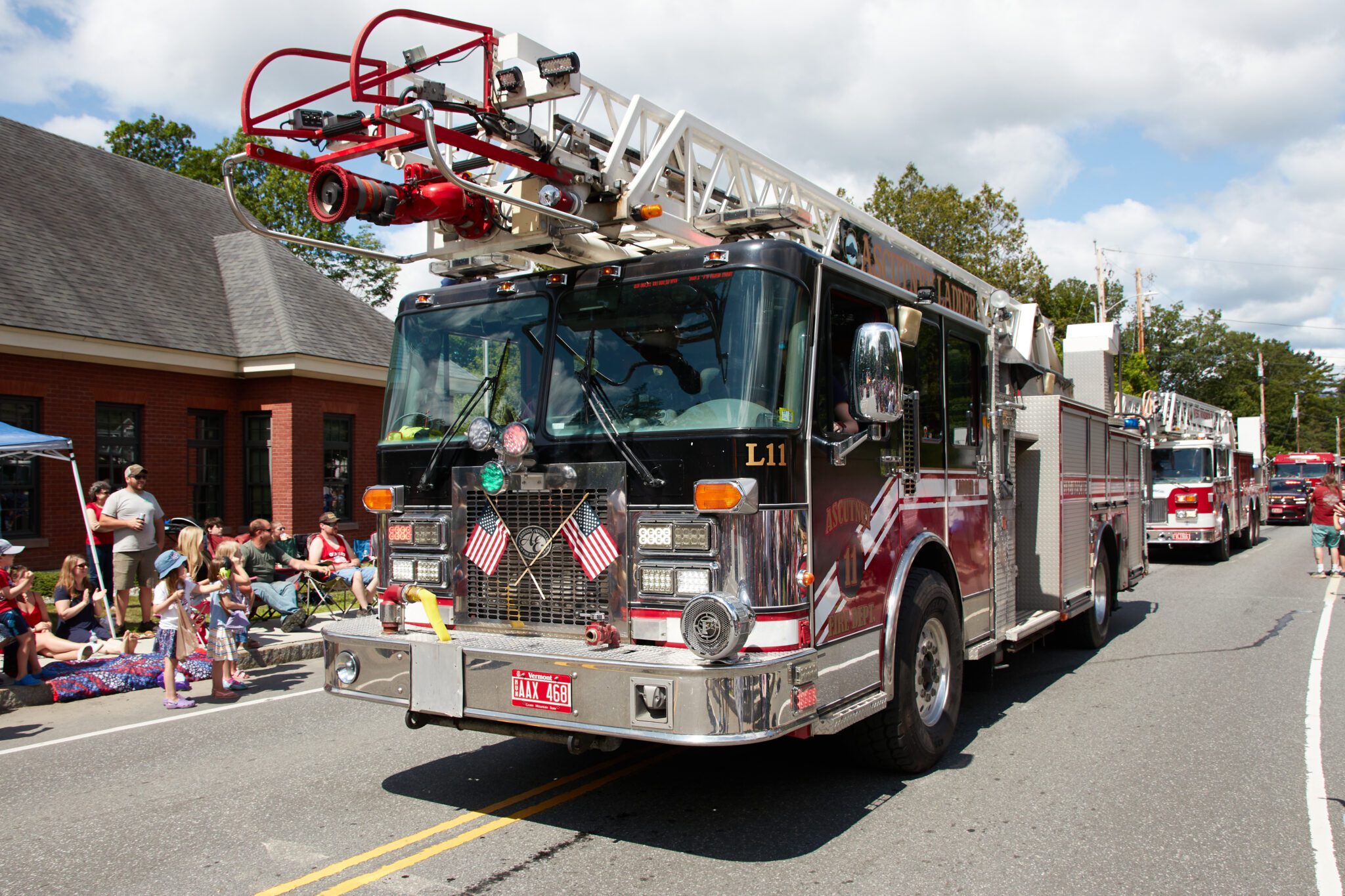 Ascutney’s Ladder 11 was among scores of trucks from neighboring towns that showed up for the parade.
Ascutney’s Ladder 11 was among scores of trucks from neighboring towns that showed up for the parade. Annie Marcell (left) and Luna LeBlanc, both from Windsor, decorated their helmets and their bikes for the event.
Annie Marcell (left) and Luna LeBlanc, both from Windsor, decorated their helmets and their bikes for the event.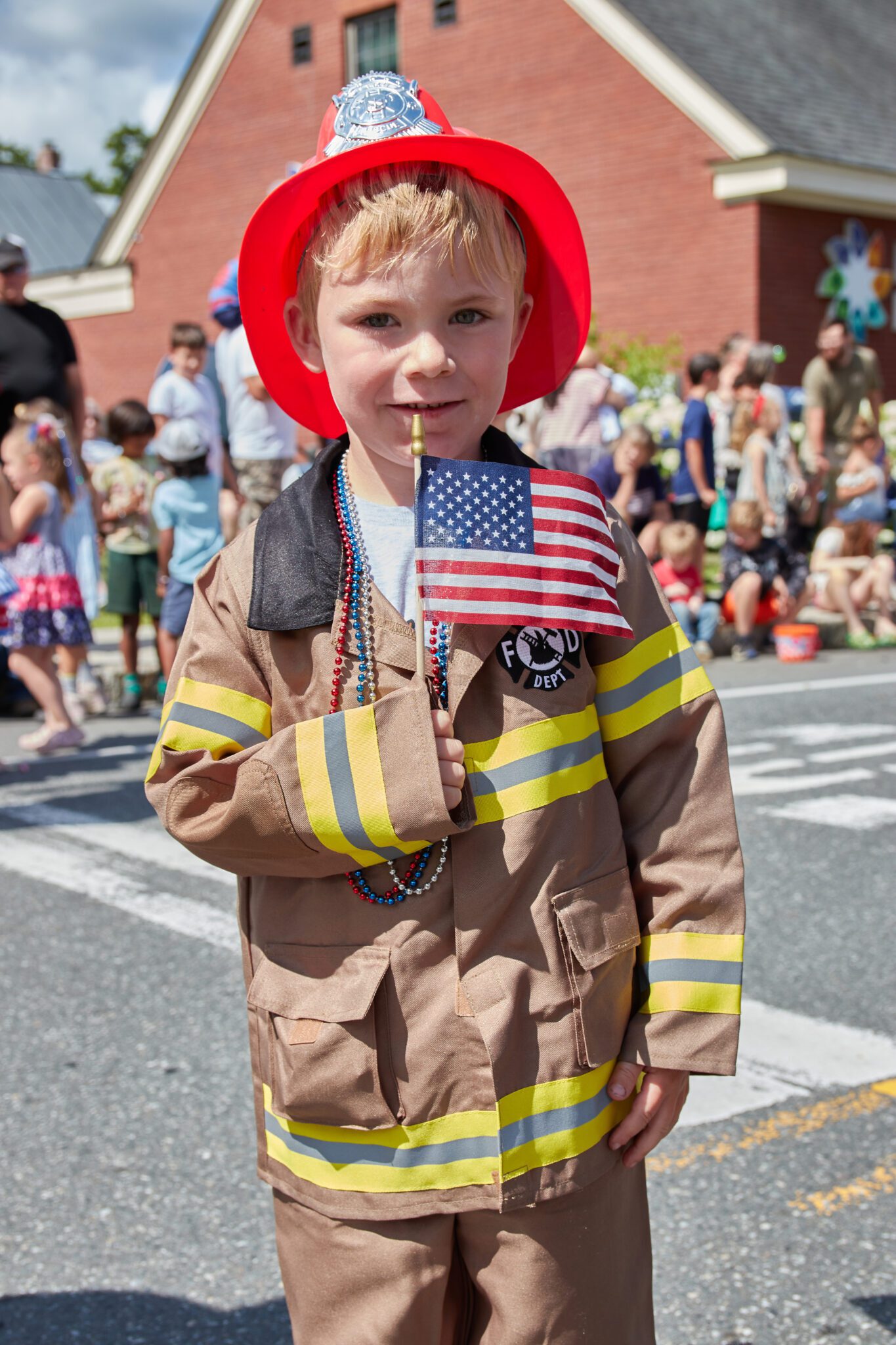 Nikolai Potwin, of Hartland, dressed up as a junior firefighter to accompany the firetrucks.
Nikolai Potwin, of Hartland, dressed up as a junior firefighter to accompany the firetrucks.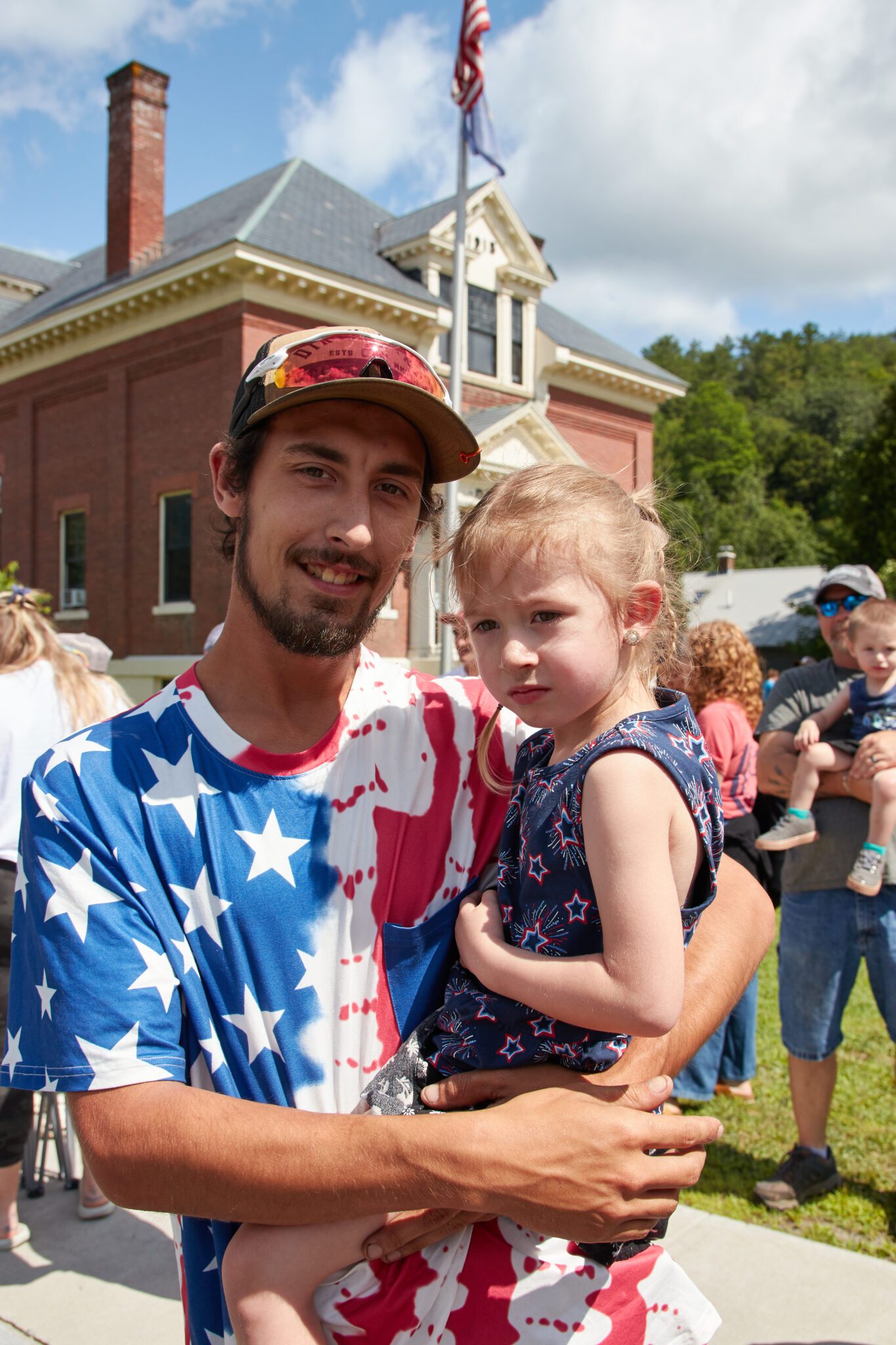 Blake Buccellato, from N. Hartland, and his daughter Kylie, wore their best Stars and Stripes for the festivities.
Blake Buccellato, from N. Hartland, and his daughter Kylie, wore their best Stars and Stripes for the festivities.
July 4
6:55 am
Coolidge Foundation held its annual Independence Day celebration
The Calvin Coolidge Presidential Foundation celebrated the Fourth of July last weekend by honoring Calvin Coolidge, our only president who was born on the holiday. The day began with a procession from the center of the village to the cemetery, where the Coolidge family is buried, followed by a wreath-laying ceremony and speeches by members of the Coolidge family and the Coolidge Foundation. Jennifer Coolidge Harville, the president’s great-granddaughter, sang the Star-Spangled Banner and delivered a speech, followed by speeches from her relatives, Sheridan Harville, Jake Harville, and John Sayles. Afterward, visitors were able to attend a small orchestral performance, tour the numerous historic buildings, and watch the final round of the Coolidge Cup — a national high school debate competition that distributes $20,000 in scholarships each year.
Robert Shumskis Photos
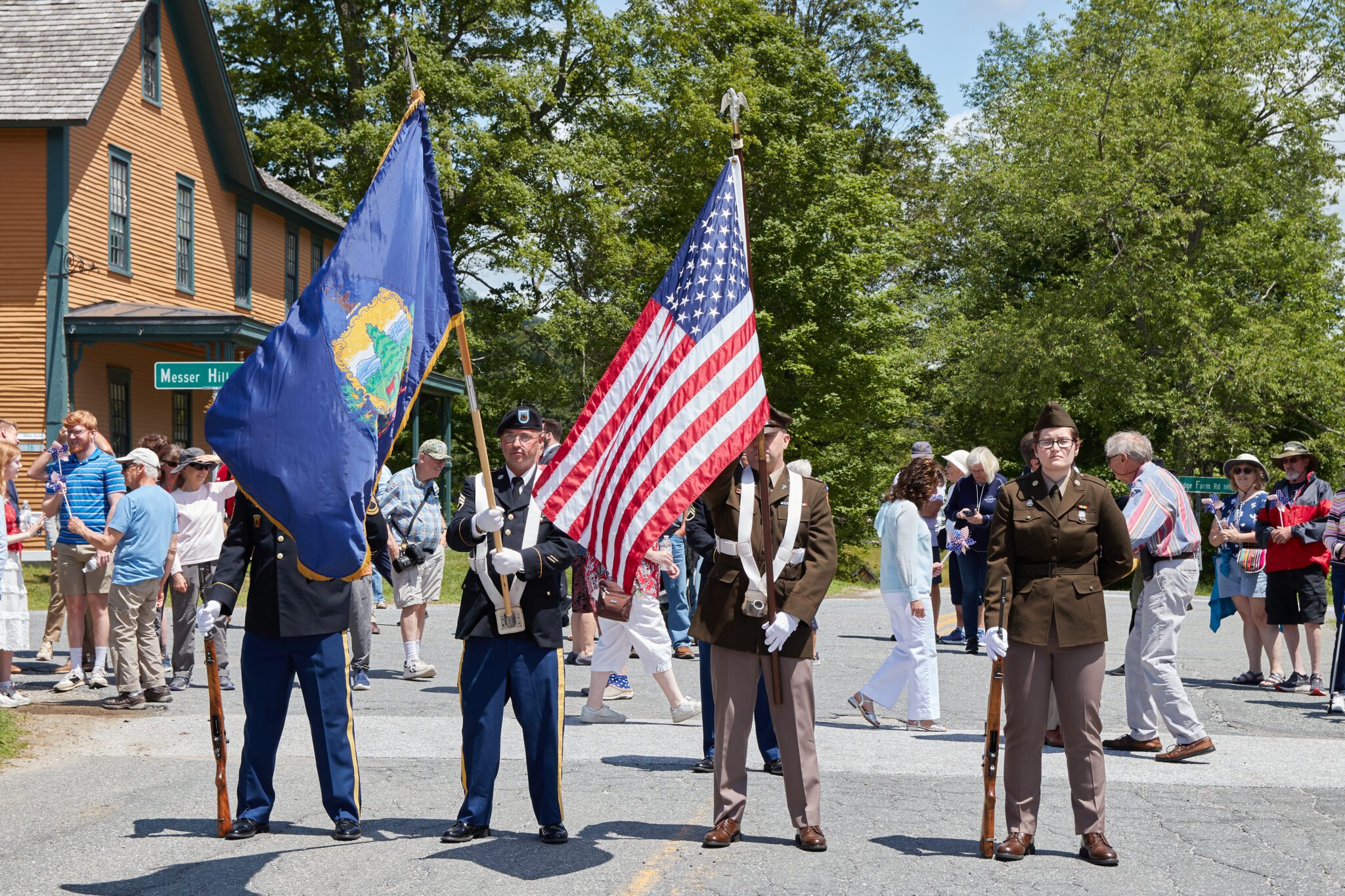 Members of the Vermont Army National Guard line up as a Color Guard for the ceremony.
Members of the Vermont Army National Guard line up as a Color Guard for the ceremony.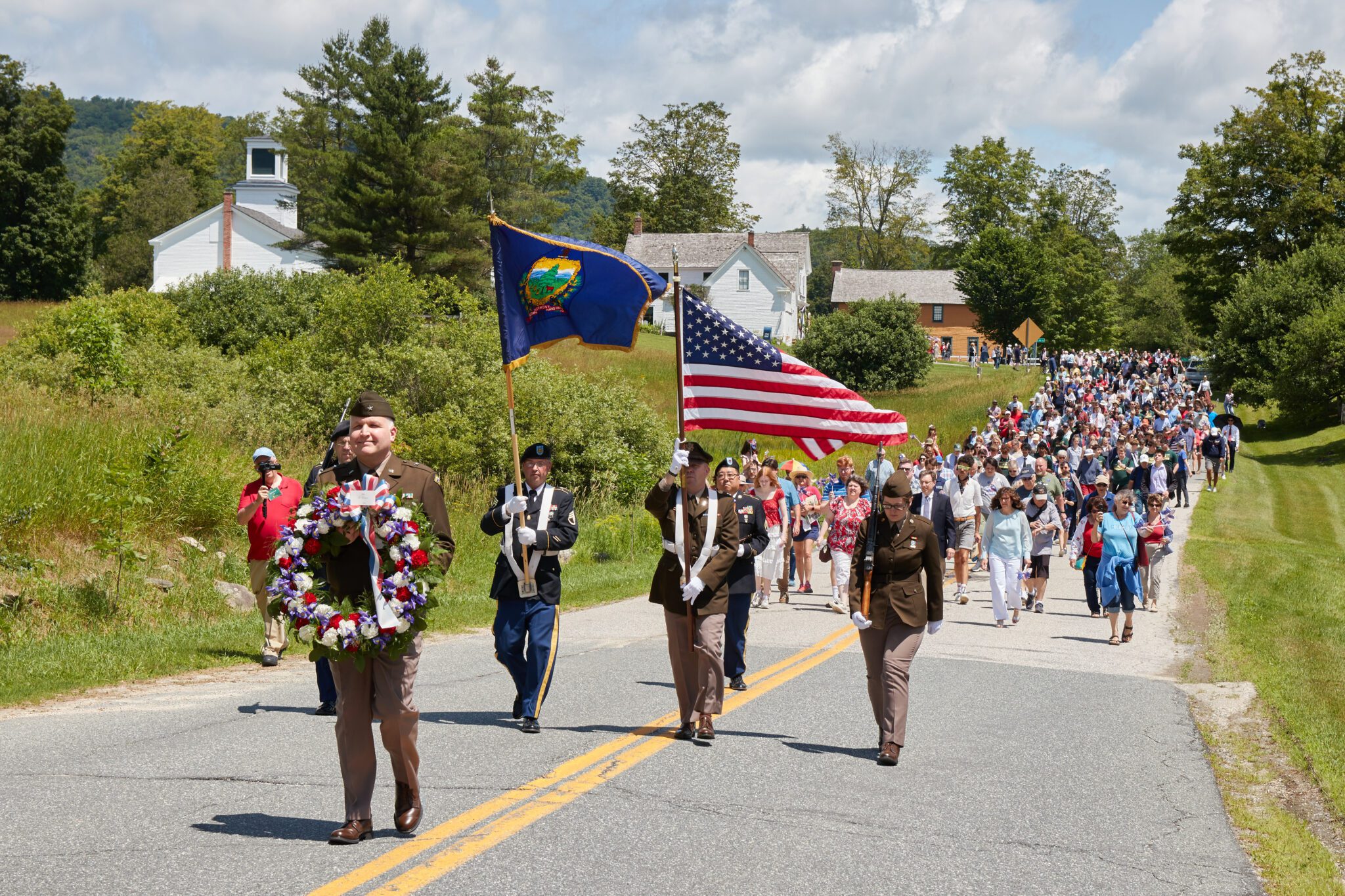 Brigadier General Eric Gagnon (left) leads the Color Guard and visitors to the cemetery.
Brigadier General Eric Gagnon (left) leads the Color Guard and visitors to the cemetery.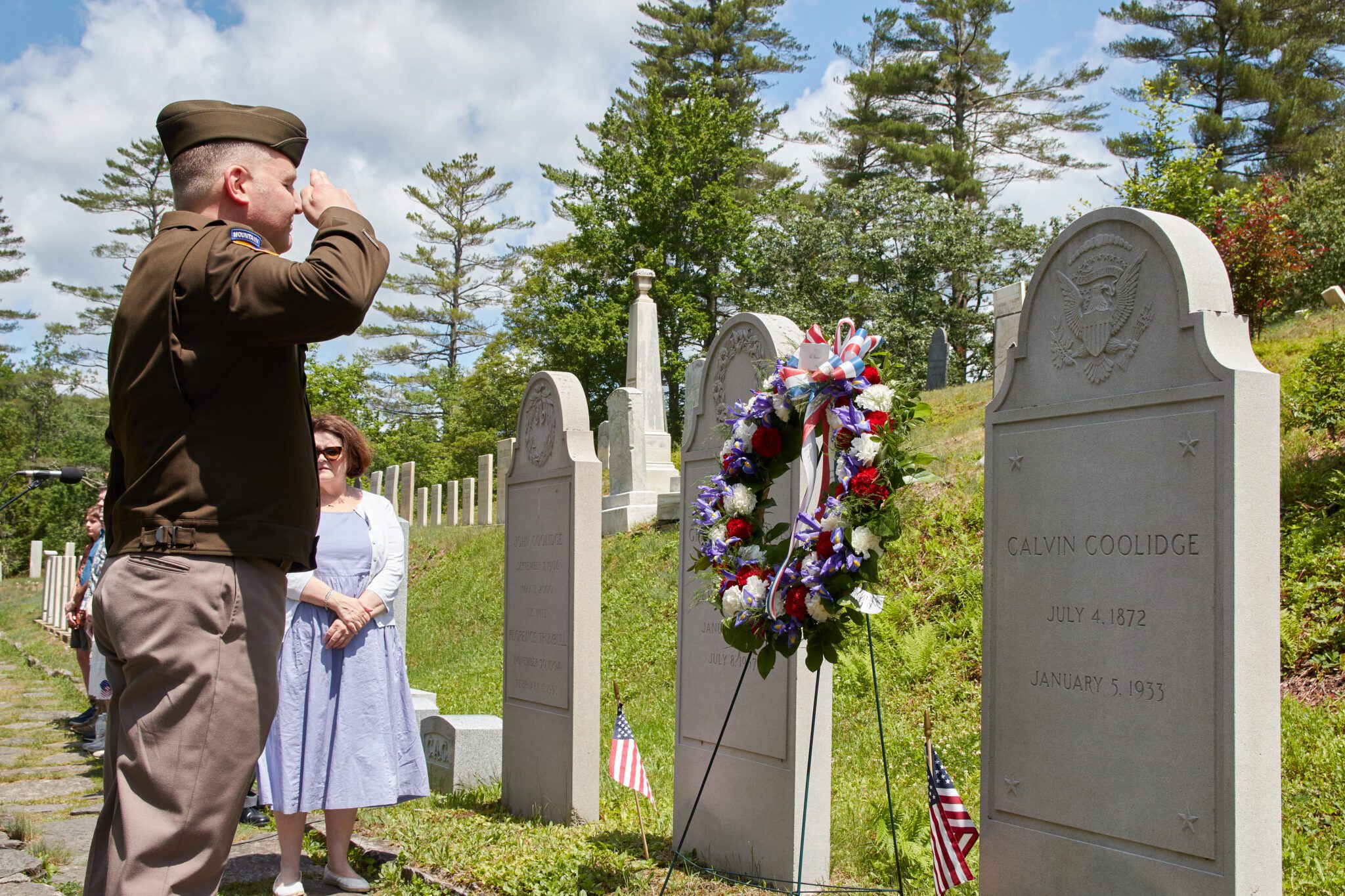 Brigadier General Eric Gagnon salutes Pres. Coolidge’s grave during the playing of Taps.
Brigadier General Eric Gagnon salutes Pres. Coolidge’s grave during the playing of Taps.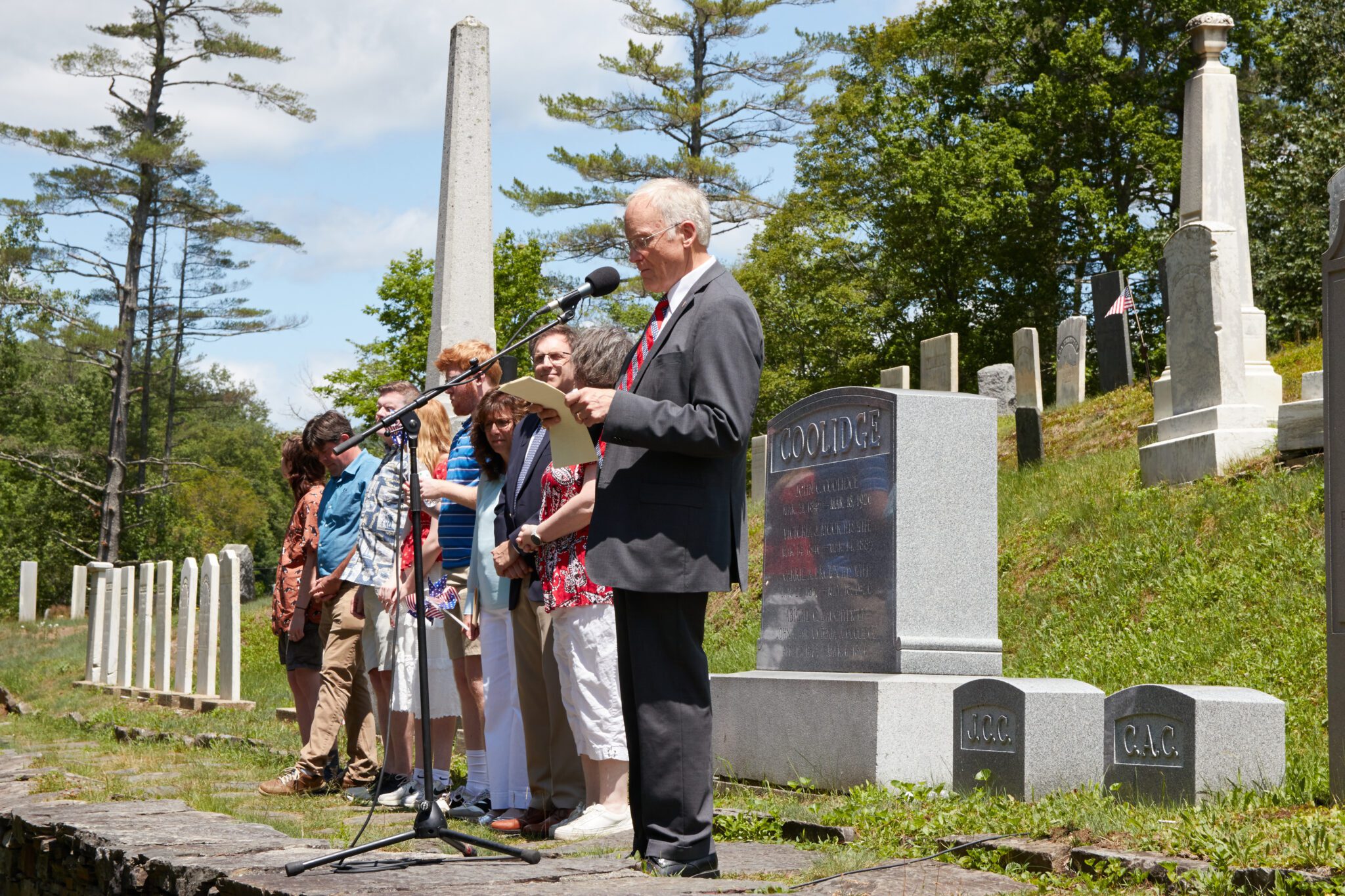 Former Vt. Governor Jim Douglas, who served from 2003-2011 and is on the Coolidge Foundation board, speaks during the cemetery ceremony.
Former Vt. Governor Jim Douglas, who served from 2003-2011 and is on the Coolidge Foundation board, speaks during the cemetery ceremony.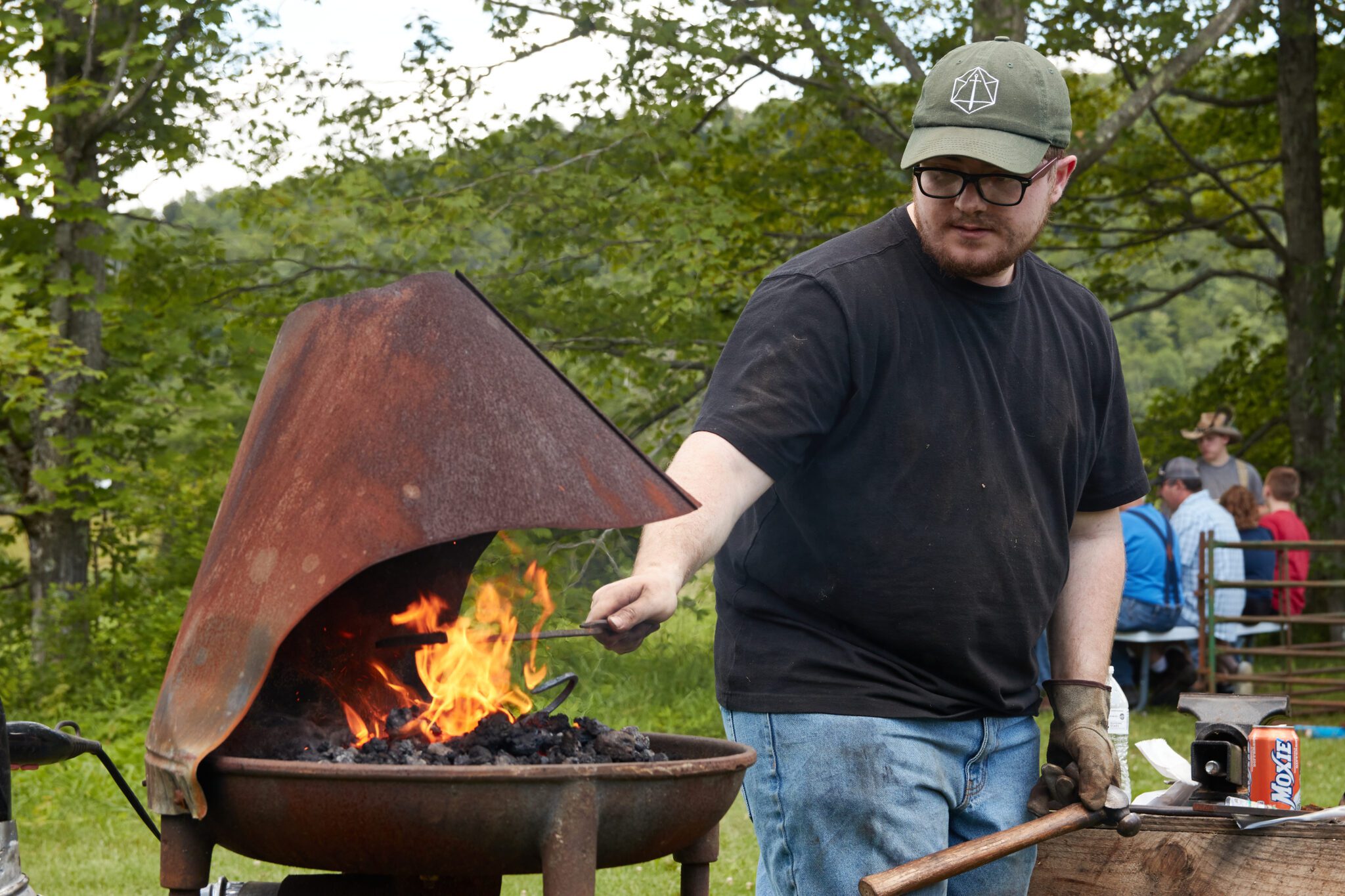 Tim Rogers does a blacksmithing demonstration. He’s firing a piece of metal to make a gaff hook for fishing.
Tim Rogers does a blacksmithing demonstration. He’s firing a piece of metal to make a gaff hook for fishing.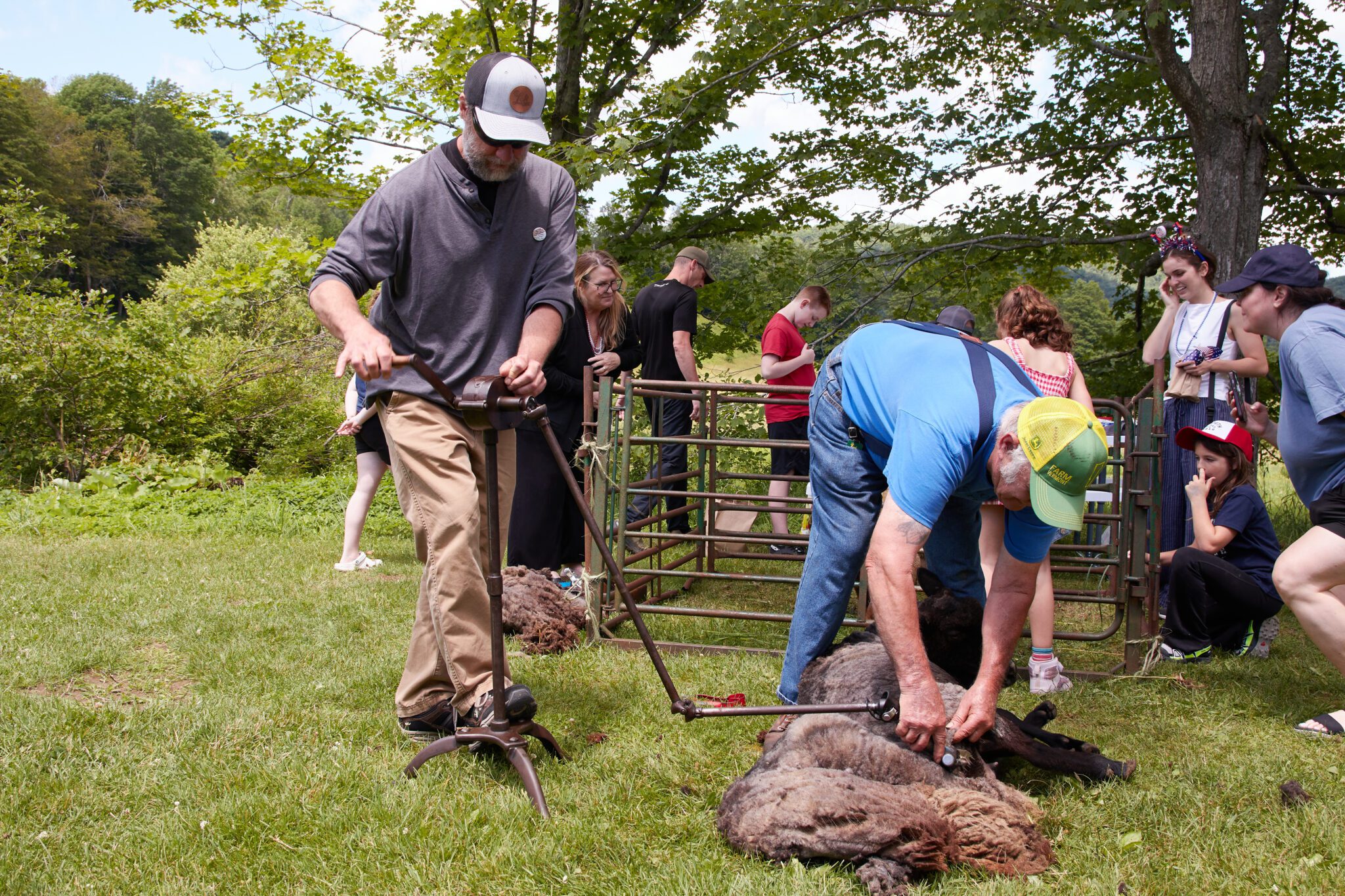 Mike O’Hare (left), from S. Pomfret, turns a crank to power a pair of shears while Fred Rogers does a sheep shearing demonstration.
Mike O’Hare (left), from S. Pomfret, turns a crank to power a pair of shears while Fred Rogers does a sheep shearing demonstration.
July 3
6:55 am
Vermont Symphony Orchestra dazzled at Saskadena Six
The renowned Vermont Symphony Orchestra made a stop in South Pomfret last Wednesday for its annual Summer Festival Tour. Saskadena Six was the second of six locations for the 2025 tour, which wound its way around the state and wrapped up at the Trapp Family Lodge in Stowe. This year’s selection was called Summer of Love, and it featured works from a broad range of musicians that included Tchaikovsky and Leonard Bernstein. Given the timing around Independence Day, patriotic flair opened the set with The Star-Spangled Banner and finished with Stars and Stripes Forever. Mezzo Nikola Printz served as this year’s guest vocalist on a handful of songs, one of which was Heitor Villa-Lobos’s Bachianas Brasileiras No. 5.
Robert Shumskis Photos
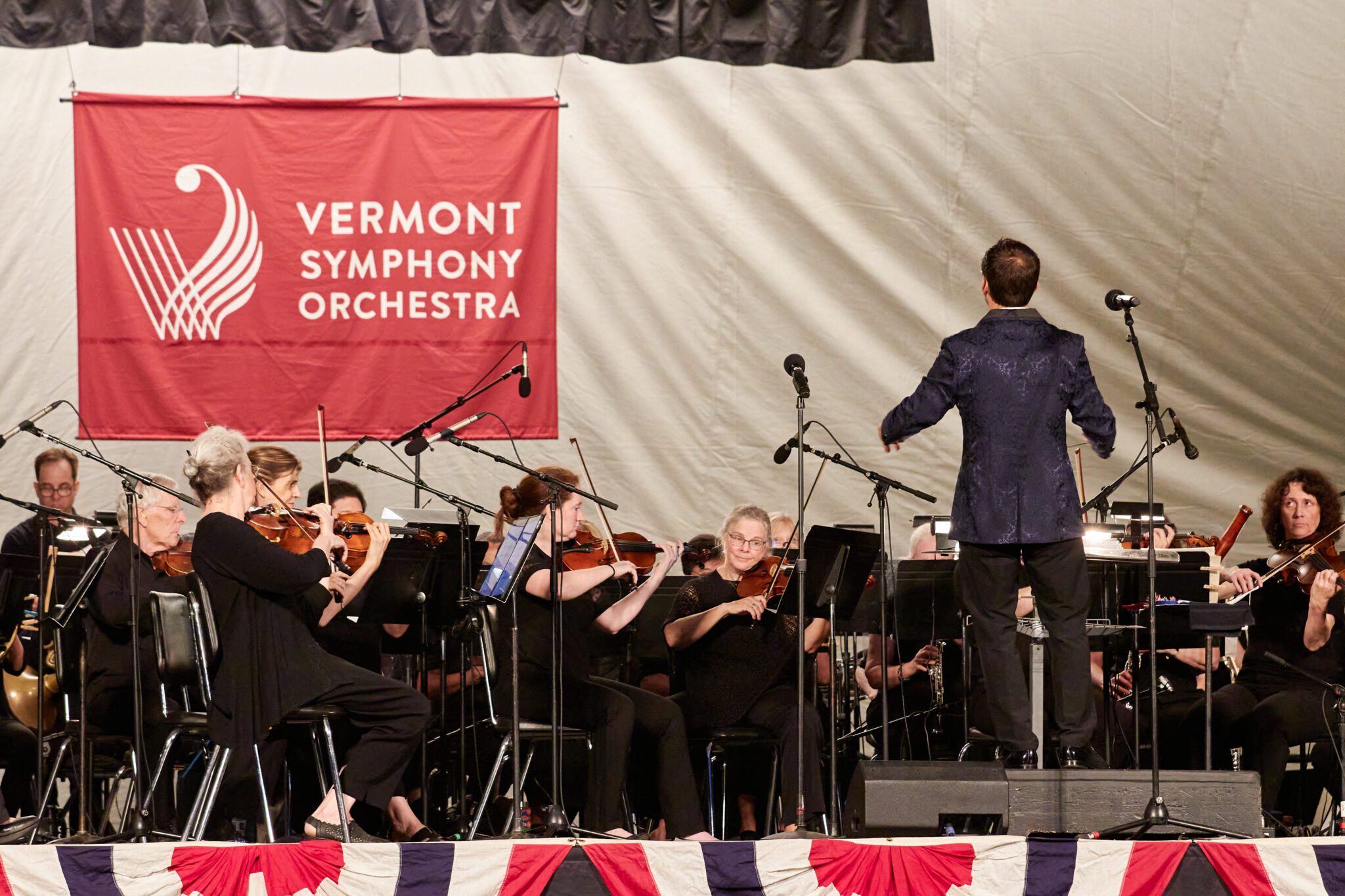 The orchestra switched from pop tunes to tangos during its vibrant set.
The orchestra switched from pop tunes to tangos during its vibrant set.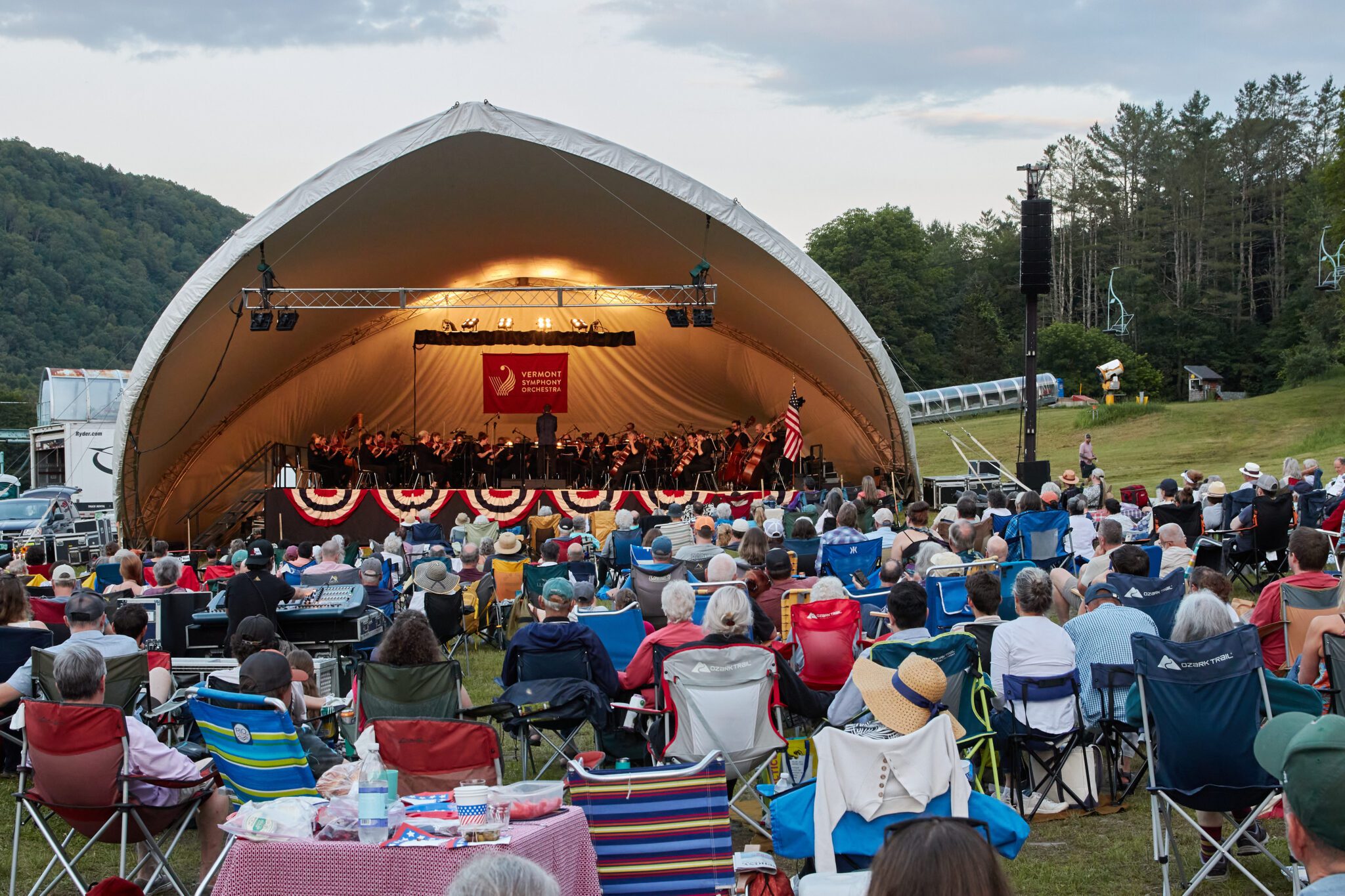 Visitors fill the field in front of the bandshell tent, which is set up at the base of the Bee Line trail.
Visitors fill the field in front of the bandshell tent, which is set up at the base of the Bee Line trail.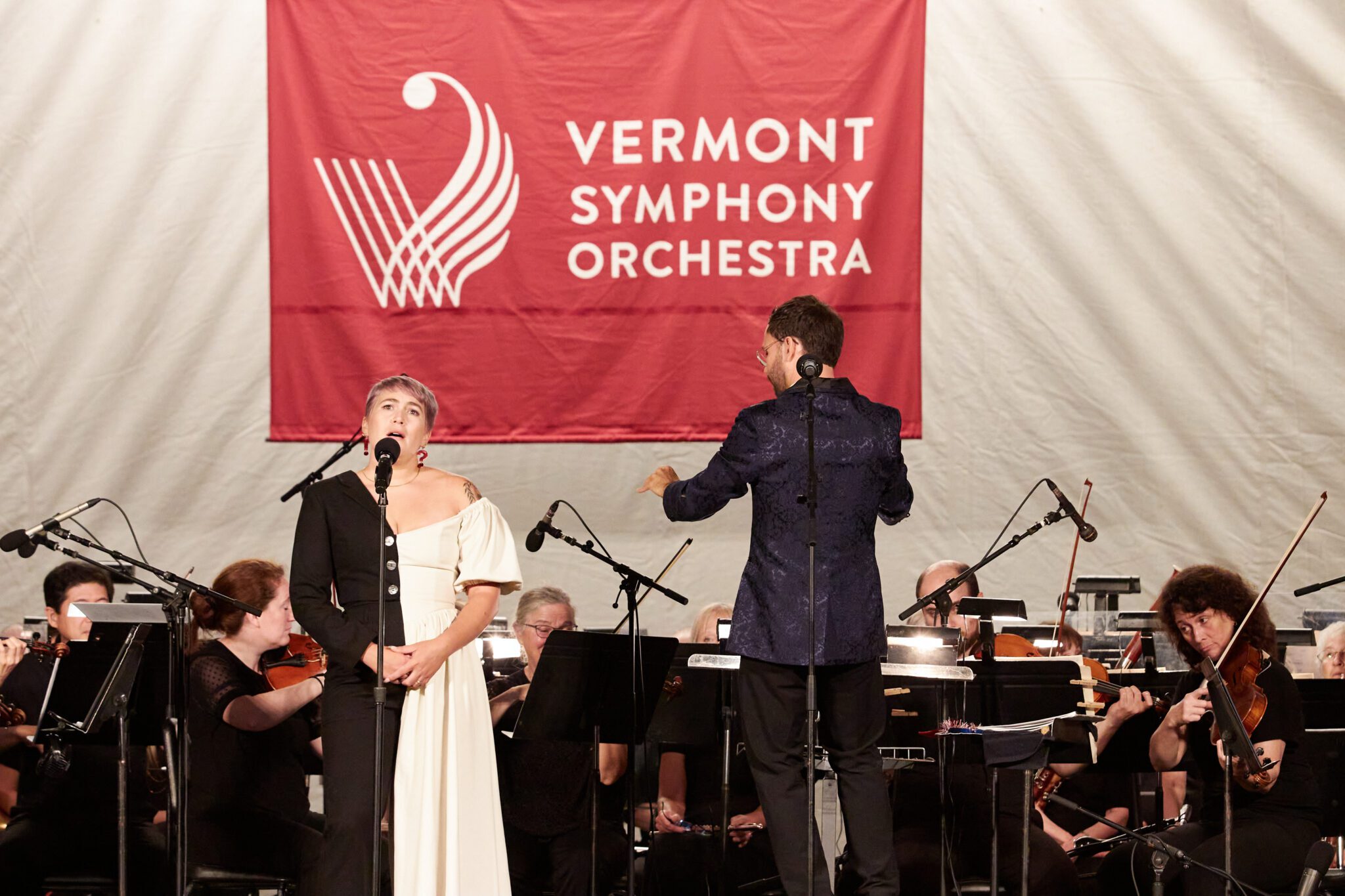 Guest vocalist Nikola Printz performs during the second half.
Guest vocalist Nikola Printz performs during the second half.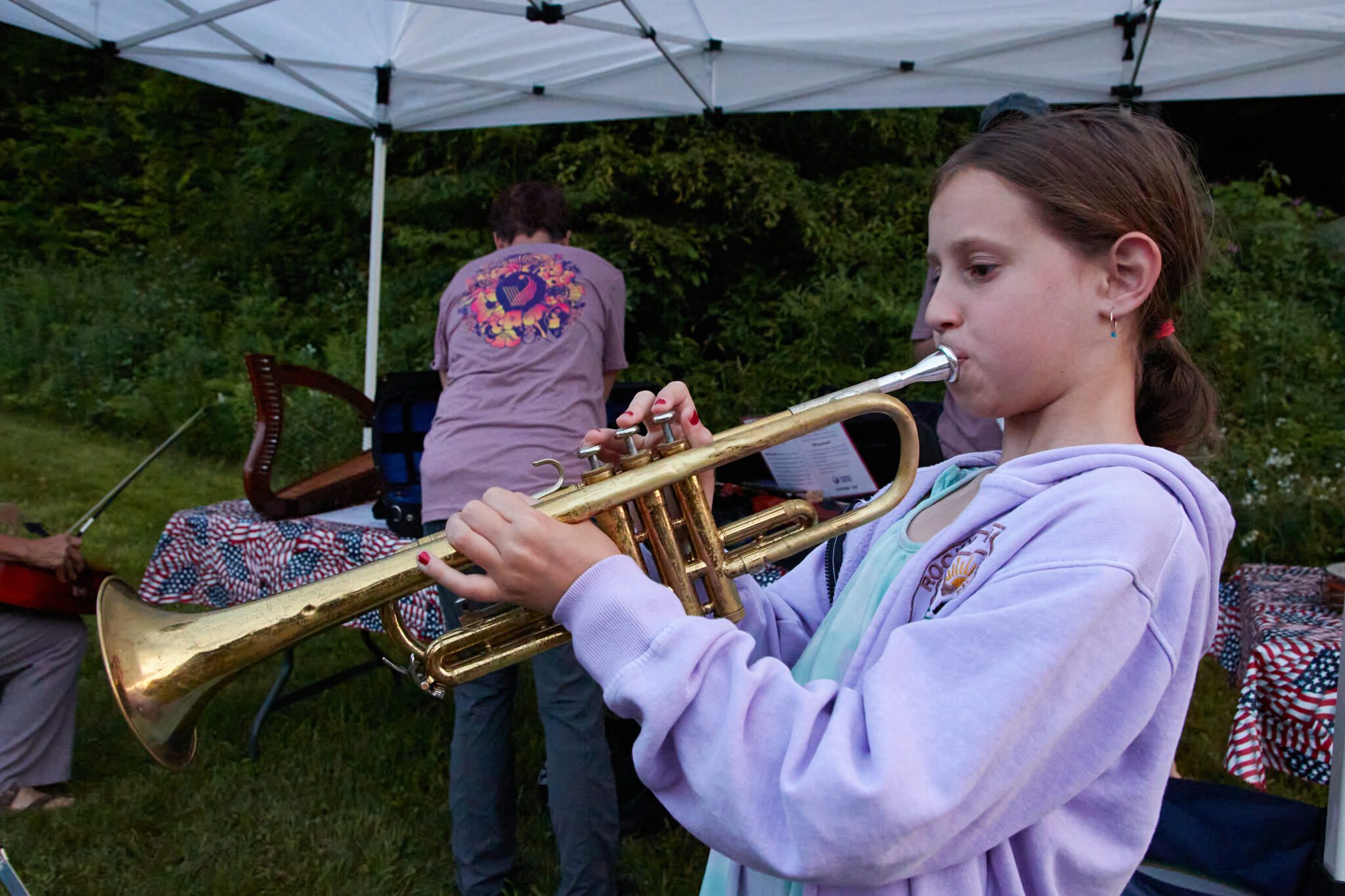 Ava Creighton, from Kensington, MD, stops by the instrument tent to try playing a trumpet. The orchestra brings along several extra instruments, such as violins, drums, and a cello, for curious visitors to play.
Ava Creighton, from Kensington, MD, stops by the instrument tent to try playing a trumpet. The orchestra brings along several extra instruments, such as violins, drums, and a cello, for curious visitors to play.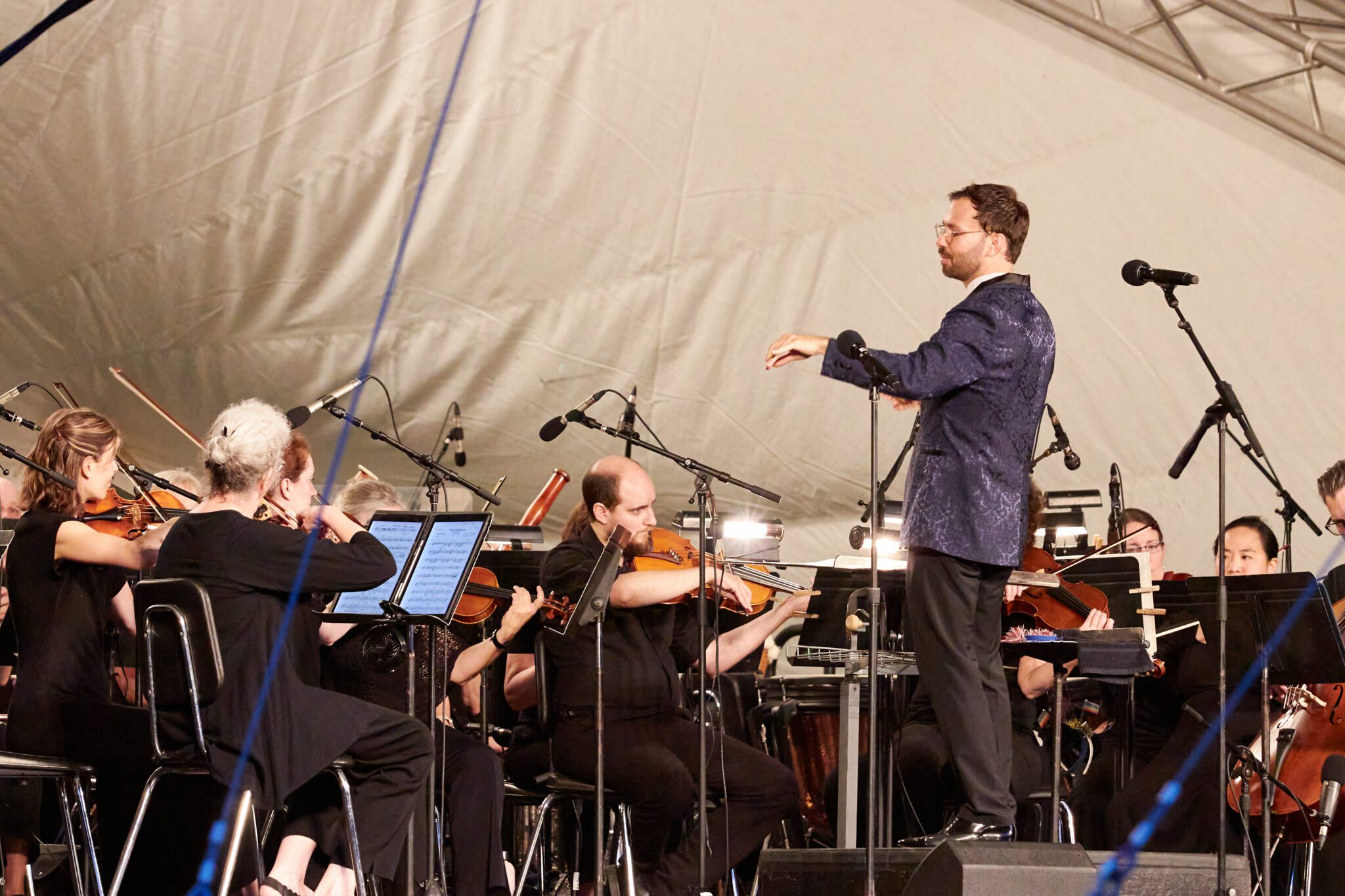 The orchestra plays Across the Stars, the love theme from Star Wars II: Attack of the Clones.
The orchestra plays Across the Stars, the love theme from Star Wars II: Attack of the Clones.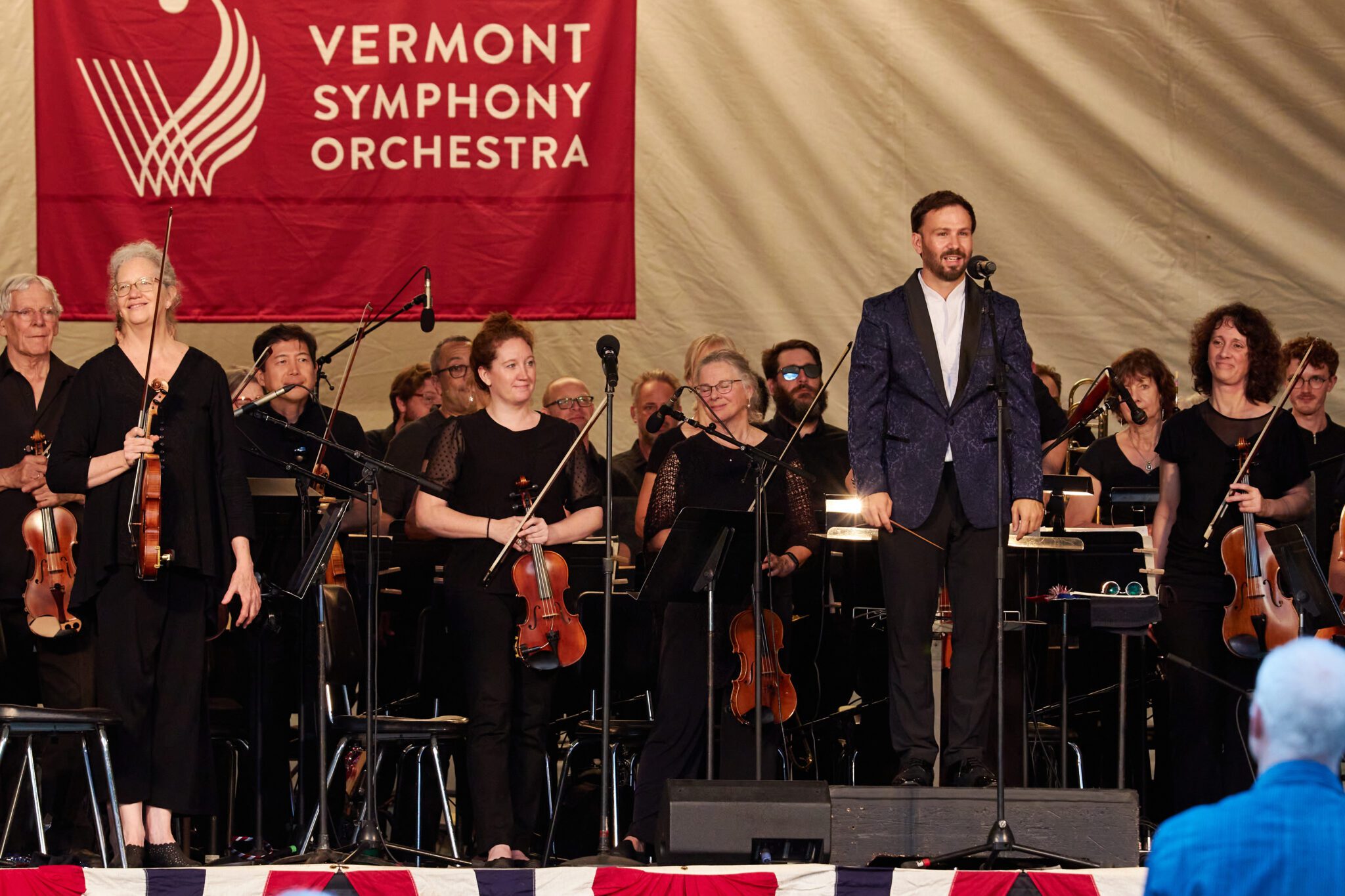 Conductor Andrew Crust and the orchestra members prepare to take a bow at the close of the first half.
Conductor Andrew Crust and the orchestra members prepare to take a bow at the close of the first half.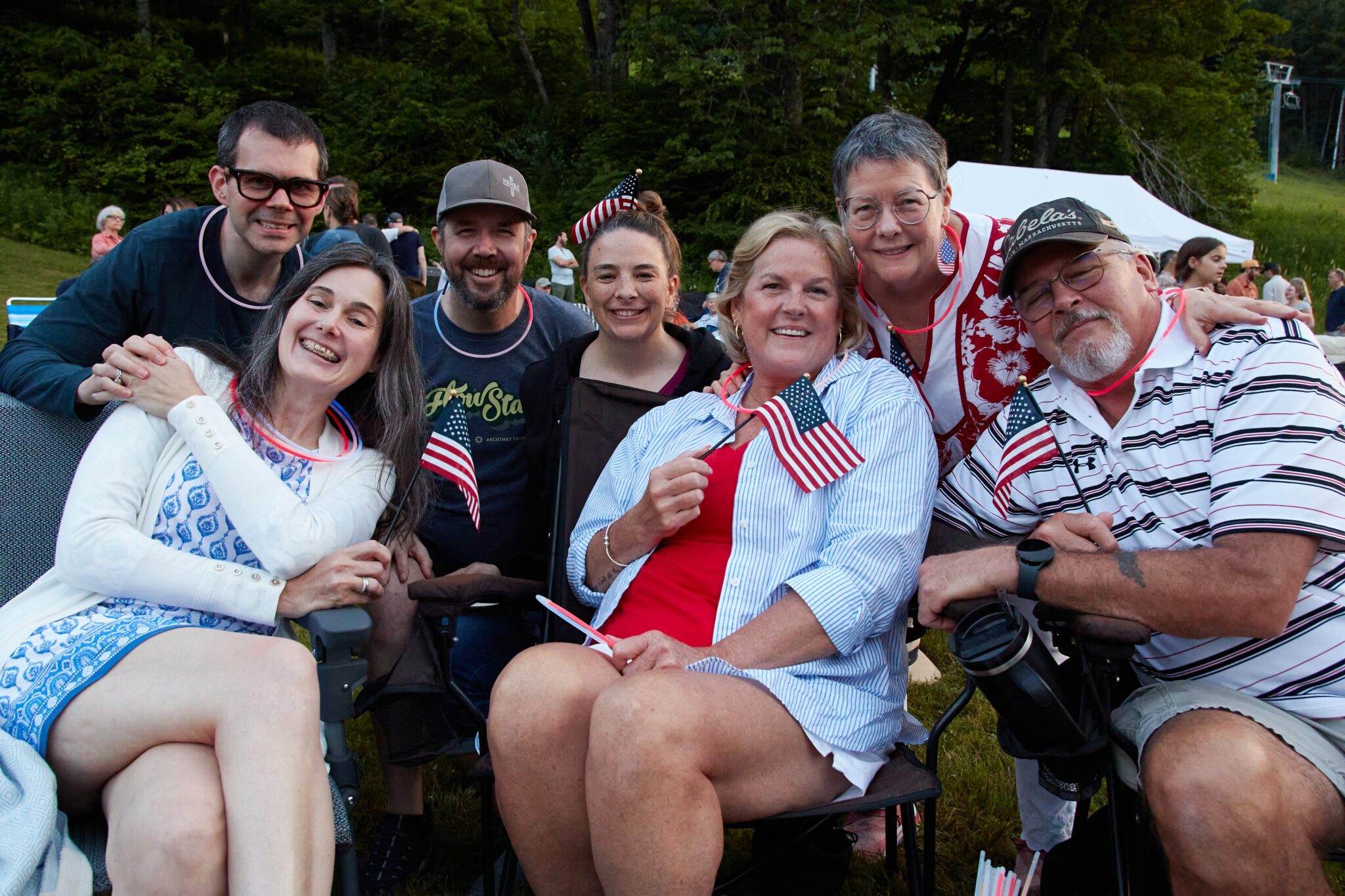 Decked out in American flags and glow necklaces, Brandon Roberts (left), Sheri Abild, Jeff Johnson, Kristin Prescott, Lisa Dubois, Rita Rice, and Norm Dubois traveled from Ascutney for the performance.
Decked out in American flags and glow necklaces, Brandon Roberts (left), Sheri Abild, Jeff Johnson, Kristin Prescott, Lisa Dubois, Rita Rice, and Norm Dubois traveled from Ascutney for the performance.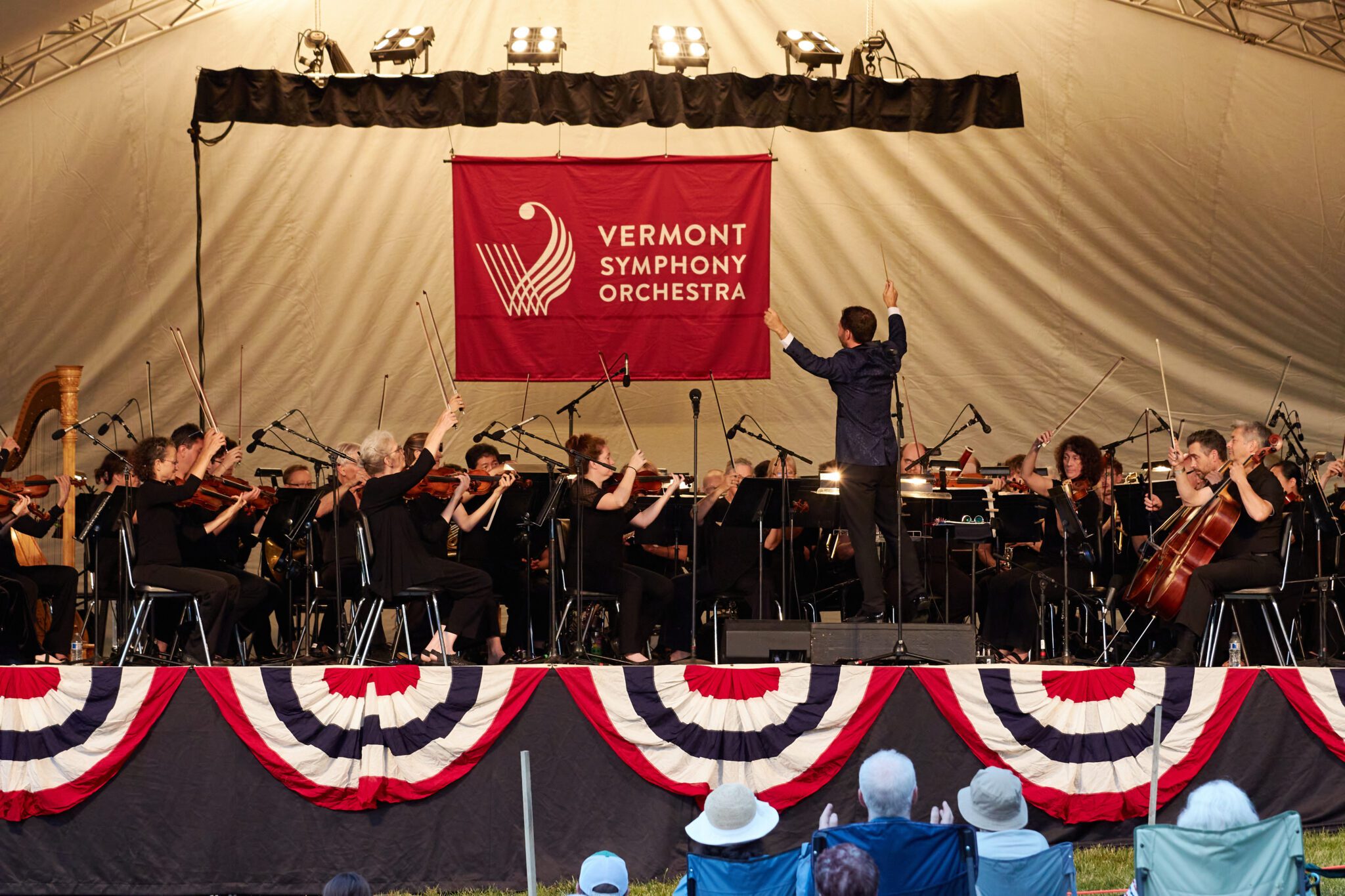
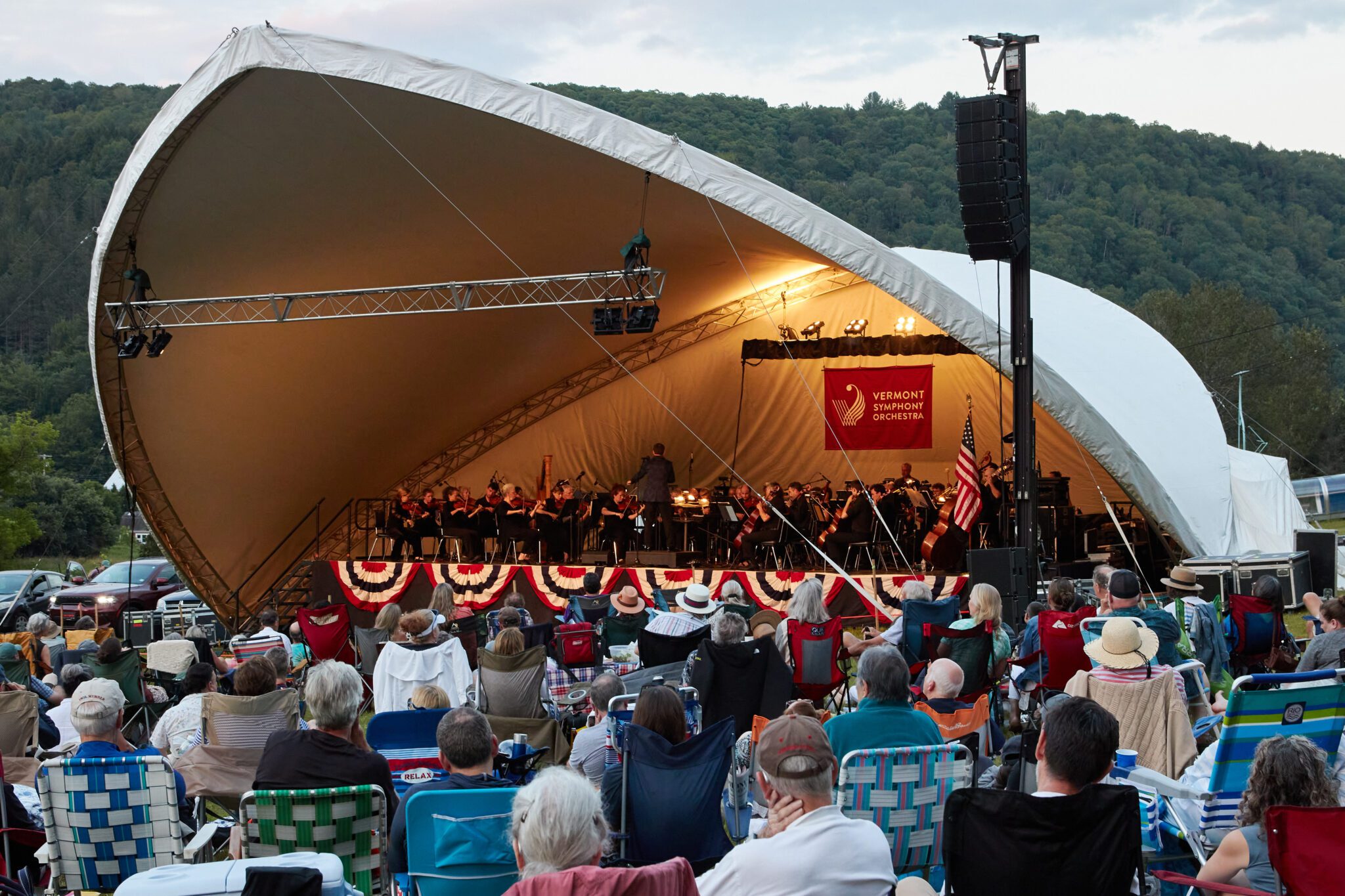 Visitors fill the field in front of the bandshell tent, which is set up at the base of the Bee Line trail.
Visitors fill the field in front of the bandshell tent, which is set up at the base of the Bee Line trail.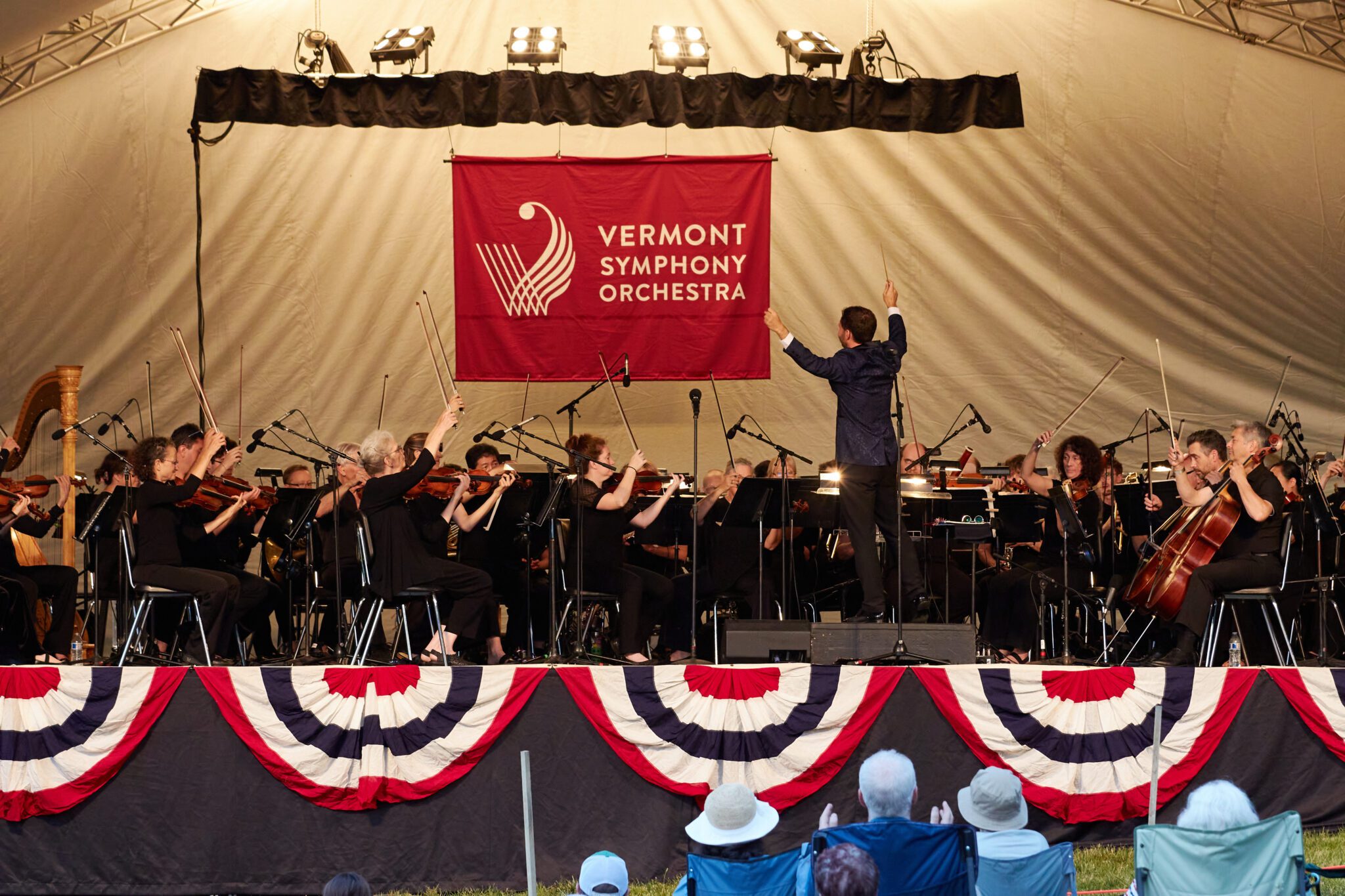 Conductor Andrew Crust leads the orchestra through the powerful closing moments of Tchaikovsky’s Romeo and Juliet Fantasy Overture, which closed the first half of the show.
Conductor Andrew Crust leads the orchestra through the powerful closing moments of Tchaikovsky’s Romeo and Juliet Fantasy Overture, which closed the first half of the show.
July 3
6:55 am
Sugarbush Farm is celebrating 80 sweet years of Vermont tradition
A gravel road winds upward through the Vermont countryside, past stone walls and maple groves, until it opens onto a scene that feels lifted from a postcard: rolling hills dotted with grazing cattle, an 1865 farmhouse bustling with visitors, and the sweet smell of maple syrup lingering in the air. This is Sugarbush Farm, where time moves to the rhythm of seasons and five generations of the same family have learned that the secret to survival is not just making great cheese and syrup — it is understanding that every visitor who climbs that winding road is part of the story.
“We are actually five generations strong, and we all work here,” Elizabeth Luce, the fourth generation to take care of the 550-acre farm, told the Standard this week. Her daughter represents the fifth generation on the farm, 80 years after her great-grandparents, Jack and Marion Ayres, bought the hillside land in 1945 with nothing more than a dream to make country living work.
What the Ayres family started 80 years ago has become something remarkable: a working farm that has not only survived but thrived by staying true to its roots while adapting to each new generation’s vision. Today, visitors can sample 15 varieties of hand-waxed cheese, taste four grades of pure Vermont maple syrup, and witness something increasingly rare in modern America — a family business where great-grandmothers work alongside great-granddaughters, each contributing their own piece to a legacy that spans nearly a century.
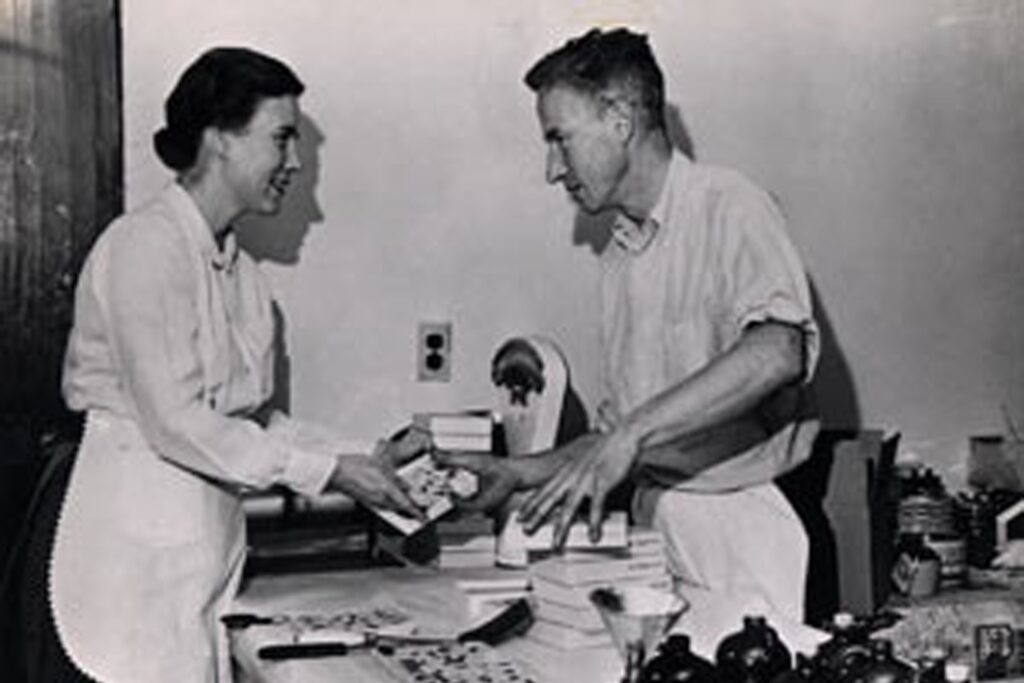
Founders Jack and Marion Ayres make candy in 1945, marking the beginning of Sugarbush Farm’s eight-decade journey from a young couple’s rural dream to a beloved Vermont agricultural destination. Photo Provided
Under Betsy Luce’s stewardship, Elizabeth’s grandmother, the farm has maintained its agricultural focus, while also becoming a place where locals and visitors can understand the work that goes into producing the food they eat. The maple operation alone requires tapping approximately 8,500 trees each spring, when temperature fluctuations create the perfect conditions for sap flow. Modern plastic tubing systems now complement traditional bucket collection, allowing visitors to see how maple syrup production has evolved while still maintaining its essential character.
The intergenerational collaboration that visitors witness isn’t just for show — it’s essential to the farm’s operation. When Betsy Luce runs ideas by her granddaughters, “they say yeah, and then they come up with an additional idea. And that blends together so that we come up with new things.” After more than two years working on the farm, the young women have mastered essential operational knowledge while continuing to rely on Betsy’s accumulated expertise for complex decisions.
To commemorate their 80th anniversary, the farm is hosting a special open house weekend on July 12 and 13, showcasing the full scope of its operation. The celebration will feature guided tours of the sugar house every two hours starting at 10 a.m., providing detailed explanations from active sugar makers rather than the usual self-guided experience. Saturday will include free maple creemees, while Sunday morning will offer complimentary pancakes with farm-produced maple syrup.
“We’re hoping this open house thing gets those folks to be more aware that we’re not just a cheese store,” Betsy Luce said. The weekend will demonstrate the integrated nature of their operation, helping visitors understand how diversified farming creates multiple revenue streams while maintaining sustainable land use practices.
Looking toward the future, Elizabeth Luce’s vision emphasizes continuity over expansion. “We’ve got a pretty good thing going right now, so I’d like to see everything stay the same,” she said, though acknowledging that successful operations must adapt to changing conditions while maintaining core values.
Whether visitors come to sample cheeses, observe maple syrup production, or simply experience the quiet beauty of working farmland, they participate in an agricultural tradition that bridges past and present.
For more on this, please see our July 3 edition of the Vermont Standard.
July 3
6:55 am
Marquis de Lafayette's bicentennial tour came to our area last weekend
Throughout the day last Saturday, local communities marked the bicentennial of the Marquis de Lafayette’s visit to the region with reenactments, speeches, historical presentations, and more. The tour arrived in Windsor at 7:30 a.m., journeyed to Hartland, Woodstock, and Barnard, and departed for Royalton at 1:15 p.m. In Woodstock, an enthusiastic crowd of approximately 100 spectators turned out.
Rick Russell Photos
July 3
6:55 am
Art in the open: Sculpturefest returns
Sculpturefest, a private Vermont property that has been transformed into a free outdoor gallery where art and nature intertwine, opens for the season this Sunday. The opening reception at 509 Prosper Road begins at 2 p.m., with artist meet-and-greets, as well as live music by Rose Hip Jam Band featuring Kerry Rosenthal and trio beginning around 3 p.m.
What began with five artists and a dinner party has become one of Vermont’s most enduring cultural traditions.
Charlet Davenport, who founded Sculpturefest in the early 1990s while serving on the Vermont Council of the Arts, transformed her family’s property into an outdoor gallery with some delightfully practical rules. All works must be “horse friendly” and “winter worthy,” as pieces remain on display year-round. Most importantly, everything must be safe for the school children who visit throughout the year as part of environmental education programs.
“We believe the land belongs to everybody,” Davenport explained, reflecting a philosophy that has made Sculpturefest free to attend while creating a space where art and nature coexist.
Rick Russell Photos
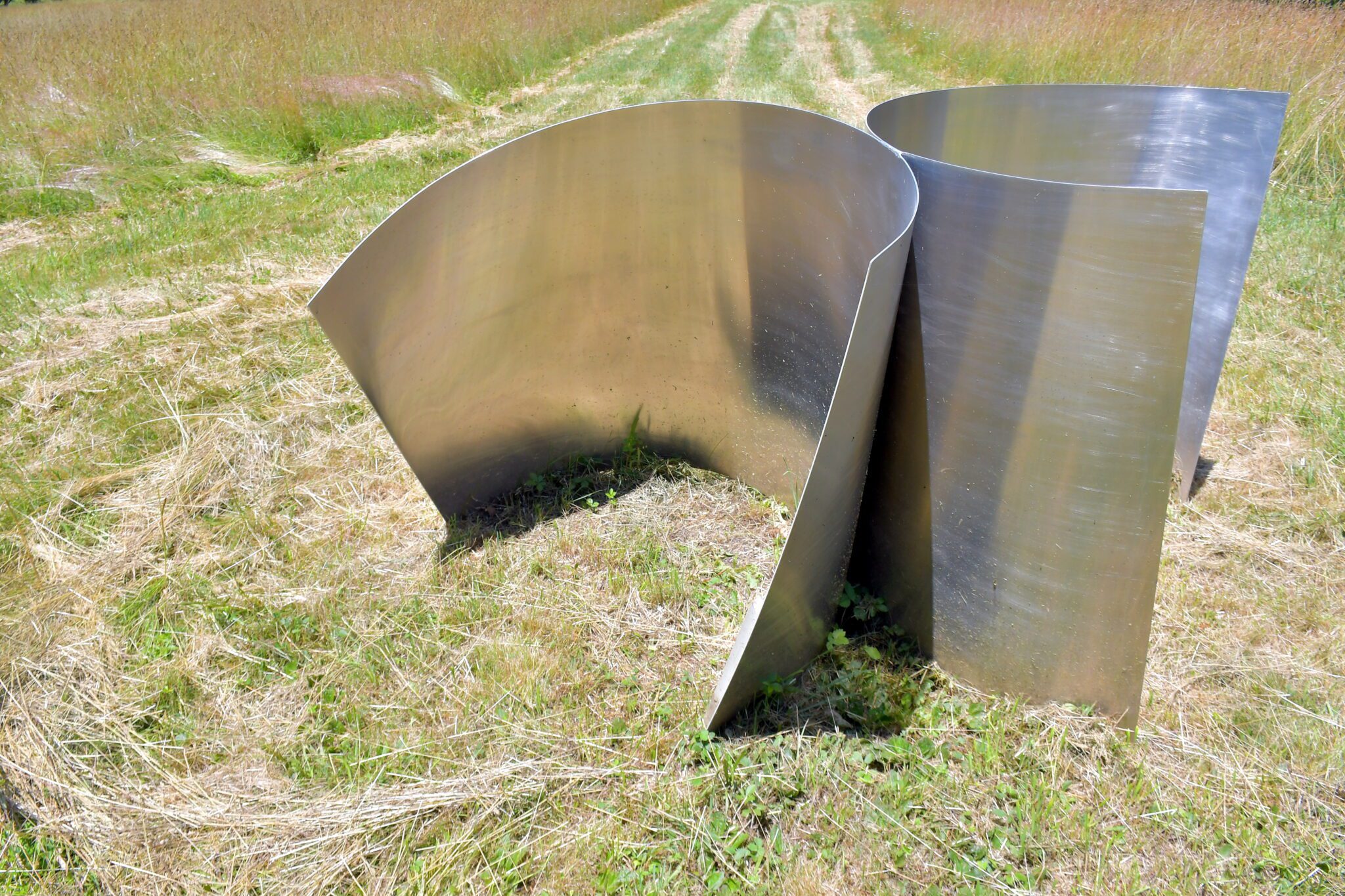 “Emergence” by Nira Granott Fox is a flowing metal sculpture that was created during the COVID pandemic, symbolizing hope and renewal as the world emerged from isolation into connection once again.
“Emergence” by Nira Granott Fox is a flowing metal sculpture that was created during the COVID pandemic, symbolizing hope and renewal as the world emerged from isolation into connection once again.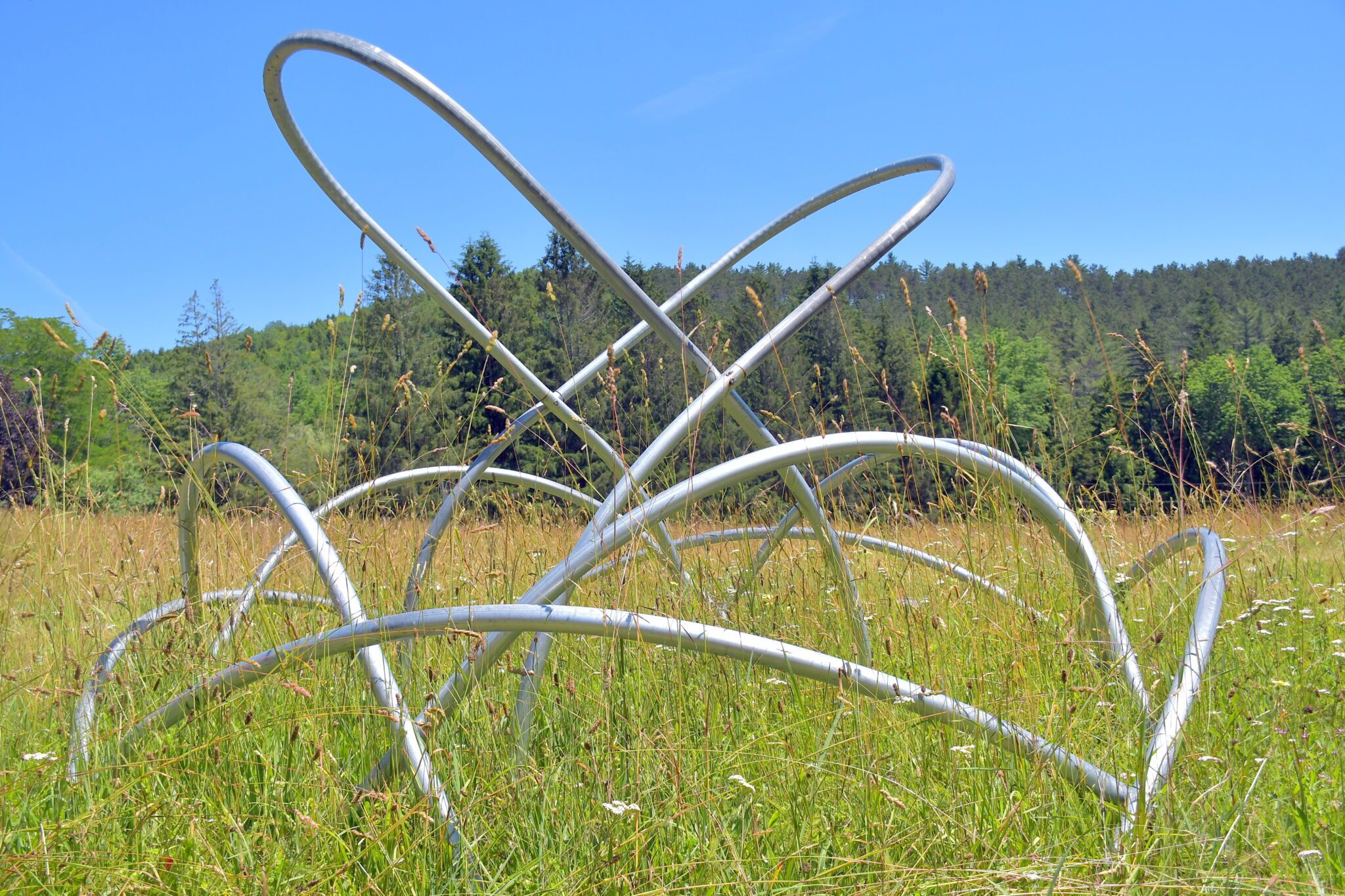 “Emergence” by Blaze Konefal is one of the new kinetic sculptures gracing Sculpturefest 2025, where art moves with the wind across Vermont’s rolling landscape.
“Emergence” by Blaze Konefal is one of the new kinetic sculptures gracing Sculpturefest 2025, where art moves with the wind across Vermont’s rolling landscape. “Emergence” by Nira Granott Fox is a flowing metal sculpture that was created during the COVID pandemic, symbolizing hope and renewal as the world emerged from isolation into connection once again.
“Emergence” by Nira Granott Fox is a flowing metal sculpture that was created during the COVID pandemic, symbolizing hope and renewal as the world emerged from isolation into connection once again.
Beyond the individual works, Sculpturefest represents something deeper than an art exhibition. The property includes a memorial willow maze with eight chambers, created 15 years ago to honor a deceased family member. Visitors can walk through the center path with four chambers on either side, adding a contemplative element to the artistic experience.
The atmosphere that has sustained Sculpturefest for over three decades goes beyond the sculptures themselves. Visitors are encouraged to settle in for conversations with artists, music, and the simple pleasure of art in nature. They should come prepared for walking on natural terrain and are encouraged to bring picnics to fully enjoy the pastoral setting.
The property includes a small playground for children, and the entire experience is designed to be accessible for families. Some sculptures are located on the adjacent King Farm property, offering adventurous visitors additional works to discover.
For more on this, please see our July 3 edition of the Vermont Standard.
July 2
6:55 am
Combo bike and taco shop set to open in time for foliage
Residents and visitors in search of dining options in Woodstock will have to wait until at least September for the opening of a unique new restaurant in the town’s East End.
Ranch Camp, a hybrid restaurant and bike shop that has been offering a uniquely Vermont combination of “beers, bikes and burritos” in Stowe since 2018, plans to open a second Vermont location in the former Citizens Bank building at 431 Woodstock Road prior to the start of foliage season. The combination fast-food taco place and mountain bike sales/repair shop is expected to open this fall.
The Ranch Camp bike shop will include sales, rentals, product demonstrations, and repairs, while the restaurant will serve handmade burritos, tacos, and salads.
For more on this, please see our July 3 edition of the Vermont Standard.
Sports
July 3
6:55 am
With H.454’s spending cuts, ‘everything is on the table’ — including school sports
Mountain Views School District Superintendent Sherry Sousa won’t speculate yet on where the seemingly inevitable spending cuts arising from the new state education bill will land the heaviest. But she does know how much students and parents care about the variety of “co-curricular” programming the district provides — and especially its beloved Woodstock Wasps. “Sports are really important to our communities, and theater, music, fine arts,” Sousa said, “But [House Bill] 454 really takes all that out of our hands.”
“Everything is on the table,” was the frank message that Sousa had for the Standard in a recent interview. The most current estimates project a reduction in MVSD’s budget of more than $6 million as a result of the new foundation funding formula laid out in the education bill.
“Two thousand dollars less per student means that we have to evaluate every program co-curricular beyond what is required,” Sousa continued. “So that means everything has to be on the table, which would include sports.”
Even though concrete changes remain years away, concerns about the potential fallout from H.454 on school sports programs were echoed by administrators and legislators throughout the Upper Valley in recent conversations with the Standard. Among the issues most frequently raised were the likelihood of school closures, reduced participation rates, and questions around the impact on equity and access to school sports for lower-income Vermonters.
For Sousa and others, it is a prime example of how a matter of high local priority was largely overlooked during recent debates in Montpelier, which focused almost exclusively on bringing down the cost of education statewide.
For more on this, please see our July 3 edition of the Vermont Standard.
July 2
6:55 am
How to exercise safely when heat waves strike
Whether you are heading out for a pickleball match at Vail Field, some gravel biking around Mt. Ascutney, or just a morning run along the river, it’s the time of year to practice responsible heat safety measures when exercising outdoors.
Early summer heat waves like the one we had during the last week of June — when daily temperature records were shattered all over the state, and the mercury climbed as high as 98 degrees in Woodstock — can be especially dangerous, according to Jared Ulmer, Climate and Health Program Manager at the Vermont Department of Health.
“A lot of people at this time of year might not realize how long it takes your body to adapt to activity in hotter conditions,” Ulmer told the Standard. “We tend to see more heat-related illnesses at this time of year, because we’re still getting used to the heat. It’s one thing if it’s August and your body is already used to it — but if it’s one of your first few times out in the heat, you’re really going to want to take extra precautions.”
Ulmer offers three tips to keep in mind when planning for outdoor recreation during the summer months.
Stay hydrated
“You really want to be thinking about staying hydrated before getting started with your activities,” Ullmer points out. “When you’re heading out the door, you want to make sure you’re bringing enough water for however long you plan to be out — and maybe even a little more, because sometimes things end up taking longer than expected.”
The American Council on Exercise recommends drinking seven to 10 ounces of water for every 10 to 20 minutes of exercise.
Take breaks
This one varies by person and type of activity, Ulmer says. “But taking frequent breaks, somewhere preferably out of the sun — at least in shade, if not in a cooler place — is really important.”
Bring a buddy
“At a certain point, when we’re being affected by heat-related illnesses, it can be hard to take care of ourselves. So have someone else there to help stay aware, so you can look out for each other — it’s more fun that way, and it’s a really good safety tip.”
For more on this, please see our July 3 edition of the Vermont Standard.
Video Features
June 18
6:55 am
June 17: Legislative update with State Rep. Charlie Kimbell
Obituaries
July 3
6:55 am
Joan Elizabeth Dubeau
Joan Elizabeth Dubeau, 76, passed away June 22 at her home in Woodstock.
Joan is predeceased by daughter Lisa Michelle Dubeau, and her parents Roger B. Thompson and Alice Griggs Thompson. She is survived by her husband Charles of 58 years, a brother Roger (Terry), nephew Peter (Jennifer), and a niece Sarah (Kapharine).
A graveside service will be held on Saturday, July 12 in the Prosper Cemetery, beginning at 11 a.m.
The family requests that in Joan’s memory, you pay forward kindness to others as she did her entire life.
The Cabot Funeral Home is assisting the family. An online guestbook can be found at cabotfh.com.
July 3
6:55 am
Service for Charles A. Martin, Jr. will be on July 10
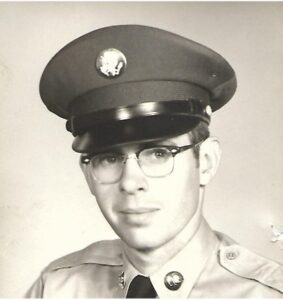 A service for Charles A. Martin, Jr. of Woodstock, Vermont will be held in the Chapel at the Vermont Veterans Memorial Cemetery in Randolph Center, Vermont on Thursday, July 10 at 1 p.m.
A service for Charles A. Martin, Jr. of Woodstock, Vermont will be held in the Chapel at the Vermont Veterans Memorial Cemetery in Randolph Center, Vermont on Thursday, July 10 at 1 p.m.
June 26
6:55 am
Cindy Cook
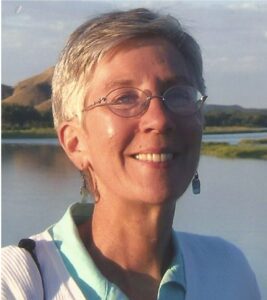 Cindy Cook, of Woodstock, died peacefully Sunday, June 22, 2025, in her home surrounded by family. She moved to Woodstock from Andover, Mass. in October of 2020, and joined the North Universalist Chapel Society of Woodstock as soon as services could be attended in person.
Cindy Cook, of Woodstock, died peacefully Sunday, June 22, 2025, in her home surrounded by family. She moved to Woodstock from Andover, Mass. in October of 2020, and joined the North Universalist Chapel Society of Woodstock as soon as services could be attended in person.
A passionate educator of adults learning English, Cindy also proudly served on the board of Lawrence Community Works in Lawrence, Mass. A long-time book group member and small group ministry leader, she formed many lasting friendships.
Cindy was born on October 21, 1946, in Lawton, Okla. She leaves behind her husband of 55 years, Dave Cook; daughters Sarah Cook of Cavendish, Vt., and Elizabeth Cook of Corpus Christi, Texas; sons-in-law Eric Krasnauskas and Dale Pattison; grandchildren Grant and Briar Krasnauskas; sister Pat Haith (Mike) and brother Dan Miller (Cindy); many cousins, nephews and nieces; and her beloved cat, Simone.
Much gratitude to Edith Araya for her tender care of Cindy in her final weeks.
Donations in Cindy’s honor can be made to North Universalist Chapel Society of Woodstock or The Lewy Body Dementia Association.
A memorial service will be held on Sept. 27. Details will be announced at a later date.
An online guestbook can be found at www.cabotfh.com.
June 26
6:55 am
Barbara Dickey
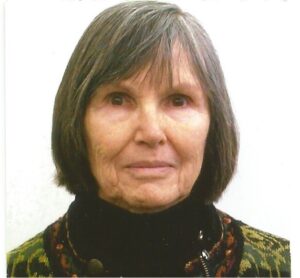 Barbara Dickey, 91, died peacefully on Monday morning June 16 at her home in Proctorsville surrounded by her family.
Barbara Dickey, 91, died peacefully on Monday morning June 16 at her home in Proctorsville surrounded by her family.
Barbara was born February 27, 1934 in Minneapolis, Minn. to Charles and Elizabeth Dickey. She attended Stanford University and University of Arizona for her undergraduate degree and the University of Minnesota for her Masters and PhD in Educational Psychology.
In 1955, Barbara married Wilbur French and they had three children, Robin, Kimberly and Andrew. In 1975 they divorced and shortly afterwards Barbara moved to Brookline, Massachusetts to run the evaluation unit at Massachusetts Mental Health Center. Barbara was a member of the faculty at Harvard Medical School. As Associate Professor, she won national recognition and support for her research on the delivery of mental health services for persons with serious mental illness. Barbara was an expert on public insurance systems for persons living with serious mental illness, and became a very highly regarded researcher in her field. While at Harvard Medical School Barbara received funding for her research from the National Institutes of Health. She published 85 articles in peer-reviewed journals, including The New England Journal of Medicine, The Journal of the American Medical Association, and the International Journal of Law and Psychiatry among many others.
Barbara made her first trip to Vermont in 1983. She fell in love with the area and built a home in Chester. After 15 years in Chester she moved to Proctorsville where she lived until her death. Friends and family joining her on weekends knew they would enjoy tremendous meals, lively conversation around the dinner table, the beauty of her extensive gardens, and her always informed take on current events, art, culture, and music. She started the Cavendish Community Fund with her friends, investing in community improvements and events.
Barbara leaves behind her brother Harrison Dickey (Chang Mai, Thailand); her children Robin Manthei (Ham Lake, Minn.), Kimberly French (Woodstock, Vt.), and Andrew French (Proctorsville, Vt.;, her son-in-law Mark J Spartz; her grandchildren Nicholas Manthei (Elif Manthei) and Charlie Manthei; and six great-grandchildren. She loved her nieces Susan Taggart (Jim Taggart) of Wallingford, Vt., and Jennifer Argyros and their children James, Harrison, and Maureen Taggart and Sage and Elizabeth Argyros.
A service for Barbara was held on Friday, June 20 in Killington, Vt.
An online guestbook can be found at cabotfh.com.
June 25
6:55 am
Edith Schiele
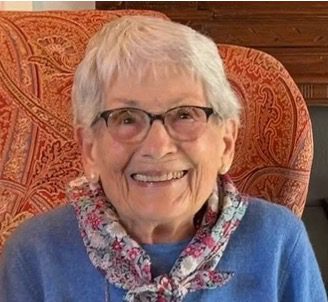 Edie Schiele would beam with pride over each one of her six children. “Aren’t they wonderful?” she would say with a broad smile and a twinkle in her eyes. Indeed, her children gave her immense happiness in her long, joy-filled life.
Edie Schiele would beam with pride over each one of her six children. “Aren’t they wonderful?” she would say with a broad smile and a twinkle in her eyes. Indeed, her children gave her immense happiness in her long, joy-filled life.
Edith Laura Baer Schiele, age 97, died peacefully on June 4, 2025, at her home in Cambridge, N.Y., with two of her six children and a dear friend by her side.
Edie was born on February 10, 1928, in Boston, Mass., to Harold Meyer Baer and Agnes Friedman Baer. Agnes was an artist and silversmith, and Edie inherited her mother’s creative sensibilities. Early in her childhood, the family moved to St. Louis, Mo., where Edie grew up around the corner from Herbert S. Schiele, Jr. Edie and Herb married in 1949, shortly after her graduation from Wellesley College, a union that endured until Herb’s death in 2000.
The family that would become the pride of Edie’s long life soon got underway with two sons born in St. Louis, and a daughter born in Oakland Calif., where Herb was completing his military service as a medical doctor. In 1955, the growing family moved cross-country and settled in Philadelphia, Pa., near to family. There, Edie devoted her time to her family (a third son was born shortly after they arrived) and her many flower and vegetable gardens. She was an accomplished craftsperson who directed her creative instincts into needlepoint (cushions and seat covers), weaving (including a sport coat for Herb), sewing (an array of dolls in historically accurate clothing that were displayed in a local storefront), and knitting (sweaters for everyone). Starting with a first edition copy of “The Joy of Cooking” and a subscription to Gourmet Magazine, Edie mastered the art of preparing meals that were creative and delicious. She was passionate about music, from Bach to folk, and conveyed this love to her children, two of whom became musicians..
During the 1960s, the family expanded with a fourth son, a second daughter, and a Corgi named Lucy. With the kids attending Germantown Friends School both Edie and Herb found a welcoming community at the Germantown Friends (Quaker) Meeting, attending regularly and ultimately joining as full members of the meeting. This community nourished Edie’s long dedication to social issues and the environment, values that she modeled for her children and championed throughout her life.
In the mid-1960s, Edie and Herb bought an abandoned farm house in East Barnard, Vt., which became the family’s summer, and sometimes winter, retreat (also an opportunity for Edie to plant more gardens). Then, after the last child had graduated from high school, Edie and Herb moved full time to Vermont and to the life of gardening, nature, and the community they had built there over twenty years. Following Herb’s death in late 2000, Edie moved to Cambridge, N.Y., where fourth son Edwin had settled. Even as she was starting a new life at the age of 72, Edie quickly put down roots, bonding with those who came into her orbit. Edie grew a devoted group of friends who will miss her generosity and spirit.
Edie is survived by her sister Jean O’Gorman of Santa Fe, N.M.; her children Tom Schiele (Kit) of Jaffrey, N.H., Ted Schiele of West Groton, N.Y., Maggie Sullivan (Dave) of Brattleboro, Vt., Jonathan Schiele (Christina Nypaver) of Richmond, Calif., Edwin Schiele (Debby Jaffe) of Cambridge, N.Y., Kate Duffield (Michael) of Boxford, Mass.; eleven grandchildren; and two great-grandchildren. She was predeceased by her husband, Herbert, her two brothers, Thomas and Edward, and daughter-in-law Christine Griffin. A private celebration of life is planned.
Those wishing to honor Edie’s memory may make contributions in her name to Comfort Food Community, PO Box 86, Greenwich, NY 12834 (comfortfoodcommunity.org), the Cambridge Food Pantry, PO Box 473, Cambridge, NY 12816 (cambridgefoodpantry.com), and Hubbard Hall Center for the Arts and Education, 25 E. Main St., Cambridge, NY 12816 (hubbardhall.org)
June 25
6:55 am
Jean Olson
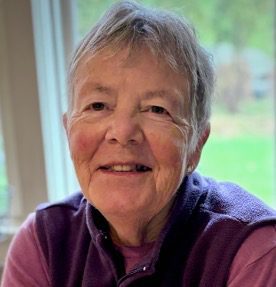 Jean Olson, beloved wife, mother, and friend, passed away from advanced ovarian cancer on June 6, 2025, three years after diagnosis. She felt fortunate to pass at home with her loving family and close friends by her side.
Jean Olson, beloved wife, mother, and friend, passed away from advanced ovarian cancer on June 6, 2025, three years after diagnosis. She felt fortunate to pass at home with her loving family and close friends by her side.
Born in 1948 to Marguerite and John Remington, Jean grew up in Vermont at a time and place that offered her a childhood full of opportunities. The first few years were marked by tumult as Jean and her sister were sent to live with family in New Hampshire while their mother spent two years recovering from tuberculosis in a sanitarium. The family was reunited in 1954 and moved to Woodstock, where her parents bought a 1791 farmhouse on Prosper Road. The local farmers cautioned them against buying a 100-acre property with no running water, electricity, central heating, or indoor plumbing. But Marguerite had a vision for her family and home and carried it out. Her talent to realize the potential in the overlooked was a gift she passed on to her daughter. Jean would later harness this gift in service to her community throughout her life.
The ‘50s and early ‘60s were a magical time to be a child on a farm in Woodstock. Jean and her two sisters spent their days playing outdoors, riding, swimming, skiing, and skating. One of Jean’s favorite memories included getting her library card at the Norman Williams Library by standing on a stool to sign the big book of members. Another favorite memory was of her mother lightly penciling the names of the piano keys on the old grand piano (a relic left on the farmhouse from the Civil War as it was too large to move) so Jean could read and play. She subsequently took up the guitar, which led to a lifetime of playing music with others, including 20 years in a flute trio and later singing with Bob Kinzel and Leigh Seddon, The Barn Band, into her last months.
Education was central to Jean’s life. Her parents encouraged her to go to college at a time when it was not expected for women. She attended Skidmore and then Johnson State College where she graduated with a BA in music. In mid-life Jean returned to education, earning her master’s degree in education from Norwich University at Vermont College and a doctorate in education from University of Vermont.
Jean met her beloved husband, George Olson, at Johnson State and they were married in July 1969. They lived in Montpelier for a year before George was drafted during the Vietnam War, which sent them to basic training in Baltimore and then to Vietnamese Language School in El Paso. Jean felt fortunate that George’s deployment orders were changed from Vietnam to Europe as the war was winding down. The couple left Texas for Dusseldorf, Germany where Jean worked with the British Army in the transport unit for displaced persons from WWII. Her two main tasks were making tea and delivering mail around the compound twice a day. The initial interview consisted of two questions: Can you type? Yes. Can you make tea? No, I don’t drink tea and don’t like tea. They hired her regardless and then enjoyed plenty of jokes about the sad quality of her tea.
Upon release from military service, Jean and George settled back in Vermont. They were blessed with two beautiful daughters–Emilia in 1979 and Sarah in 1981. One of the big family adventures was the year spent in the Turkish Republic of North Cyprus in 1990 when her daughters were just 9 and 11. George had a Fulbright to teach at a Turkish high school and Jean taught English to Turkish college students. The family faced enormous challenges in Cyprus, and yet, when they were encouraged to return to Vermont as the Gulf War began, they agreed they had worked hard to build a life in an unknown place and decided to stay. They finished the Fulbright year and also took the opportunity to travel to Egypt, Israel, and Italy.
Jean was a treasured member of the Montpelier community. Over the years she volunteered with the Barre Opera House, OUR House, the Kellogg Hubbard Library, the Montpelier Foundation, was elected to the Montpelier City Council and the Montpelier Senior Activity Center Advisory Council. She worked on the Enhanced 911 project and in retirement for the House Clerk’s Office at the State House. Her fundraising work allowed Woodbury College to relocate to a much larger location, currently the CCV location in Montpelier.
Her twenty years of teaching elementary and adult learners while volunteering on local boards, prepared Jean for the culmination of her professional life when she became Executive Director of the Governor’s Institutes of Vermont in 1994. In her 16 years at the helm, Jean transformed the organization from one on the brink of bankruptcy to a thriving institution. She moved the GIV office into her home to control costs and expanded the number of institutes through savvy fundraising. Jean believed in the transformative power of opportunity and loved to see more and more students attend the institutes each summer, which she described as “magic” while others viewed it as a testament to her dedication. Today, GIV offers summer programs to high school students ranging from the arts and science to civic engagement and international issues.
Montpelier has lost a visionary force and Jean will be greatly missed not only by family but by her treasured community. Resilience, optimism and a self-proclaimed “sturdiness” were just some of Jean’s faithful traits throughout her life. These guideposts, along with her love for her family and dearest friends, and a lifelong appreciation for her life in Vermont, sustained her to the end.
Jean and her family want to thank her caregivers, all of whom offered compassion alongside their professional expertise: Dr. Gamal and Georgia Eltabbakh, staff at CVMC especially Katie Hall, Dr. Rachel Gaidys, the Hematology and Radiation teams, and Bayada Hospice especially Nurse Kat Placek.
Jean was predeceased by her parents and her younger sister, Diane (Remington) Starr. She leaves behind her loving husband, George Olson, her cherished daughters and their spouses Emilia Olson (Jacob Rogen) and Sarah Olson (Josh Rudman), her younger sister Mary Gulbrandsen (David Gulbrandsen), along with her niece Justina Starr (Kay, Zac, Aziza and Musa Kasanga), nephew Isaac Starr (Megan Lizotte), and many other dear relatives and friends.
A memorial service will be held at Vermont College Alumnx Hall, 45 College Street, Montpelier, VT at 1 p.m. on Sunday, June 29.
Memorial contributions may be made to: The Jean Olson Fund at The Governor’s Institutes of Vermont at https://giv.org/.
June 18
6:56 am
Bernardo Coelho
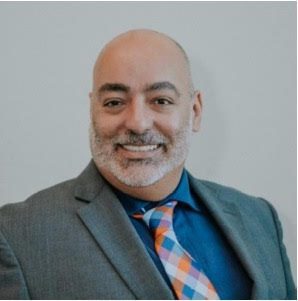 It is with great sadness we announce the passing of Bernardo Coelho at his Bridgewater home on June 7, 2025. Bernardo ascended his “Stairway to Heaven” and he is now enjoying some 70s and 80s rock and cooking heavenly food for his previously departed friends and family and all of his new eternal friends.
It is with great sadness we announce the passing of Bernardo Coelho at his Bridgewater home on June 7, 2025. Bernardo ascended his “Stairway to Heaven” and he is now enjoying some 70s and 80s rock and cooking heavenly food for his previously departed friends and family and all of his new eternal friends.
Executive Chef Bernardo had a rich culinary background that was deeply influenced by his Brazilian, Italian and Lebanese heritage. He was born in Belo Horizonte, Brazil and earned his culinary degree there in 1997. The following year he emigrated to the U.S. and worked his way up the culinary ladder from cook, sous chef, chef and eventually executive chef with positions in Miami, Montreal, Boston and New York City. The executive chef positions with Restaurant Associates took him to Los Angeles and Boston under the tutelage of Wolfgang Puck and eventually to run the food service for the U.S. House of Representatives and then the U.S. Senate. Bernardo loved to recount that at the biennial House welcome dinners for new representatives, the Democrats would specify the number of vegetarian, gluten-free, and other special dinner requests whereas the Republicans were all fine with meat and potatoes. He also said that he and the staff always appreciated that Sen. Bernie Sanders never made them exit the elevator as others did when they wanted to get on. Bernardo also loved that Bernie was on his way to his Ford Focus instead of the fleet of Suburbans like other senators.
Bernardo and Lizzie met on a blind date in Old Town Alexandria, Va. for their favorite Thai food. A beautiful wedding, well catered by Bernardo, took place in Annapolis, Md. in June 2012. They lived in Annapolis and the L.A. and Boston areas and grew to a family of six with four wonderful children now aged 4 to 11 years. After Nana and Popi moved to Bridgewater in 2020, the Coelho family followed in 2021. Bernardo fell in love with Vermont and traded his corporate dreams for this most beautiful part of the world. He often said that we lived in paradise. Bernardo secured executive chef positions at Simon Pearce and The Prince & the Pauper before moving back under a corporate umbrella at Mt. Ascutney Hospital. Wednesday’s Chef’s Table became a big hit at the hospital with even the locals trekking to the hospital for lunch.
Lizzie and the rest of the family are so fortunate to have such a supportive and generous group of friends in the Woodstock area. The outpouring of love and prayers during this very difficult time has been overwhelming and so appreciated. Bernardo leaves his spouse Elizabeth, daughters Eloisa, Marina and Nora, son Jack, Lizzie’s parents Donald Jones and Annie Smith-Jones (“Mom and Dad” to B), brothers-in-law Alex, Andrew and Austin and lots of other in-laws, as well as family in Brazil. A memorial celebration is being planned for Friday June 20 at 2 p.m. at Our Lady of the Snows Church in Woodstock. Following the celebration, all are invited to a gathering on the lawn at the family home on 403 North Bridgewater Road. A GoFundMe has been set up by friends for Lizzie and their children at gofund.me/42bdb2c3.
An online guestbook can be found at cabotfh.com.
June 18
6:55 am
Aileen Kress Seitz
 Aileen “Lee” Kress Seitz was born on January 28, 1942 to Marie Shadwell Kress and William Kress in Hackensack, N.J. She married Charles Seitz in 1964 in Woodridge, N.J. and they moved to South Woodstock in 1969.
Aileen “Lee” Kress Seitz was born on January 28, 1942 to Marie Shadwell Kress and William Kress in Hackensack, N.J. She married Charles Seitz in 1964 in Woodridge, N.J. and they moved to South Woodstock in 1969.
Lee was passionate about healthy food so she and Charly made a homestead out of their land raising livestock and creating a huge garden which supplied the quality of food that Lee wanted for her family. Her children always said they would feed their own families the junk food they rarely got, but sadly for her grandchildren her healthy ways stuck with them as well.
Lee will be remembered for her amazing baking skills including stellar apple muffins, a world class apple pie and chocolate chip cookies. Her cookies were so sought after her nephew would often sneak in the kitchen in the middle of the night and eat several batches until they were gone.
Lee fiercely loved her grandchildren who called her Tutti. She always made time to watch them while their parents were at work. Often at the end of the day after patiently dealing with their shenanigans, she had her bag at the door ready to head to the peace and quiet of her car. They have fond memories of baking with Tutti and enjoyed eating their creations on the porch with both grandparents.
After her children had grown she spent many years in home health care for the elderly. She helped many people in their last years of life keeping them company, making nourishing meals and keeping them comfortable.
Lee passed away at home in Warren, Vt. age 83 on May 29, 2025 with Charly by her side. She is predeceased by her sisters Ethna, Willa, Jane and Marie and survived by sister and brother Catherine and James. She leaves her husband and three children Christopher of Truckee, Calif., Kristin and spouse Bryce of Western Australia, Jonathan and spouse Robyn of Warren, Vt.; and beloved grandchildren Soleita Chey-Kingray of Big Lake, Ark., Emma Lucas and Harrison Lucas both of Western Australia, Charly Seitz, Griffin Seitz and Elyse Seitz all of Warren, Vt. Memorial services will be at Our Lady of the Snows Catholic Church in Woodstock on June 17 at 11 a.m.
Memorial donations may be made to Mad River Seniors, 5308 Main St #20, Waitsfield, Vermont 05673.
An on-line guestbook can be found at cabotfh.com.
Annual Appeal
September 19
9:41 am
The Standard is a 'window' to our wonderful world--let's keep it open
By Dan Cotter, Publisher
Choosing the centerpiece photo to appear on the front page of the paper is one of the highlights of the week for those who work at the Standard.
Through the years, deciding on this photo was something longtime publisher Phil Camp relished. Each Tuesday morning, the Standard’s page designer printed out and displayed all the best images that our photographers had captured in their assignments, along with any photos that were provided by community organizations that held events during the week, or even photos submitted by readers. There might be dozens of choices. Phil delighted in his weekly ritual of looking through all of them and picking his favorite. Others on the staff weighed in as well. Today we still do a similar ritual, only we do it digitally rather than with printouts.
It’s fun, but picking the cover photo is also an important decision. That picture will be the very first thing readers see when they pick up the latest edition of the Standard.
Photos of kids, whether at a community event or participating in sports, nearly always make the final cut. And you can never go wrong with a picture of a cute dog. Here in Vermont, photos of birds, horses, sheep, and oxen are fair game too. And of course, photos shot at the scene of the week’s news stories — such as a fire or other emergency, a public meeting or vote, a performance or festival, a construction site, etc. — are always strong contenders.
To me, our weekly photo ritual pretty well symbolizes what our Annual Appeal is all about. The Vermont Standard is essentially a snapshot of life this week here in our community. Just as it has been every week for the last 171 years.
And we’re trying to preserve that. Beyond the front page, the Standard is filled with articles and photos that document and describe how life is playing out right here in our community. There’s no wire copy or state or national news in this paper. Just original reporting about the people here. The happenings here. The decisions made or the ones we need to make here. The triumphs and tragedies that take place here. What’s beginning, what ended, and what’s just plodding along. Here. This week.
The paper paints a portrait that helps everyone in our community process, celebrate, and commemorate what we’re going through together. It’s about our friends, our neighbors, our kids, our characters, our heroes. Every single week, the Standard tells a new unique story about our life as it’s unfolding right here. Like a window into our world.
The Standard is the only entity that endeavors to create this mirror image of life playing out in our beautiful communities. Both in print and online, the Standard is the one comprehensive local news source just for us; that we can all enjoy. One we can trust. A common experience for the people here in this place. For those who care about this place.
We believe that’s incredibly valuable. Other communities have lost their paper – whether it has gone out of business or whether it has become so diminished that it’s hardly worth reading. Those communities are left with a void. At some level, they become “news deserts” that don’t have a reliable source of credible local information. There, misinformation, which is often spread via social media, goes unchecked, and even worse, forces with dubious agendas emerge to purposely spread disinformation. Communities like that have experienced increased polarization and a decline in civic engagement.
But here, we’ve still got a quality paper that informs and connects our citizens in a positive way. And we’ve worked to make the Standard even better in recent years. Even though advertising revenue is no longer sufficient to sustain it, we think the Standard is special and worth saving.
To keep it going, though, we need everyone to chip in. We’re asking you today for your help now before it’s too late. We need tax-deductible contributions to our Woodstock Region Journalism Foundation so that it can help fund the Standard.
Today is the end of our 4-week annual appeal, but our need in the coming year is 52 weeks long. And we intend to preserve the Standard so that it can forever continue to provide quality local journalism for our wonderful community, which counts on it to be the weekly window into our own little corner of the world.
Our need is urgent, and we are deeply appreciative of anything you’re willing to do to help us. If you’d like, Phil and I would be grateful for an opportunity to meet with you to talk more about our need and our plans. Please don’t hesitate to contact us at dcotter@thevermontstandard.com or (802) 457-1313.
We sincerely hope you’ll join us in our mission by contributing to this year’s 2024 annual appeal.
Also, if you have a family foundation, please consider adding the Woodstock Region Journalism Foundation (EIN: 93-3287932) to the worthwhile causes you regularly support.
The Foundation is a public charity so your gift will be fully tax-deductible.
Your donation will be utilized in the form of project grants to support the Vermont Standard’s mission to inform, connect, and educate our community on issues of public importance.
If you’re willing to make a tax-deductible donation to our 2024 Annual Appeal, please send a check to PO Box 88, Woodstock, VT 05091, or go to our Vermont Standard THIS WEEK website at www.thevermontstandard.com to make a contribution with your credit card. Be sure to make your check out to the “ Woodstock Region Journalism Foundation.”
September 12
7:54 am
A letter to our readers
To our readers,
The Vermont Standard Annual Appeal is the one time each year when we come right out and ask for your help with our mission to preserve quality local journalism for our community.
We believe that an informed public is essential if a community like ours is to have a well-functioning democracy. We think credible journalism – the local news, information, and community connection that only a local newspaper provides – is necessary to maintain the quality of life here.
Unfortunately, newspapers throughout the country are going out of business at a rate of more than two per week, and many of those that are still functioning have been debilitated.
The 171-year-old Vermont Standard is our state’s oldest weekly newspaper and at this point, it’s rather unique. To this day, it continues to provide high-quality journalism in print and online to Woodstock and the surrounding towns that the paper serves -– including Hartland, Pomfret, Bridgewater, Barnard, Quechee, Reading, West Windsor, Plymouth and points beyond. In recent years we’ve taken steps to improve the Standard’s coverage, and it has been repeatedly recognized as the best small weekly newspaper in New England.
It’s worth saving.
Professional, ethical, accurate, and fair journalism that you can trust is needed now more than ever in a society dominated by social media echo chambers, political and social division, and the proliferation of misinformation. As seen elsewhere, losing the local newspaper diminishes residents’ civic engagement and leaves a void in the community that bad actors with a cynical agenda often rush in to fill with disinformation campaigns.
Unlike most others, the Standard is an independent newspaper. We are purpose-driven rather than profit-driven. The Standard delivers a colorful, comprehensive local news report in print each Thursday, as well as online updates all week long. Nearly all articles and photos in the Standard are original reporting by our tiny staff, freelancers and volunteers. The community embraces this paper – circulation is strong and steady.
But, just like newspapers throughout the country, the Standard is struggling to remain economically viable.
The smaller, locally-owned businesses that traditionally supported local news organizations with their advertising have been replaced by chains, big box stores, and online sellers that do not actively support community journalism. Classified ads for homes, cars, jobs, and used merchandise are no longer a substantial source of funding for local news because they are now often run online instead.
The Standard, which already operates on a shoestring, has resisted the strategy embraced by so many newspapers across our nation to further strip down its small operation to bare bones, to the point that it can’t get the job done. Instead, we are striving to preserve the Standard as a quality news operation that can continue doing the job serving our community.
Funding local journalism now largely depends on philanthropic support from civic-minded residents who care deeply about this community and recognize the value the Standard brings to the table.
![]() In the past year, a small local board has established a 501(c)(3) public charity called the Woodstock Region Journalism Foundation to help ensure that our community will always have quality local journalism to inform and connect our neighbors; to help ensure the Standard keeps going. All donations to the foundation are tax-deductible.
In the past year, a small local board has established a 501(c)(3) public charity called the Woodstock Region Journalism Foundation to help ensure that our community will always have quality local journalism to inform and connect our neighbors; to help ensure the Standard keeps going. All donations to the foundation are tax-deductible.
Preserving the Standard is obviously important to the Greater Woodstock community. But this also has bigger implications.
Most local newspapers are on the brink of insolvency even though they are still the primary entities America counts on to cover local news and inform our citizens — especially in smaller towns. The newspapers are every bit as important to the functioning, spirit and soul of those towns as their public library, their theaters, their churches, and other vital institutions. We must find a way, both collectively and individually, to keep credible local journalism alive. The future of our communities and democracy depends on it.
If there is any one place in the country where residents truly appreciate and embrace both their community and their newspaper, it’s here. If our community can’t find a way to sustain its local journalism, there’s probably little hope for most others.
We sincerely hope you’ll consider making a contribution to this year’s 2024 annual appeal. Our need is quite urgent, to say the least, and we are profoundly grateful for anything you can do to help us.
The Foundation is a public charity so your gift will be fully tax-deductible.
Your donation will be utilized in the form of project grants to support the Vermont Standard’s mission to inform, connect, and educate our community on issues of public importance.
If you’re able to help, please send a check to PO Box 88, Woodstock, VT 05091. Be sure to make your check out to the “Woodstock Region Journalism Foundation.” Or go to our Vermont Standard THIS WEEK website at www.thevermontstandard.com to make a contribution with your credit card.
Also, if you have a family foundation, we hope you’ll add the Woodstock Region Journalism Foundation (EIN: 93-3287932) to the worthwhile causes you regularly support.
We consider it a great honor that you trust and count on the Standard to cover local news in our community. We can’t thank you enough for your friendship, your readership, and your support of this worthwhile mission we’re pursuing.
Phil Camp, president Dan Cotter, publisher
September 5
6:55 am
We invite you to join us on a hero’s journey
By Dan Cotter, publisher
“So, how’s Phil?”
I get that a lot. Oftentimes, just when I’m about finished talking on the phone with someone from Woodstock or the surrounding towns they inquire about my good friend and partner in publishing the Vermont Standard, Phil Camp – the 88-year-old lifelong resident of our community who is its most enthusiastic booster.
The callers know that he battles the health ailments that often come at his age, and then some. I typically reassure them that he remains unfailingly positive, no matter the challenges that he or the Standard faces.
Not too long ago, a caller signed off by saying something to the effect of, “You know, in our house we regard Phil as a hero.”
That’s not surprising. There’s something pretty darn heroic about a guy who dearly loves his town and has wholeheartedly dedicated the last fifty years to making sure it has a quality news source to inform and connect its citizens. Despite the advertising revenue loss that threatens its viability. Despite the flood, fire, and pandemic that made things even more difficult. Despite his own health challenges. He still wants nothing more than just to see the Standard continue to thrive into the future.
I’m reminded of another local publisher, Tim Calabro at the Herald in neighboring Randolph, who I read about recently in a story published by Seven Days. He bought his hometown paper about ten years ago, but these days, the article said his publisher duties include being the editorial director, selectboard correspondent, staff photographer, newspaper deliveryman in the early morning hours, building repairman, and head of finance, among no doubt many other roles he juggles as he strives to keep the paper afloat.
He told Seven Days reporter Rachel Hellman, “I would be really upset if this community didn’t have a newspaper. I would be OK not being the person who ran that newspaper, but I don’t see anyone else who is particularly willing or capable of doing it. So, I kind of feel like I have to do this for as long as I can.”
And Tim is certainly not alone. Independent newspaper publishers here in Vermont and throughout New England and the rest of the country all find themselves trying to hang in there — despite the intense pressure and red ink — trying to do whatever it takes to continue producing credible, quality local journalism that serves as the glue for their beloved communities.
![]() Some would question why Phil, Tim, and the rest of us are continuing to shoulder the responsibility for keeping local news flowing and the lights on. It’s a steep uphill battle and it’s obviously not for the money (whenever I see my financial planner I simply avoid making eye contact…)
Some would question why Phil, Tim, and the rest of us are continuing to shoulder the responsibility for keeping local news flowing and the lights on. It’s a steep uphill battle and it’s obviously not for the money (whenever I see my financial planner I simply avoid making eye contact…)
At some level, there’s patriotism and a devotion to what we see as our job to help foster a cohesive, informed community that has a reliable place to turn for fair and accurate information that residents need to make good decisions, both personally and collectively. There’s also Phil’s passion and mine that the Standard should be a news source, both in print and digital formats, where people can get to know about — and be inspired by — their neighbors’ accomplishments; one that reveals and celebrates the many occurrences in our day-to-day lives here that are so uplifting.
And then there’s that point in each week when the Standard rolls off the press, and what started as a blank page just days ago is now full of local news articles, photos, entertaining and educational feature stories, local personality profiles, opinion columns, town correspondents’ reports, announcements, listings of things to do for fun, local obituaries, bits of news and ads from local businesses and organizations, and the stories of our children’s triumphs in school and in sports.
I think that’s when we are most reminded why we do this.
This is important. The Standard is the only medium that produces this for our community. If we’re no longer viable, all of that will cease to exist.
Whether or not local publishers working against the odds to sustain this weekly miracle are truly “heroic” is probably best judged in the eye of the beholder. But it’s certain that all the responsibility for preserving local journalism can’t fall only on the shoulders of the publishers. That’s just not sustainable.
As Phil has often said, this paper belongs to the community.
We sincerely hope you’ll consider joining us on this journey by contributing to this year’s 2024 annual appeal. When all is said and done, my friends, you’re the real heroes that our community is counting on.
Also, if you have a family foundation, we hope you’ll consider adding the Woodstock Region Journalism Foundation (EIN: 93-3287932) to the worthwhile causes you regularly support.
The Foundation is a public charity so your gift will be fully tax-deductible.
Your donation will be utilized in the form of project grants to support the Vermont Standard’s mission to inform, connect, and educate our community on issues of public importance.
Our need is quite urgent, and we are profoundly grateful for anything you can do to help us with this mission.
If you’re willing to make a tax-deductible donation to our 2024 Annual Appeal, please send a check to PO Box 88, Woodstock, VT 05091, or go to our Vermont Standard THIS WEEK website at www.thevermontstandard.com to make a contribution with your credit card. Be sure to make your check out to the “Woodstock Region Journalism Foundation.”
August 29
6:56 am
With astonishment and gratitude, the Standard begins our 2024 annual appeal
By Dan Cotter, publisher
Labor Day is coming up, signaling a time of year that’s taken on new meaning for the Vermont Standard and the Woodstock Region Journalism Foundation. This point in the calendar when we honor our nation’s workers is also when we begin our four-week Annual Appeal to raise funds to keep quality local journalism flowing for Woodstock and the surrounding towns that the Standard serves in Windsor County.
By now, most everyone knows that newspapers have been struggling mightily – despite the fact that communities throughout the nation still count on them to employ the journalists who are primarily responsible for covering local news. The main problem has been the evaporation of much of the advertising revenue that traditionally supported local journalism.
Those who advertised in newspapers through the years were typically smaller, local businesses, which in many cases have fallen prey to competition from chains, big box stores, and online sellers (like Amazon). Many of them have now been bought up by bigger regional or national operations or they closed down.
Classified section advertisers also pulled back on the ads they ran in newspapers for jobs, cars, real estate, and used merchandise when online options, which are often free, became available.
So, this left local newsrooms all across the country without much of a funding mechanism. Many sold out to national newspaper chains owned by corporations or hedge funds that proceeded to gut the paper’s staff and resources in a cynical attempt to squeeze out what little profit might be left. Other papers just closed their doors as their financial losses piled up.
So far, the country has lost about a third of its newspapers — almost 3,000 have gone out of business in the past twenty years, and we’re currently on pace to continue losing more than two per week. More than 200 counties now have no credible, comprehensive local news source. They call those places “news deserts.”
To make matters worse, while many other communities still have a local newspaper, it has been reduced to just a shadow of its former self because corporate scavengers “right-sized” it, leaving the paper incapable of performing its duty for its community.
However, there are still some independent publishers in small communities like ours who know that we cannot have a well-functioning democracy if the public isn’t adequately informed. They know that a local newspaper is entrusted with reporting about the issues that matter. They also know that communities function better — and the quality of life is better — if people know what’s going on and if they know and appreciate each other. So, those publishers are finding ways to keep the lights on at their newspaper any way they can, while at the same time attempting to create new revenue streams that could help sustain their local journalism in the future.
The Standard is one of those newspapers.
Last year, the Woodstock Region Journalism Foundation was formed as a public charity to raise funds to help ensure that our community won’t become the next news desert. The Foundation is dedicated primarily to preserving the Standard and its role in informing citizens and supporting democracy in our area well into the future. We’re not trying to merely keep some semblance of a diminished newspaper alive here. We’re trying to preserve a good, trustworthy, 171-year-old purveyor of local news and information (both in print and digital formats) that our community can continue to rely upon and be proud of. We believe that having fair-minded, professionally produced local journalism is extremely important to maintaining the quality of life here.
And we are not alone in this effort. There are still businesses here that help pay for your local journalism with their advertising in the Standard and its ancillary publications. Any business or organization that advertises is doing more than just promoting a service, sale or event – it is also showing you that it cares about this community, that it wants a thriving, strong democracy here.
The Woodstock Region Journalism Foundation has a board made up of a small cadre of local residents who fully recognize and appreciate the value the Standard provides. Of course, Phil Camp and I are on the board too. We are extremely fortunate to have these board partners in the trenches with us as we chart the path forward.
Increasingly, though, we’re finding that those who care most deeply about our community are the same ones taking action to also care for its journalism. Some newspapers in the U.S. have been fortunate to have a rich owner – such as Jeff Bezos at the Washington Post or John Henry at the Boston Globe. Those owners are doing a fine job of sustaining quality journalism in their metropolitan areas. But here, we’ve got our own benefactors who are largely responsible for why the Standard is still alive. I’ve found that these wonderful, caring people fall into three categories.
First, we have a sizable group of very kind donors who truly appreciate the important role local journalism plays in our community and they step up to take part in our annual appeals each year. Their donations vary in size from a modest amount to hundreds of dollars. We couldn’t be more grateful to these supporters. Our hearts leap a little each time we open their envelopes or receive notice of their credit card contribution. Their donations add up to a significant amount that has literally sustained our journalism. We simply could not keep going without you. We regard each donation we receive not only as sustenance but also a pat on the back that encourages us to “keep trying, keep going.” And we will.
We also have a smaller number of major donors who dig deep and send us large donations that make a very big difference for us. Their donations go a long way in helping us make ends meet – some of their individual contributions alone can pay a substantial bill or help supplement our cash flow during the slowest advertising times of the year. These very generous donors have an outsized influence on our ability to provide the community with quality journalism. Rest assured, we know each of you by name and we count our blessings each day to have you on our side.
And speaking of blessings, we also have a select few who have literally taken on this mission, shoulder-to-shoulder, with Phil and me and the Foundation board. These donors are guardian angels for our community who have done some very heavy lifting, providing substantial funds to help us not only survive for today but also to strengthen our organization so that we can build the new revenue streams we need to sustain us in the future. I can assure you that there would not be a Standard today for you to read without their extremely generous assistance. Some of these friends also help us spread our message and encourage others to support us. We really have no words to adequately express our gratitude to them – we’re simply astonished at the love they’ve shown to us and to this community.
We sincerely hope you’ll join us in this year’s 2024 annual appeal. And for those who have a family foundation, we hope you’ll consider adding the Woodstock Region Journalism Foundation to the worthwhile causes you regularly support.
The Foundation is a public charity so your gift will be fully tax-deductible.
Your donation will be utilized in the form of project grants to support the Vermont Standard’s mission to inform, connect, and educate our community on issues of public importance.
Our need is quite urgent, to say the least. We are profoundly grateful for anything you can do to help us with this mission.
If you’re willing to make a tax-deductible donation to our 2024 Annual Appeal, please send a check to PO Box 88, Woodstock, VT 05091, or go to our Vermont Standard THIS WEEK website at www.thevermontstandard.com to make a contribution with your credit card. Be sure to make your check out to the “Woodstock Region Journalism Foundation.”
August 29
5:45 am
Now it’s official -- IRS approves Journalism Foundation as public charity, donations are tax deductible
By Dan Cotter, publisher
A huge sigh of relief and a fist pump were my first reactions, as well as a gaze skyward as I mouthed the words “thank you!” The tears welling up in my older friend’s eyes were his response when I told him.
Then we shared a long, hard hug.
After lots of research and preparation, and then six months of waiting for the application to be processed, Phil Camp and I recently learned that the IRS has approved the Woodstock Region Journalism Foundation’s application for tax-exempt status under section 501(c)(3) and deemed the Foundation to be a public charity.
The approval wasn’t in much doubt, really. But now it’s official.
The Foundation was established last August and it is primarily dedicated to preserving the Vermont Standard and its role in informing citizens and supporting democracy in our area well into the future. The Foundation has a board made up of local residents who care deeply about our community and the value local journalism provides. Phil and I are on the board too. Together, we’re working to keep the 171-year-old Vermont Standard going while taking steps to position the paper’s print and digital journalism for long-term sustainability.
Recognizing the critical role the Standard plays in informing and connecting our community, this Foundation wants to avoid letting our area become a “news desert,” as has happened in hundreds of other places throughout the US in recent years. Newspapers like the Standard are currently dying off at a pace of 2.5 per week. Nor do we want to end up like the hundreds of cities and towns where profit-seeking corporations that have no devotion to the public welfare have acquired their local paper and stripped it of its resources, to the point that it is only a pathetic shadow of its former self and incapable of doing its job.
Providing accurate, credible, reliable news and information to its audience is a local news organization’s primary role. A functioning democracy requires an informed, engaged public. The Woodstock Region Journalism Foundation’s board members, advisors and friends will help Phil and I in our mission to raise enough money to keep quality journalism flowing here.
So, I’m glad to report that any donation you’ve made to the Woodstock Region Journalism Foundation to support the Standard’s mission to inform, connect, and educate our community on issues of public importance is indeed tax-deductible dating back to the inception of the Foundation in late August 2023, as all donations will be going forward.
At 88 years old, Phil feels a real sense of urgency about making sure that our community will always have local journalism – especially given the 40+ years he’s dedicated to leading the paper and his unrivaled love for Woodstock and its surrounding towns. We know we’re in a race against the clock. But now, with the Foundation’s charity status and your tax deduction confirmed, we hope there will be even more support from donors and family foundations that will help us accomplish this very important mission.
Thank you from the bottom of our hearts for your encouragement and generosity. If you would like to contribute to our Annual Appeal, please send us a check at PO Box 88, Woodstock, VT 05091, or go to our Vermont Standard THIS WEEK website at https://thevermontstandard.com/annual-appeal/ to make a contribution with your credit card. Please be sure to make your check out to the “Woodstock Region Journalism Foundation.”
August 29
5:05 am
Hard to imagine Woodstock without the Standard
“View From Here”
By Sandy Gilmour, Woodstock resident
If you are reading this column right now, that’s good news for the community. It means you probably paid for this paper, hard copy or online, maybe even made a donation to it, and value its contribution to our lives in Woodstock and surrounding areas. We are so fortunate to have the Vermont Standard week in and week out. For years, small-town dailies and weeklies have been closing their doors, leaving communities without a soul. Papers like the Standard are dying off at the rate of two per week across America.
Such towns are called “news deserts.” Imagine weeks, months and years going by with no professional reporting on selectboards, trustees, school boards, taxes and roads. Zero stories about public school events, sports, student accomplishments, obituaries, gardening tips, neighborly cooking advice, local history, and no reports from towns from Brownsville to Pomfret.
We would know next to nothing about the interminable Peace Field Farm restaurant delay, the Ottauquechee Trail head fiasco, the high-stakes Woodstock Foundation controversy and the fatal shooting off Central Street, including the bravery of Woodstock Police Sgt. Joe Swanson. In my view, these stories have been really well reported.
To not get these stories delivered to us every week would be a news desert right in verdant Woodstock, for sure, a gaping hole left to be filled by rumor and mis- and dis-information, the precursors of community dissolution. So we are blessed indeed to have had the Vermont Standard around — nonstop — since 1853, and owned by beloved Woodstocker Phil Camp, now 87, since 1981.
But as Mr. Camp has pointed out many times over the years, the paper’s solvency hangs on a thread and now more than ever. In hundreds of towns across America, owners, beleaguered by losing subscribers and advertising to social media, simply folded or sold out to hedge funds and private equity firms, whose investors are bereft of community values. Not Phil Camp. He has always said, “I never sold out. I’m never giving up.” He made up for past deficits (difference between expenses, like staff, and income from subscriptions and ads) out of company savings from better times, week after week. He stayed with it after being flooded out by Tropical Storm Irene in 2011 and being burned out by the Central Street fire of 2018 (taking out his camera and snapping photos of the flames and rubble).
The paper was in dire straits when COVID hit, saved by the forgiven federal PPP (Paycheck Protection Program) loans through 2021, when the largesse ended. Then beginning in January 2022, the community stepped up, responding to a fundraising appeal. I was rather stunned to learn from the Standard’s publisher, Dan Cotter, that the paper’s annual shortfall of $150,000-$200,000 is being covered by donations from local Woodstock residents. There are many (and appreciated) donations in the $50-$100-$200 range, but really heavy lifting is being done by donors of means who, Mr. Cotter says, highly value the contribution local journalism makes to communities. Several of these more-than-generous and anonymous donors contribute $20-25,000 and more — each — and, Mr. Cotter says, without any hint of trying to influence coverage. Without them, surely there would be no Vermont Standard in the mailbox or online, just the unreliable grapevine. At the same time, the paper is moving to create other revenue streams, including an online advertising app for Woodstock happenings and a magazine, in addition to improving thevermontstandard.com website for go-to news.
Still, the operation is bare bones. It seems to me a miracle the paper “hits the streets” without fail every Thursday with some pretty good and important stories that we need to know about, and many features that are good to know about. And there are just two, count them, two, full-time staffers who report stories: the seasoned and prolific Tom Ayres, and Tess Hunter, who is also the managing editor. Ms. Hunter says reporter staffing is the big issue; she has on hand freelance contract reporters that can be assigned to stories if they are available and if they want to spend the evening at yet another unexciting if important selectboard meeting. “It’s a constant juggling act,” Ms. Hunter told me, “between finding the right person for the story and just getting people to say ‘yes.’” Still, she is committed, saying, “Without us making the attempt, there would be no common base of understanding and little sense of the community spirit of the area or the hard news happening within it.”
Volunteer contributors are crucial; regular community writers like Jennifer Falvey (insightful musings on life) and Kurt Stauder (pointed political observations) are popular. Mary Lee Camp’s business column is relentlessly informative.
Other key staff are listed in the box below — lean and spare!
Publisher and editorial content director Dan Cotter, 64, hired by Mr. Camp in 2018 after years of informal consulting for the Standard, is not a household name in Woodstock, though he is hands-on every issue. He owns a condo in the area and is here about half the month, returning to his home and wife in Chicago for the remainder. He has decades in the industry as an executive and consultant, was head of the New England Newspaper and Press Association, and takes a no-nonsense hard line on newspaper independence and objectivity. It’s an unusual situation but Mr. Camp, still the president of the company, has total confidence in Mr. Cotter and has turned over the Vermont Standard, its operation, assets and its future, to his close friend. Mr. Camp has indeed not “given up,” but hopes to ensure his dear newspaper’s future with this arrangement.
So where does the Standard go now? Around the country, journalists are reinventing newspapers and online reporting. The most promising seems to be the non-profit model, where deductible contributions from community-minded supporters can be made even as the publication accepts subscription fees and what advertising there is left. There are indications that the Standard is moving in this direction, and the sooner the better, in my view. When I pressed Publisher Cotter on the issue, he responded with this very encouraging comment:
“In the past couple of years, members of the community have literally kept the Standard alive with their donations — and a handful of them have given very substantial sums, even without the benefit of a tax break. That’s how much they value the role our local journalism plays in the quality of life in our area. We are working now to put the paper on a path to where donors could indeed have a tax benefit. For it is essential to our democracy and our own survival that we have the financial support we need from the community to maintain a news organization — modest as it is — that’s capable of producing good local journalism that adequately informs our citizens.”
I can’t imagine Woodstock without the Vermont Standard. The new business model provides great hope the paper will not only survive but as a Woodstock-based non-profit, continue to expand coverage to benefit all of us in this great community.
Note: This (unpaid) column originated with me alone!
Sandy Gilmour is a retired NBC News correspondent who lives in Woodstock.
August 29
5:00 am

